User:Epipelagic/sandbox/current2
| This is a Wikipedia user page. This is not an encyclopedia article or the talk page for an encyclopedia article. If you find this page on any site other than Wikipedia, you are viewing a mirror site. Be aware that the page may be outdated and that the user in whose space this page is located may have no personal affiliation with any site other than Wikipedia. The original page is located at http://en.wikipedia.org/wiki/User:Epipelagic/sandbox/current2. |
RESOURCES AND WORKING DRAFTS ONLY
References for processing
[edit]
- ^ Earle, Steven (2019). Physical Geology. ISBN 9781774200285.
- ^ O'Brien, Paul A.; Morrow, Kathleen M.; Willis, Bette L.; Bourne, David G. (2016). "Implications of Ocean Acidification for Marine Microorganisms from the Free-Living to the Host-Associated". Frontiers in Marine Science. 3. doi:10.3389/fmars.2016.00047. S2CID 1382541.
{{cite journal}}: CS1 maint: unflagged free DOI (link) - ^ Pajares, Silvia; Ramos, Ramiro (2019). "Processes and Microorganisms Involved in the Marine Nitrogen Cycle: Knowledge and Gaps". Frontiers in Marine Science. 6. doi:10.3389/fmars.2019.00739. S2CID 208334090.
{{cite journal}}: CS1 maint: unflagged free DOI (link) - ^ Egerton, Sian; Culloty, Sarah; Whooley, Jason; Stanton, Catherine; Ross, R. Paul (2018). "The Gut Microbiota of Marine Fish". Frontiers in Microbiology. 9: 873. doi:10.3389/fmicb.2018.00873. PMC 5946678. PMID 29780377.
{{cite journal}}: CS1 maint: unflagged free DOI (link) - ^ Butt, Robyn Lisa; Volkoff, Helene (2019). "Gut Microbiota and Energy Homeostasis in Fish". Frontiers in Endocrinology. 10: 9. doi:10.3389/fendo.2019.00009. PMC 6353785. PMID 30733706.
{{cite journal}}: CS1 maint: unflagged free DOI (link) Material was copied from this source, which is available under a Creative Commons Attribution 4.0 International License.
Material was copied from this source, which is available under a Creative Commons Attribution 4.0 International License.
- ^ Tietbohl, Matthew D.; Ngugi, David Kamanda; Berumen, Michael L. (2020). "A Unique Bellyful: Extraordinary Gut Microbes Help Herbivorous Fish Eat Seaweeds". Frontiers for Young Minds. 8. doi:10.3389/frym.2020.00058. S2CID 218973418.
{{cite journal}}: CS1 maint: unflagged free DOI (link) - ^ Vermassen, Flor; Andreasen, Nanna; Wangner, David J.; Thibault, Nicolas; Seidenkrantz, Marit-Solveig; Jackson, Rebecca; Schmidt, Sabine; Kjær, Kurt H.; Andresen, Camilla S. (2019). "A reconstruction of warm-water inflow to Upernavik Isstrøm since 1925 CE and its relation to glacier retreat". Climate of the Past. 15 (3): 1171–1186. Bibcode:2019CliPa..15.1171V. doi:10.5194/cp-15-1171-2019.
{{cite journal}}: CS1 maint: unflagged free DOI (link)
References
[edit]Aeroplankton
[edit]Biogenic aerosols
[edit]Aerosols affect cloud formation, thereby influencing sunlight irradiation and precipitation, but the extent to which and the manner in which they influence climate remains uncertain.[1] Marine aerosols consist of a complex mixture of sea salt, non-sea-salt sulfate and organic molecules and can function as nuclei for cloud condensation, influencing the radiation balance and, hence, climate.[2][3] For example, biogenic aerosols in remote marine environments (for example, the Southern Ocean) can increase the number and size of cloud droplets, having similar effects on climate as aerosols in highly polluted regions.[3][4][5][6] Specifically, phytoplankton emit dimethylsulfide, and its derivate sulfate promotes cloud condensation.[2][7] Understanding the ways in which marine phytoplankton contribute to aerosols will allow better predictions of how changing ocean conditions will affect clouds and feed back on climate.[7] In addition, the atmosphere itself contains ~1022 microbial cells, and determining the ability of atmospheric microorganisms to grow and form aggregates will be valuable for assessing their influence on climate.[8][9]
Aeroplankton as extremophiles
[edit]Extremophile organisms capable of growing in extreme conditions draw considerable attention since they show that life is robust and adaptable and help us understand its limits. In addition, they show a high biotechnological potential [1, 2]. Most of the best-characterized extreme environments on Earth are geophysical constraints (temperature, pressure, ionic strength, radiation, etc.) in which opportunistic microorganisms have developed various adaptation strategies. Deep-sea environments, hot springs and geysers, extreme acid waters, hypersaline environments, deserts, and permafrost or ice are some or the most recurrent examples of extreme environments [3]. However, the atmosphere is rarely thought of as an extreme habitat. In the atmosphere, the dynamics of chemical and biological interactions are very complex, and the organisms that survive in this environment must tolerate high levels of UV radiation, desiccation (wind drying), temperature (extremely low and high temperatures), and atmospheric chemistry (humidity, oxygen radicals, etc.) [4]. These factors turn the atmosphere (especially its higher layers) into one of the most extreme environments described to date and the airborne microorganisms into extremophiles or, at least, multiresistant ones [5].[10]
It is known that airborne cells can maintain viability during their atmospheric residence and can exist in the air as spores or as vegetative cells thanks to diverse molecular mechanisms of resistance and adaptation [2, 6]. The big question is whether some of them can be metabolically active and divide. Bacterial residence times can be several days, which facilitate transport over long distances. This fact, together with the extreme conditions of the atmosphere, has led researchers to think for years that they do not remain active during their dispersion. However, recent studies strongly suggest that atmospheric microbes are metabolically active and were aerosolized organic matter and water in clouds would provide the right environment for metabolic activity to take place. Thus, the role played by microorganisms in the air would not only be passive but could also influence the chemistry of the atmosphere. In any case, only a certain fraction of bacteria in the atmosphere would be metabolically active [2, 7].[10]
Despite recognizing its ecological importance, the diversity of airborne microorganisms remains largely unknown as well as the factors influencing diversity levels. Recent studies on airborne microbial biodiversity have reported a diverse assemblage of bacteria and fungi [4, 8, 9, 10, 11, 12], including taxa also commonly found on leaf surfaces [13, 14] and in soil habitats [15]. The abundance and composition of airborne microbial communities are variable across time and space [11, 16, 17, 18, 19]. However, the atmospheric conditions responsible for driving the observed changes in microbial abundances have not been thoroughly established. One reason for these limitations in the knowledge of aerobiology is that until recently, microbiological methods based on culture have been the standard, and it is known that such methods capture only a small portion of the total microbial diversity [20]. In addition, because pure cultures of microorganisms contain a unique type of microbes, culture-based approaches miss the opportunity to study the interactions between different microbes and their environment.[10]
Another limitation for the study of aerial microbial ecology at higher altitudes or in open ocean areas is the difficulty of repeated and dedicated use of airborne platforms (i.e., aircraft or balloons) to sample the air. Most studies to date on the atmospheric microbiome are restricted to samples collected near the Earth’s surface (e.g., top of mountains or buildings). Aircraft, unmanned aerial systems (UASs), balloons or even rockets, and satellites could represent the future in aerobiology knowledge [5, 21, 22]. These platforms could open the door to conducting microbial studies in the stratosphere and troposphere at high altitudes and in open-air masses, where long-range atmospheric transport is more efficient, something that is still poorly characterized today. The main challenge in conducting these kinds of studies stems from the fact that microbial collection systems are not sufficiently developed. There is a need for improvement and implementation of suitable sampling systems for platforms capable of sampling large volumes of air for subsequent analyses using multiple techniques, as this would provide a wide range of applications in the atmospheric, environmental, and health sciences.[10]
In aerobiology, dust storms deserve special mention. Most of them originate in the world’s deserts and semideserts and play an integral role in the Earth system [23, 24]. They are the result of turbulent winds, including convective haboobs [25]. This dust reaches concentrations in excess of 6000 μg m−3 in severe events [26]. Dust and dust-associated bacteria, fungal spores, and pollen can be transported thousands of kilometers in the presence of dust [9].[10]
References
[edit]- ^ Rosenfeld, Daniel; Zhu, Yannian; Wang, Minghuai; Zheng, Youtong; Goren, Tom; Yu, Shaocai (2019). "Aerosol-driven droplet concentrations dominate coverage and water of oceanic low-level clouds". Science. 363 (6427). doi:10.1126/science.aav0566. PMID 30655446. S2CID 58612273.
- ^ a b Charlson, Robert J.; Lovelock, James E.; Andreae, Meinrat O.; Warren, Stephen G. (1987). "Oceanic phytoplankton, atmospheric sulphur, cloud albedo and climate". Nature. 326 (6114): 655–661. Bibcode:1987Natur.326..655C. doi:10.1038/326655a0. S2CID 4321239.
- ^ a b Gantt, B.; Meskhidze, N. (2013). "The physical and chemical characteristics of marine primary organic aerosol: A review". Atmospheric Chemistry and Physics. 13 (8): 3979–3996. Bibcode:2013ACP....13.3979G. doi:10.5194/acp-13-3979-2013.
{{cite journal}}: CS1 maint: unflagged free DOI (link) - ^ Meskhidze, Nicholas; Nenes, Athanasios (2006). "Phytoplankton and Cloudiness in the Southern Ocean". Science. 314 (5804): 1419–1423. Bibcode:2006Sci...314.1419M. doi:10.1126/science.1131779. PMID 17082422. S2CID 36030601.
- ^ Andreae, M.O.; Rosenfeld, D. (2008). "Aerosol–cloud–precipitation interactions. Part 1. The nature and sources of cloud-active aerosols". Earth-Science Reviews. 89 (1–2): 13–41. Bibcode:2008ESRv...89...13A. doi:10.1016/j.earscirev.2008.03.001.
- ^ Moore, R. H.; Karydis, V. A.; Capps, S. L.; Lathem, T. L.; Nenes, A. (2013). "Droplet number uncertainties associated with CCN: An assessment using observations and a global model adjoint". Atmospheric Chemistry and Physics. 13 (8): 4235–4251. Bibcode:2013ACP....13.4235M. doi:10.5194/acp-13-4235-2013.
{{cite journal}}: CS1 maint: unflagged free DOI (link) - ^ a b Sanchez, Kevin J.; Chen, Chia-Li; Russell, Lynn M.; Betha, Raghu; Liu, Jun; Price, Derek J.; Massoli, Paola; Ziemba, Luke D.; Crosbie, Ewan C.; Moore, Richard H.; Müller, Markus; Schiller, Sven A.; Wisthaler, Armin; Lee, Alex K. Y.; Quinn, Patricia K.; Bates, Timothy S.; Porter, Jack; Bell, Thomas G.; Saltzman, Eric S.; Vaillancourt, Robert D.; Behrenfeld, Mike J. (2018). "Substantial Seasonal Contribution of Observed Biogenic Sulfate Particles to Cloud Condensation Nuclei". Scientific Reports. 8 (1): 3235. Bibcode:2018NatSR...8.3235S. doi:10.1038/s41598-018-21590-9. PMC 5818515. PMID 29459666.
- ^ Flemming, Hans-Curt; Wuertz, Stefan (2019). "Bacteria and archaea on Earth and their abundance in biofilms". Nature Reviews Microbiology. 17 (4): 247–260. doi:10.1038/s41579-019-0158-9. PMID 30760902. S2CID 61155774.
- ^ Cavicchioli, R., Ripple, W.J., Timmis, K.N., Azam, F., Bakken, L.R., Baylis, M., Behrenfeld, M.J., Boetius, A., Boyd, P.W., Classen, A.T. and Crowther, T.W. (2019) "Scientists’ warning to humanity: microorganisms and climate change". Nature Reviews Microbiology, 17: 569–586. doi:10.1038/s41579-019-0222-5
- ^ a b c d e Cite error: The named reference
Aguilera2018was invoked but never defined (see the help page).
Lanternfish
[edit]
The vast darkness of the deep sea is an environment with few obvious genetic isolating barriers, and little is known regarding the macroevolutionary processes that have shaped present-day biodiversity in this habitat. Bioluminescence, the production and emission of light from a living organism through a chemical reaction, is thought to occur in approximately 80 % of the eukaryotic life that inhabits the deep sea (water depth greater than 200 m). In this study, we show, for the first time, that deep-sea fishes that possess species-specific bioluminescent structures (e.g., lanternfishes, dragonfishes) are diversifying into new species at a more rapid rate than deep-sea fishes that utilize bioluminescence in ways that would not promote isolation of populations (e.g., camouflage, predation). This work adds to our understanding of how life thrives and evolution shaped present-day biodiversity in the deep sea, the largest and arguably least explored habitat on earth.[1]
Bioluminescence is the final product of a biochemical reaction whereby energy is converted to light following the breakdown of molecular bonds, typically the molecular decomposition of luciferin substrates by the enzyme luciferase in the presence of oxygen (Herring 1987; Haddock et al. 2010; Widder 2010). Bioluminescence has repeatedly evolved across the tree of life, from single-celled bacteria and dinoflagellates to fungi, jellyfishes, insects, and vertebrates (Herring 1987; Haddock et al. 2010; Widder 2010). Among animals, bioluminescence is used to communicate, defend against predation, and find or attract prey (Herring 1987; Haddock et al. 2010; Widder 2010). In some cases (e.g., fireflies, ostracods), unique bioluminescent signals have been hypothesized to aid in the process of speciation, with species recognition providing a mechanism to promote reproductive isolation among populations (Palumbi 1994; Branham and Greenfield 1996). In these bioluminescent organisms, the animals broadcast their identity with distinct light patterns. Among vertebrate lineages, bioluminescence has evolved only in cartilaginous and bony fishes that inhabit marine environments, with more than 80 % of luminous vertebrates confined to the deep sea (Herring 1987; Haddock et al. 2010).[1]
Within teleosts, the production and emission of light is predominantly generated endogenously (e.g., the photophores of hatchetfishes and lanternfishes; Herring 1987; Haddock et al. 2010; Kronstrom and Mallefet 2010; Widder 2010), or through bacterially-mediated symbiosis (e.g., most anglerfish lures, flashlightfish subocular organs; Herring 1987; Dunlap et al. 2007; Haddock et al. 2010; Widder 2010). The functional utility of bioluminescence in a marine environment is both fascinating and wildly diverse, with incredible morphological specializations ranging from elongate species-specific barbels and lures to complex arrangements of photophores that are used to aid camouflage, defense, predation, and communication (Herring 1987; Haddock et al. 2010; Widder 2010). The utility of luminescence for predation in fishes ranges from red searchlights in the loosejaw dragonfishes Malacosteus (Douglas et al. 1998), to modified dorsal-fin spines in ceratioid anglerfishes that are used to lure in unsuspecting prey (Herring 2007). Camouflage and defensive strategies have repeatedly evolved across deep-sea marine lineages, including ventral counter-illumination, whereby an organism utilizes their bioluminescent photophores to match the intensity of downwelling light in an attempt to hide their silhouette from predators lurking below (Hastings 1971). Some bioluminescent organisms are even hypothesized to utilize light for intraspecific communication, including sexual selection (ponyfishes; Sparks et al. 2005; Chakrabarty et al. 2011) and species recognition (fireflies; Branham and Greenfield 1996).[1]
The open ocean is an environment with few reproductive isolating barriers (Palumbi 1994) and comparatively low levels of species richness across different marine environments. Low species diversity in this environment is attributed to a general lack of physical barriers to gene flow and broad sympatry of populations (Palumbi 1994). Few studies have investigated patterns and mechanisms of diversification in the deep sea, and long-term behavioral studies are limited by the extreme conditions of the habitat (e.g., pressure, temperature). Lanternfishes (Myctophidae) are among the most species-rich families of marine teleosts and are endemic to this deep-sea, open-ocean environment (Eschmeyer 2013). Lanternfishes are consistently among the most abundant marine vertebrates collected around the globe in mid- to deep-water trawls (Sutton et al. 2010). The other predominant bioluminescent teleosts in this environment are the bristlemouths (Gonostomatidae: Cyclothone, Gonostoma, and Sigmops), which are estimated to be the most abundant vertebrates on earth (Sutton et al. 2010). Other common mesopelagic taxa include the marine hatchetfishes (Sternoptychidae) and dragonfishes (Stomiidae) (Sutton et al. 2010). Whereas bristlemouths (Gonostomatidae), overwhelmingly Cyclothone, have a strikingly higher biomass and account for more than 50 % of the total vertebrate abundance in mid-water habitats (~100–1,000 m), lanternfishes (Myctophidae) are the second most abundant family in this realm (Sutton et al. 2010). Interestingly, lanternfishes have diversified into 252 species, whereas only 21 species of bristlemouths have been described worldwide (Eschmeyer 2013). Bristlemouths and lanternfishes are superficially similar in size and body plan, with both groups possessing ventrally oriented bioluminescent photophores that provide camouflage, via ventral counter-illumination, against predation. However, lanternfishes have evolved an incredible array of modifications to their light-organ systems (photophores laterally on the body, sexually dimorphic luminescent organs on the tail or head) (Paxton 1972) that may have a significant impact on the evolutionary history and diversification of these fishes.[1]
History of biogeochemistry
[edit]Introduction
[edit]
Eville Gorham published a paper entitled "Biogeochemistry: its Origins and Development", which provided the first historical account of how the discipline of biogeochemistry came into existence [2] — and it has remained the gold standard on this topic.[3] This eloquently written paper is the platform from which I further expound on in revisiting the historical development of biogeochemistry. William H. Schlesinger wrote an article entitled "Better Living Through Biogeochemistry" [4] in which he wrote: "the chemistry of the arena of life—that is Earth’s biogeochemistry—will be at the center of how well we do, and all biogeochemists should strive to articulate that message clearly and forcefully to the public and to leaders of society, who must know our message to do their job well". Schlesinger, a key figure in the formative years of biogeochemistry, also describes this nascent field as "...the premier scientific discipline to examine human impacts on the global environment". So, how have we as biogeochemists met that challenge for the past 16 + years, and how is that linked with the evolution of biogeochemistry? This in part, is one of the key reasons for writing this paper, to examine how the origins of this field came into existence, and how they link with the evolution and development of the discipline since the geochemist/mineralogist, Vladimir Ivanovich Vernadsky (1863–1945), the founder of biogeochemistry, published in 1926 his provocative book entitled Essays on Geochemistry and the Biosphere.[5][3]
Born from multidisciplinary interactions between biological, geological, and chemical sciences early in the 19–20th centuries, biogeochemistry has continued to expand its scope in the 21st century on scales that range from microbiological 'omics approaches (genomics, transcriptomics, proteomics, and metabolomics) to global elemental flux transfers in Earth system models.[6] There continue to be a plethora of new biogeochemistry books and journals published each year with different foci on materials in sub-systems such as the soils, microbes, atmosphere, terrestrial plants, aquatic systems, and even the cosmos, to name a few. As argued in Gorham’s (1991) paper 30 years ago, biogeochemistry was a key unifying force during the late 19th and early 21st centuries. Interestingly, this was also when organismal biology and molecular biology began to separate, based largely on reductionist thinking, as early as the 1950s;[7][8] which later resulted in the fracturing of many Biology departments in the 1980s and 1990s. Similarly, I believe biogeochemistry served to unite geobiology and geochemistry during these same tumultuous decades, when Geologists' had to redefine and expand their boundaries—as they transitioned from Geology to Earth Science departments. Here, I explore the seemingly circuitous evolution of biogeochemistry, from its early origins to the present, and how it became an important interdisciplinary scientific discipline, that remains a vital beacon for the future of climate change science. Some may argue that a considerable amount of the historical information presented here could also be used in describing the history of Ecosystem Science,[9] Earth System Science,[6] and beyond — and I would not object to that assertion. However, I would argue that the roots of biogeochemistry are different than Ecosystem Science and Earth System Science, in not being as centrally linked with ecology and geology, respectively. Perhaps the best way to view my perspective on this is to think about how biogeochemistry is distinctly separated within the Earth Sciences in the distinct categories commonly used for biogeochemistry sessions at a typical American Geophysical Sciences Meeting. Finally, as I am not a historian, this article is not meant to comprehensively cover the history of all the topics, individuals, organizations, etc. within the broad suite of scientific sub-disciplines that have intersected with biogeochemistry in its maturation. I have tried to use what I consider to be important historical pathways involving a select assemblage of discoveries and experimental approaches, not always in chronological order, with emphasis on particular bio-geo-chem-ical processes and elemental cycles that, in my humble opinion, cover the salient historical events of the discipline.[3]
Disparate beginnings in the age of enlightenment: 17–19th centuries
[edit]Perhaps the earliest example of linking organic and inorganic substances with large earthly cycles, the rudiments of biogeochemistry, can in part, be traced to Empedocles (483–424 B.C.), who divided the physical universe into air, water, fire, and earth, as well as a disciple of Confucius (551–479 B.C.), who developed the five universal element system.[10][11][12] However, as Gorham (1991) explains, it was not until the period between the 17th and 19th centuries, that we begin to see studies of photosynthesis (e.g. Plattes 1639; Hooke 1687; Priestley 1772), organic matter decomposition;[13][14][15][16] metabolism (e.g. Davy 1813; Leibig 1840; Forschhammer 1865), plant nutrition (e.g. Digby 1669; Leibig 1855; Salm-Horstmar, 1856) and weathering (e.g. Home 1757; Hutton 1795; Thaer 1810; Bischof 1854), that really begins to set the stage for the emergence of biogeochemical concepts. For example, some of the first chemical budgets and descriptions of elemental cycles linked soil fertility (e.g. Plattes 1639; Lawes and Gilbert 1882; Dumas 1841) and plant transpiration to the hydrologic cycle (e.g., Halley 1687; Woodward 1699). In fact, Gorham (1991) posits such studies were key in the establishment of the: (1) pathways and key linkages of inorganic and organic substance processing with the hydrologic cycle; (2) importance of carbonic acid, generated via metabolic pathways, in weathering; (3) foundations in plant nutrition; (4) importance of microbes in organic matter decay and elemental cycles; and (5) recognition of elemental cycles on a global basis. From this early work, we see the conceptual emergence of the term biosphere, first used by Lamarck (1802) and more formally developed by Suess (1875). This concept was later adopted by Arrhenius (1896), who began to make important linkages between geochemistry and the biosphere. However, the true concept of biosphere, as we think of it today, was not realized until Vernadsky (1926) (Fig. 1)—as further promulgated by George Evelyn Hutchinson (1903–1991). Hutchinson (1970) writes that: “The concept played little part in scientific thought, however, until the publication, first in Russian in 1926 (actually 1924) and later in French in 1929 (under the title La Biosphere), of two lectures by the Russian mineralogist Vladimir Ivanovitch Vernadsky. It is essentially Vernadsky's concept of the biosphere, developed about 50 years after Suess wrote, that we accept today. Vernadsky considered that the idea ultimately was derived from the French naturalist Jean Baptiste Lamarck, whose geochemistry, although archaically expressed, was often quite penetrating.” The boundaries between these different physical states of rock, gas, water, and organic matter (Fig. 1) change when phase transitions are thermodynamically in favor of a molecule that is catalyzed into transition to another state; understanding the controls of these transitions in the biosphere is central to biogeochemistry (see Degens 1989).[3]
References
[edit]- ^ a b c d . doi:10.1007/s00227-014-2406-x.
{{cite journal}}: Cite journal requires|journal=(help); Missing or empty|title=(help) Material was copied from this source, which is available under a Creative Commons Attribution 4.0 International License
Material was copied from this source, which is available under a Creative Commons Attribution 4.0 International License
- ^ . doi:10.1007/BF00002942.
{{cite journal}}: Cite journal requires|journal=(help); Missing or empty|title=(help) - ^ a b c d . doi:10.1007/s10533-020-00708-0.
{{cite journal}}: Cite journal requires|journal=(help); Missing or empty|title=(help) Material was copied from this source, which is available under a Creative Commons Attribution 4.0 International License.
Material was copied from this source, which is available under a Creative Commons Attribution 4.0 International License.
- ^ . doi:10.1890/03-0242.
{{cite journal}}: Cite journal requires|journal=(help); Missing or empty|title=(help) - ^ Vernadskiĭ, V. I. (1998). The biosphere. New York: Copernicus. ISBN 978-0-387-98268-7. OCLC 37211183.
- ^ a b . doi:10.1038/s43017-019-0005-6.
{{cite journal}}: Cite journal requires|journal=(help); Missing or empty|title=(help) - ^ Mayr E. (1961) "Cause and effect in biology". Science, 134(3489): 1501-6.
- ^ Simpson GG (1967) "The crisis in biology". Am Scholar, 36(3): 363–377
- ^ . doi:10.1007/s100219900025.
{{cite journal}}: Cite journal requires|journal=(help); Missing or empty|title=(help) - ^ Browne CA (1944) A Source Book of Agricultural Chemistry. The Chronica Botanica Co.
- ^ Russell, Bertrand (2009). History of Western philosophy. Abingdon, Oxon England New York: Routledge. ISBN 978-1-135-69291-9. OCLC 1082196098.
- ^ Degens, Egon (1989). Perspectives on Biogeochemistry (in Estonian). Berlin, Heidelberg: Springer Berlin Heidelberg. ISBN 978-3-642-48879-5. OCLC 851751337.
- ^ MacBride D (1674) Experimental essays. A Miller, London.
- ^ Jameson R (1800) "On peat or turf". Trans Dublin Society, 1: 10.
- ^ Schwann T (1837) "Vorlaufige Mittheilung, betreffend Versuche iiber die Weingahrung und Faulnis". Annalen der Physik und Chemie, 41:184–193. Seen in translation by Brock (1961)/
- ^ Cohn FJ (1872) Uber Bakterien, die Kleinsten Leben den Wesen. Seen in translation by Dolley CS (1881), published 1939. Johns Hopkins Press, Biol Biochem, 94:200–210.
Neuston
[edit]

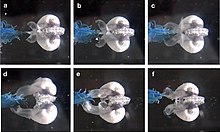


The Sargasso Sea, located in the subtropical North Atlantic gyre, is one of the most well-known ocean surface ecosystems on the planet. It supports numerous ecologically and economically important fish species, juvenile turtles, and endemic species. However, in addition to the floating algae Sargassum from which the sea derives its name, numerous floating neustonic animals also live at the surface, yet their basic natural history remains poorly known. Without the basic knowledge of these species, understanding ecosystem function, food webs, and pollution impacts is impossible. This is especially problematic because pollutants like plastic are now increasing at the surface at alarming rates. This study examines the diet, reproduction, and behavior of four neustonic animal species: Velella velella, Janthina janthina, Janthina pallida and Glaucus atlanticus. All mollusk species showed unique predatory preferences and behaviors, indicating possible methods of niche partitioning among these species. For example, Glaucus atlanticus showed an equal preference for all prey but preyed primarily by crawling below to consume the underside of prey, while large J. janthina often preyed more on the margin of V. velella and P. physalis, in contrast, J. pallida only preyed on V. velella. Of the four species observed, two reproduced in the lab (G. atlanticus and V. velella), and the embryo cases of J. pallida were examined from both collected snails and discarded bubble rafts. High fecundity rates were observed in all species, which may be an adaptation to high loss rates. This study lays the groundwork for future research on neustonic animals in the Sargasso Sea.[1]
Organisms that live on the ocean’s surface—termed neuston (or sometimes pleuston)—are adapted to survive in this razor-thin environment. Concentrated neustonic life is the foundation of the Sargasso Sea: a floating ecosystem in the North Atlantic subtropical gyre. The Sargasso Sea is named after the floating neustonic Sargassum algae.[2][3] and serves as a haven for biodiversity in the open ocean. The Sargasso Sea is also a nursery ground for a variety of threatened and endangered organisms.[2][1]
Neustonic animals likely play an important role in the ecology of the Sargasso Sea. Neustonic animals include a variety of cnidarians, (the most prominent cnidarians are Velella, Physalia, and Porpita), Janthina snails and Glaucus nudibranchs), and crustaceans (barnacles, copepods, shrimp, and isopods), among other organisms like fish larvae and open-ocean insects.[1] Many neustonic animals possess special buoyancy structures that allow them to remain at the surface and most are blue or purple to blend into the surface habitat. Neustonic species often have little control over their direction of movement and instead rely on the wind and currents for transport. This lack of mobility may concentrate neustonic animals within the Sargasso Sea, like the neustonic algae Sargassum.[1]
A wide variety of predators rely on neustonic animals. Neuston are important prey for turtles,[4][5][6] diverse seabirds,[7] and a variety of fish species.[1] Neuston in turn consume pelagic prey like copepods, fish eggs and larvae, and gelatinous zooplankton.[8][9][10] And pelagic life cycle stages of some neustonic animals may further trophically link the surface to deeper water.[1] However, we know very little about the biology of neustonic animals in general or in the Sargasso Sea in particular. This makes it difficult to assess their role in the health of the Sargasso Sea ecosystem. This is especially true now, as massive amounts of floating plastic become concentrated in this area, occupying the same surface layer where neuston live.[11][12][13][14][1]
In March 2020, the author examined the natural history, including feeding biology, reproductive biology, and behavior, of neustonic animals in the Sargasso Sea (Fig. 1). The author observed species-specific predator-prey interactions, high rates of reproduction that may have evolved to hedge against patchy resources, and unique behaviors producing ephemeral habitat at the surface.[1]
Dietary niche separation
[edit]Floating marine organisms occupy an incredibly narrow habitat range with little control over their direction of movement; for most species, prey is not pursued but encountered haphazardly. Dietary specialization of closely related species may allow different species to co-occur in this environment without competition (Bieri 1966, 1970). This is the first study to show evidence for niche partitioning of neustonic mollusks in the Sargasso Sea. Despite co-occurring in the same region, J. pallida and J. janthina appear to prefer different prey. While J. janthina preyed upon Physalia sp. and V. velella, J. pallida appears behaviorally adapted to prey on V. velella and did not prey upon Physalia sp. These results are similar to those by Bieri (1966) who observed that J. prolongata in the eastern North Pacific prefer V. velella and P. porpita but do not prey upon Physalia sp.[1]
For both G. atlanticus and Janthina spp., consuming only part of a prey item was more common than full consumption. Both J. pallida and J. janthina preyed largely on the margins of their prey, which is consistent with observations by Bieri for J. prolongata (Bieri 1966). While G. atlanticus preyed upon both species of cnidarians, unlike J. pallida and J. janthina, it also often crawled under prey to feed on central zooids. Bieri (1966) also observed Glaucus much more actively feeding on gastrozooids compared to margin tissue.[1]
Differences between Janthina and Glaucus in the region of prey on which they feed may create further niche partitioning. This difference may be due to differences in the floating mechanism or prey defense. Glaucus atlanticus holds swallowed air in its stomach (Lalli and Gilmer 1989), while Janthids build bubble rafts and cannot swim (Wilson 1956). This makes crawling under prey considerably riskier for Janthids. Differences in the prey region consumed may also be due to defenses by V. velella and Physalia. After being attacked by J. pallida, V. velella appeared to produce a mysterious antipredator barrier that prevented J. pallida from getting close again. While this may inhibit Janthids from prolonged feeding, G. atlanticus can “grab” onto prey using cerata, potentially rendering these barriers less effective. For these reasons (and likely others), G. atlanticus is able to take advantage of central zooids that it must crawl underneath to eat, while Janthids may be more likely to prey upon the margins. However, these results should also be considered in light of possible ontogenetic shifts. Small Janthinds have been reported to crawl on much larger prey and eat below the margin (Bieri 1966). If they disturb their prey’s float or are too heavy for their prey, both will sink. Further work should examine how predation changes over development and across species of different sizes.[1]
Reproduction and implications for connectivity and dispersal
[edit]The surface habitat is distinct from both pelagic and benthic environments, sharing qualities of each but not fully analogous to either. The surface is a barrier, similar to the benthos, but less rigid and with no fixed position. For this reason, animals at the surface likely evolved unique life histories distinct from both benthic and pelagic species. In this study, the reproduction of three neustonic species was examined. Both J. pallida and G. atlanticus produced large numbers of embryos (though only the rate of G. atlanticus was measured), and V. velella produced variable numbers of medusae depending on conditions.[1]
All three species observed here have nonmobile surface stages at the mercy of currents, waves, and weather. These species may be aggregated into patchy distributions or spread over large distances. This is a remarkable challenge specifically for predators J. pallida and G. atlanticus, which cannot seek out prey. A high number of larvae for J. pallida and G. atlanticus suggests a form of reproductive bet-hedging against these uncertain conditions. In fact, G. atlanticus has high fecundity compared even to similarly sized benthic eolid nudibranchs (Ross and American 1990). Perhaps unsurprisingly, the rate of embryo production in G. atlanticus is dependent on food availability: after several days without food embryo production decreases (Ross and American 1990).[1]
Similar to the species observed here, the European eel (Anguilla anguilla), which migrates to spawn in the Sargasso Sea, also has an extremely high fecundity rate, with millions of eggs being produced by a single eel female (MacNamara and McCarthy 2012). However, this species is still in precipitous decline and listed as critically endangered. High reproduction rates of Sargasso Sea organisms may provide some bet-hedging in undisturbed systems, but they may still be vulnerable to human impacts.[1]
According to Ross and American (1990), embryonic development of G. atlanticus takes about 3 days at 19 °C, and larvae have been kept for over a week in captivity before eventually dying without metamorphosis. Their healthy development at 19 °C is a clue to their oceanic habitat: if G. atlanticus embryos sank below the thermocline before completing embryogenesis, development may require cooler conditions. However, tolerance to sea surface temperatures suggests they can, at least, remain relatively shallow for an extended period. This may also be true for V. Velella. Some studies have reported V. velella medusae and larvae in deep water (however, they used a net that remained open while descending and ascending (Woltereck 1904)), while others have found medusae near the surface and propose an epipelagic distribution (Larson 1980). The negative gravitropism of several-day-old medusae, observed here, suggests they do occupy the epipelagic, at least during some times of the day or during specific stages of development. This is consistent with the presence of symbiotic zooxanthellae in medusae (Larson 1980), which could provide nutrients in prey-depleted oligotrophic waters. In fact, the mouths of young medusae may not fully develop for several days after liberation (Brinckmann-Voss 1970), resulting in young medusae being reliant on the zooxanthellae for sustenance. Future studies should look for evidence of changes in gravitropism throughout a 24-h cycle and at different ages, as well as the presence of medusae and larvae in samples from different depths.[1]
Janthina pallida larvae are poorly known. Embryos of most Janthids remain affixed to the float through development, tying their fate to ocean surface conditions. However, the potential positive gravitropism of newly hatched veligers observed here suggests they may retreat into deeper water (though perhaps still epipelagic). However, a more focused study of this should be conducted to confirm. Regardless of their larval habitat in the pelagic zone, at some point during development, these planktotrophic larvae return to the surface, possibly aided by a small secreted mucous net or string of bubbles (Wilson 1956; Lalli and Gilmer 1989).[1]
Very little is known about the temporal and spatial dynamics of floating neustonic animals. Some seasonality has been suggested for V. velella off the California coast (Bieri 1977), though this may also (or instead) be due to seasonal changes in wind or currents. If neustonic species do exhibit seasonality, presumably, V. velella and Physalia sp. would recruit ahead of or concurrent with their predators J. pallida and G. atlanticus, unless some or all species persist across seasons. And V. velella and J. pallida must be present before any organism that might utilize their floating substrates can proliferate (see section “Habitat construction”).[1]
Habitat construction
[edit]Janthina snails may appreciably contribute to floating temporary habitats in the open ocean. The rapid rate of new raft construction and the abandonment of floating unoccupied rafts could aid in larval dispersal and generate substrate for rafting organisms or facultative neuston. One of the two unoccupied rafts collected in this study was being used by a neustonic shrimp, and upon return to the lab, was later utilized by an Idotea metallica isopod. However, these rafts are among the most inconspicuous objects on the high seas: literal collections of bubbles that may go unnoticed even in neuston net samples. Their firm rubbery texture and inflexible movement on the waves are the only things that distinguish them from sea foam.[1]
In addition to floating Janthid rafts, the skeletal floats of V. Velella are also buoyant, and neustonic and rafting barnacles settle on them. Although most V. velella were not fully consumed, a single G. atlanticus cleared a small V. velella overnight, with only the floating skeleton remaining. High lethal predation on V. velella may create substrates for additional rafting organisms and neuston to use.[1]
We know very little about the biology and ecology of surface marine life. This study presents new information about the basic biology, predation, reproduction, and behavior of neustonic animal species in the Sargasso Sea.[1]
The Sargasso Sea is a critical habitat in the North Atlantic, including for commercial and endemic species, juvenile turtles, endangered eels, and countless other organisms that utilize this habitat at various times in their life history. Understanding the biology and ecology of neustonic species is critical to our understanding of broader ocean connectivity and food web dynamics. This study suggests that predatory niche partitioning, high fecundity rates, and habitat construction may be important features of neustonic animal biology.[1]
References
[edit]- ^ a b c d e f g h i j k l m n o p q r s t u v w x y z . doi:10.1007/s12526-021-01233-5.
{{cite journal}}: Cite journal requires|journal=(help); Missing or empty|title=(help) Material was copied from this source, which is available under a Creative Commons Attribution 4.0 International License Cite error: The named reference "Helm2021" was defined multiple times with different content (see the help page).
Material was copied from this source, which is available under a Creative Commons Attribution 4.0 International License Cite error: The named reference "Helm2021" was defined multiple times with different content (see the help page).
- ^ a b Trott TM, Mckenna SA, Pitt JM et al (2011) E "Efforts to enhance protection of the Sargasso Sea". Proceedings of the 63rd Gulf and Caribbean Fisheries Institute, 282–288.
- ^ Pendleton L, Krowicki F, Strosser P, Hallett-Murdoch J (2014) "Assessing the economic contribution of marine and coastal ecosystem services in the Sargasso Sea". Nicholas Institute for Environmental Policy Solutions, Duke University
- ^ . doi:10.1007/s00227-001-0737-x.
{{cite journal}}: Cite journal requires|journal=(help); Missing or empty|title=(help) - ^ Parker DM, Cooke WJ, Bulletin GBF, 2005 (2003) "Diet of oceanic loggerhead sea turtles (Caretta caretta) in the central North Pacific". Fish Bull, Natl Ocean Atmos Adm, 103: 142–152.
- ^ . doi:10.1007/s00227-015-2738-1.
{{cite journal}}: Cite journal requires|journal=(help); Missing or empty|title=(help) - ^ Harrison CS, Hida TS, Seki MP (1983) ""Hawaiian seabird feeding ecology"". Wildlife Monograph, 85: 3–71
- ^ Bieri R (1961) "Post-larval food of the pelagic coelenterate, Velella lata", Pac Sci, 15: 553–556
- ^ Purcell JE (1984) "Predation on larval fish by Portuguese man of war, Physalia physalis". Mar Ecol Prog Ser, 19: 189–191
- ^ . doi:10.1007/s10750-012-1052-x.
{{cite journal}}: Cite journal requires|journal=(help); Missing or empty|title=(help) - ^ . doi:10.1126/science.175.4027.1240.
{{cite journal}}: Cite journal requires|journal=(help); Missing or empty|title=(help) - ^ . doi:10.1016/0025-326X(82)90038-8.
{{cite journal}}: Cite journal requires|journal=(help); Missing or empty|title=(help) - ^ Siuda A (2011) "Summary of Sea Education Association", Long-term Sargasso Sea Surface Net Data.
- ^ . doi:10.1007/s00227-014-2539-y.
{{cite journal}}: Cite journal requires|journal=(help); Missing or empty|title=(help)
Portuguese man o' war
[edit]-
Looking down from above a man o' war, showing its sail. Sails can be left-handed or right-handed.
-
A typical square-rigged caravel (Livro das Armadas)]]
References
[edit]Zooplankton vertical migration
[edit]- Bandara, Kanchana; Varpe, Øystein; Wijewardene, Lishani; Tverberg, Vigdis; Eiane, Ketil (2021-05-04). "Two hundred years of zooplankton vertical migration research". Biological Reviews. 96 (4). Wiley: 1547–1589. doi:10.1111/brv.12715. ISSN 1464-7931.
 Material was copied from this source, which is available under a Creative Commons Attribution 4.0 International License.
Material was copied from this source, which is available under a Creative Commons Attribution 4.0 International License.
Spermbot
[edit]
Symbioses of cyanobacteria
[edit]- in marine environments
Cyanobacteria are a diversified phylum of nitrogen-fixing, photo-oxygenic bacteria able to colonize a wide array of environments. In addition to their fundamental role as diazotrophs, they produce a plethora of bioactive molecules, often as secondary metabolites, exhibiting various biological and ecological functions to be further investigated. Among all the identified species, cyanobacteria are capable to embrace symbiotic relationships in marine environments with organisms such as protozoans, macroalgae, seagrasses, and sponges, up to ascidians and other invertebrates. These symbioses have been demonstrated to dramatically change the cyanobacteria physiology, inducing the production of usually unexpressed bioactive molecules. Indeed, metabolic changes in cyanobacteria engaged in a symbiotic relationship are triggered by an exchange of infochemicals and activate silenced pathways. Drug discovery studies demonstrated that those molecules have interesting biotechnological perspectives. In this review, we explore the cyanobacterial symbioses in marine environments, considering them not only as diazotrophs but taking into consideration exchanges of infochemicals as well and emphasizing both the chemical ecology of relationship and the candidate biotechnological value for pharmaceutical and nutraceutical applications.[2]
Cyanobacteria are a wide and diversified phylum of bacteria capable of photosynthesis. They are found in symbiosis with a remarkable variety of hosts, in a wide range of environments (Figure 1). Symbiotic relationships concern advantages and disadvantages for the organisms involved. Symbiosis, indeed, can be advantageous for only one of the involved organisms (commensalism, parasitism), or for both (mutualism) [1]. Symbiotic interactions are widespread and involve organisms among life domains, in both Eukaryota and Prokaryota (Archaea and Bacteria). Among prokaryotes, various species have been demonstrated to be associated with invertebrates such as sponges [2,3], corals [4,5,6,7], sea urchins [8], ascidians [9,10], and mollusks [11,12,13]. In addition, symbiotic relationships between bacteria and various microorganisms such as Retaria [14,15], Myzozoa [16], Ciliophora, and Bacillariophyceae [17] were investigated in the frame of the peculiar N2 fixing process performed by various associated prokaryotes. In fact, cyanobacteria are able to perform nitrogen fixation and, among all the symbiotic interactions they are able to establish, the nitrogenase products represent the major contribution to the partnership [18]. Nitrogen-fixing organisms are often called diazotrophs and their diazotroph-derived nitrogen (DDN) gives their hosts the advantage to populate nitrogen-limited environments [19,20]. Cyanobacterial symbionts (also named cyanobionts) are active producers of secondary metabolites and toxins [21], able to synthesize a large array of bioactive molecules, such as photoprotective and anti-grazing compounds [4,22]. In addition, cyanobionts have the advantage to be protected from environmental extreme conditions and from predation/grazing. In parallel, hosting organisms grant enough space to cyanobionts for growing at low competition levels. Several investigations demonstrated an influence of host organisms on the production of cyanobiont secondary metabolites, as in the case of the symbiotic interaction of Nostoc cyanobacteria with the terrestrial plant of Gunnera and Blasia genera [23]. Indeed, changes in the expression of secondary metabolites, as in the cases of the cyanobacterial nostopeptolide synthetase gene and the altered secretion of various nostopeptolide variants, were recorded in Nostoc punctiforme according to the presence of the host [24]. Changes in the metabolic profiles have probably a clear role in the formation of cyanobacterial motile filaments (hormogonia) and, most probably, they affect the infection process and the symbiotic relationship itself [24]. This suggests that cyanobacterial secondary metabolites may play a key role in host–cyanobacterium communications.[2]
There are lines of evidence that cyanobionts produce novel compounds of interest to pharmaceutical research [25,26], exhibiting cytotoxic and antibacterial activities. Some of these molecules are produced by cyanobacteria only in a symbiotic relationship, as in the case of polyketide nosperin (Figure 2) [27].[2]
Cyanobacteria are capable of establishing various types of symbiosis, with variable degrees of integration with the host, and probably symbiosis emerged independently with peculiar characteristics [28,29,30]. Symbionts are transferred to their hosts by a combination of vertical and horizontal transmission, with some strains passed down from ancestral lineage, while others are acquired by the surrounding environment [31]. However, cyanobacteria are less dependent on the host than other diazotrophs, such as rhizobia, due to the presence of specialized cells (i.e., heterocysts) and a cellular mechanism to reduce the oxygen concentration in the cytosol [32]. Nostoc species are heterocystic nitrogen-fixing cyanobacteria, producing motile filaments called hormogonia, and are considered the most common cyanobacteria in symbiotic associations [33,34]. The ability of diazotrophs cyanobacteria to fix nitrogen through various oxygen-sensitive enzymes, such as molybdenum nitrogenase (nifH), vanadium nitrogenase (vnfH), and iron-only nitrogenase (anfH), is a key point to fully understand the relationships between cyanobionts and their hosts [28].[2]
Multicellular organisms coevolved with a plethora of symbiotic microorganisms. These associations have a crucial effect on the physiology of both [35] and, in some cases, the host-associated microbiota can be considered as a meta-organism forming an intimate functional entity [36]. This means that there are coevolutive factors that led to the evolution of signals, receptors, and infochemicals among the organisms involved in symbiosis. Host–symbionts communication, based on this complex set of dose-dependent [37] and evolutionarily evolved [38] infochemicals, influences many physiological aspects of symbiosis; some examples are the microbiota composition, defensive mechanisms, development, morphology, and behavior (Figure 3) [39]. The main interactions occurring between cyanobacteria and host organisms are summarized in Table 1.[2]
Protists
[edit]Photosynthetic eukaryotes are the product of an endosymbiotic event in the Proterozoic oceans, more than 1.5 billion years ago [86,87]. For this reason, all eukaryotic phytoplankton can be considered an evolutive product of symbiotic interactions [87] and the chloroplast, as the remnant of an early symbiosis with cyanobacteria [86]. Nowadays, the associations among these unicellular microorganisms range from simple interactions among cells in close physical proximity, often termed “phycosphere” [88], to real ecto- and endosymbiosis. The study of these associations is often neglected, partially because symbiotic microalgae and their partners show an enigmatic life cycle. In most of these partnerships, it is unclear whether the relationships among partners are obligate or facultative [89]. The symbiotic associations between cyanobacteria and planktonic unicellular eukaryotes, both unicellular and filamentous, are widespread, in particular in low-nutrient basins [89]. It is assumed that cyanobacteria provide organic carbon through photosynthesis, taking advantage of the special environmental conditions offered by the host. In contrast, some single-celled algae are in symbiotic association with diazotrophic cyanobacteria, providing nitrogen-derived metabolites through N2 fixation [90]. This exchange is important for nitrogen acquisition in those environments where it represents a limiting factor, both in terrestrial and in aquatic systems, as well as in open oceans [91]. In fact, in marine environments, cyanobacteria are associated with single-celled organisms such as diatoms, dinoflagellates, radiolarians, and tintinnids [52,92]. The exchange of nitrogen between microalgae and cyanobacterial symbionts, although important, is probably flaked by other benefits such as the production of metabolites, vitamins, and trace elements [49,93]. In fact, available genomic sequences indicate bacteria, archaea, and marine cyanobacteria as potential producers of vitamins [94], molecules fundamental in many symbiotic relationships. Moreover, about half of the investigated microalgae have to face a lack of cobalamin, and other species require thiamine, B12, and/or biotin [95,96]; these needs may be satisfied, in many cases, by the presence of cyanobionts [97].[2]
The first case described of marine planktonic symbiosis was represented by the diatom diazotrophic associations (DDAs) among diatoms and filamentous cyanobacteria provided of heterocysts [98]. Although this kind of interaction is the most studied, little is known about the functional relationships of the symbiosis. Recent studies are mainly focused on the symbiotic relationships between the diazotroph cyanobacteria Richelia intracellularis and Calothrix rhizosoleniae with several diatom partners, especially belonging to the genera Rhizosolenia, Hemiaulus, Guinardia, and Chaetoceros [18,40]. The location of the symbionts varies from externally attached to partially or fully integrated into the host [41]. Indeed, it has been demonstrated through molecular approaches that morphology, cellular location, and abundances of symbiotic cyanobacteria differ depending on the host and that the symbiotic dependency and the location of the cyanobionts R. intracellularis and C. rhizosoleniae seems to be linked to their genomic evolution [99]. In this regard, it was demonstrated a clear relationship between the symbiosis of diatom–cyanobacteria symbiosis and the variation of season and latitude suggesting that diatoms belonging to the genus Rhizosolenia and Hemiaulus need a symbiont for high growth rates [40]. The reliance of the host seems closely related to the physical integration of symbionts: endosymbiotic relationships are mainly obligatory, while ecto-symbiosis associations tend to be more facultative and/or temporary [89]. Another interesting cyanobacteria–diatoms symbiosis involves the chain-forming diatom Climacodium frauenfeldianum, common in oligotrophic tropical and subtropical waters [100]. In this case, diatoms establish symbiotic relationships with a coccoid unicellular diazotroph cyanobacterial partner that is similar to Crocosphaera watsonii in morphology, pigmentation, and nucleotide sequence (16S rRNA and nifH gene) [41]. In addition, it has been demonstrated that nitrogen, fixed by cyanobionts is transferred to diatom cells [90]. Occasionally, C. watsonii has been reported as symbiotic diazotroph in other marine chain-forming planktonic diatoms, such as those belonging to the genera Streptotheca and Neostrepthotheca [42]. One of the most peculiar symbiosis is represented by the three-part partnership between the unicellular cyanobacterium Synechococcus sp., Leptocylindrus mediterraneus, a chain-forming centric diatom, and Solenicola setigera, an aplastidic colonial protozoa [43,44]. This peculiar association is cosmopolitan and occurs primarily in the open ocean and the eastern Arabian Sea; nevertheless, it remained poorly studied and exclusively investigated by means of microscopy techniques. Electron microscopy observations (SEM) reveal that in presence of S. setigera, the diatom can be apochlorotic (it lacks chloroplasts), thus offering refuge to the aplastidic protozoan, benefiting, and nourishing from the exudates it produces. It is assumed that the cyanobacterial partner, Synechoccus sp., supports the protozoan by supplying reduced nitrogen. It is also speculated that the absence of the cellular content of L. mediterraneus can be due to parasitism by S. setigera [44]. Recent studies reported a novel symbiotic relationship between an uncultivated N2-fixing cyanobacterium and a haptophyte host [45,46,47,48,49]. The host is represented by at least three distinctly different strains in the Braarudosphaera bigelowii group, a calcareous haptophyte belonging to the class of Prymnesiophyceae [101,102,103]. The cyanobiont, first identified in the subtropical Pacific Ocean through the analysis of nifH gene sequence, is UCYN-A or “Candidatus Atelocyanobacterium Thalassa,” formerly known as Group A. For many years, the lifestyle and ecology of this cyanobiont remained unknown, because cannot be visualized through fluorescence microscopy. Furthermore, the daytime maximum nifH gene expression of UCYN-A opposite with respect to unicellular diazotroph organisms [104,105]. The entire genome of the UCYN-A cells was sequenced, leading to the discovery of the symbiosis: the genome is unusually small (1.44 Mbp) and revealed unusual gene deletions, suggesting a symbiotic life history. Indeed, the genome completely lacks some metabolic pathways, oxygen-evolving photosystem II (PSII), RuBisCo for CO2 fixation, and tricarboxylic acid (TCA), revealing that the cyanobiont could be a host-dependent symbiont [47,48].[2]
Symbiotic relationships include interactions between cyanobacteria and nonphototrophic protists. Heterotrophic protists include nonphotosynthetic, photosynthetic and mixotrophic dinoflagellates, radiolarians, tintinnidis, silicoflagellates, and thecate amoebae [51,52,92,106,107]. In dinoflagellates, cyanobionts were observed using transmission electron microscopy with evidence of no visible cell degradation, the presence of storage bodies and cyanophycin granules, nitrogenase, and phycoerythrin (confirmed by antisera localization), confirming that these cyanobionts are living and active and not simple grazed prey [52,108,109]. In addition, these cyanobionts are often observed with coexisting bacteria, suggesting a potential tripartite symbiotic interaction [52,109]. A cyanobiont surrounding the outer sheath was observed in rare cases, suggesting an adaptation to avoid cell degradation in symbiosis [52]. Despite the presence of N2 fixing cyanobacteria, molecular analyses demonstrated the presence of a vast majority of phototrophic cyanobionts with high similarity to Synechococcus spp. and Prochlorococcus spp. [50,51]. The complex assemblage of cyanobacteria and N2 fixing proteobacteria suggests a puzzling chemical and physiological relationship among the components of symbiosis in dinoflagellates, with an exchange of biochemical substrates and infochemicals, and the consequent coevolution of mechanisms of recognition and intracellular management of the symbionts. In tintinnid, ciliates able to perform kleptoplastidy, epifluorescent observations of Codonella species demonstrated the presence of cyanobionts, with high similarities with Synechococcus, in the oral grove of the lorica and, in addition, the presence of two bacterial morphotypes [52]. In radiolarians (Spongodiscidae Dictyocoryne truncatum), the presence of cyanobionts has been demonstrated, initially identified as bacteria or brown algae [110,111]. In addition, several non-N2-fixing cyanobionts have been identified using autofluorescence, 16s rRna sequence, and cell morphology, resembling Synecococcus species [51,52]. In agreement with associations observed in dinoflagellates, mixed populations of cyanobacteria and bacteria are common in radiolarian species, although their inter-relationship is still unknown.[2]
Macroalgae and seagrasses
[edit]Mutual symbioses between plants and cyanobacteria have been demonstrated in macroalgae and seagrasses, as is the case of Acaryochloris marina and Lynbya sp., in which cyanobacteria contribute to the epiphytic microbiome of the red macroalgae Ahnfeltiopsis flabelliformis [53] and Acanthophora spicifera [54], respectively. Epiphytic relationships have been demonstrated as well with green and brown algae [112]. In Codium decorticatum, endosymbionts cyanobacteria belonging to genera Calothrix, Anabaena, and Phormidium, have been shown to fix nitrogen for their hosts [55,56]. Cyanobacteria are also common as seagrass epiphytes, for example, on Thalassia testudinum, where organic carbon is produced by cyanobacteria and other epiphyte symbiotic organisms rather than the plant itself [57,58]. In many cases, the presence of phosphates stimulates the cyanobionts growth on seagrasses and other epiphytes [113,114]. In oligotrophic environments, nitrogen-fixing cyanobacteria are advantaged against other seagrass algal epiphytes [115], and these cyanobacteria may contribute to the productivity of seagrass beds [116]. In addition, a certain level of host specificity can be determined in many plant–cyanobacteria symbioses [59], for example, among heterocystous cyanobacteria such as Calothrix and Anabaena, and the seagrass Cymodocea rotundata. A few cyanolichens live in marine littoral waters [92], and they play a role in the trophism of Antarctic environments, where nitrogen inputs from atmospheric deposition are low [117,118,119].[2]
Sponges
[edit]Marine sponges are among the oldest sessile metazoans, known to host dense microbial communities that can account for up to 40–50% of the total body weight [31]. These microbial communities are highly species-specific, and characterized by the presence of several bacterial phyla; cyanobacteria constitute one of the most important groups [120,121,122]. Sponges with cyanobionts symbionts can be classified as phototrophs when they are strictly depending on symbionts for nutrition or mixotrophs when they feed also by filter feeding [92]. These “cyanosponges” are morphologically divided into two categories—the phototrophs present a flattened shape, while the mixotrophs have a smaller surface area to volume ratio [29]. Cyanobacteria are located in three main compartments in sponges: free in the mesohyl, singly or as pairs in closed-cell vacuoles, or aggregated in large specialized “cyanocytes” [123]. Their abundance decreases away from the ectosome, while it is null in the endosome of the sponge host [124]. Cyanobacteria belonging to the genera Aphanocapsa, Synechocystis, Oscillatoria, and Phormidium are usually found in association with sponges and most species are located extracellularly, while others have been found as intracellular symbionts benefiting sponges through fixation of atmospheric nitrogen [92]. Indeed, some cyanobacteria located intracellularly within sponges showed to own nitrogenase activity [124]. Most of the sponges containing cyanobionts, however, are considered to be net primary producers [125]. Cyanobacteria in sponges can be transmitted vertically (directly to the progeny) or horizontally (acquired from the surrounding environment), depending on the sponge species [29]. For instance, the sponge Chondrilla australiensis has been discovered to host cyanobacteria in its developing eggs [126]. Caroppo et al., instead, isolated the cyanobacterium Halomicronema metazoicum from the Mediterranean sponge Petrosia ficiformis, which has been later found as a free organism and isolated from leaves of the seagrass Posidonia oceanica [119,127], highlighting that horizontal transmission of photosymbionts can occur in other sponge species [128]. Cyanobacteria associated with sponges are polyphyletic and mostly belonging to Synechoccoccus and Prochlorococcus genera [129]. Synechococcus spongiarum is one of the most abundant symbionts found in association with sponges worldwide [130,131]. In some cases, however, the relationship between symbionts and host sponges can be controversial. Some Synechococcus strains seem to be mostly “commensals”, whereas symbionts from the genus Oscillatoria are involved in mutualistic associations with sponges [3,132]. In the past, many researchers performed manipulative experiments to demonstrate the importance of cyanobacteria associations for the metabolism of the host [3,128,133]. A case study from Arillo et al. performed on Mediterranean sponges revealed that Chondrilla nucula, after six months in the absence of light, displayed metabolic collapse and thiol depletion [63]. This highlights that symbionts are involved in controlling the redox potential of the host cells transferring fixed carbon in the form of glycerol 3-phosphate and other organic phosphates. Instead, Petrosia ficiformis, which is known to live in association with the cyanobacterium Aphanocapsa feldmannii [62], showed the capability to perform heterotrophic metabolism when transplanted in dark conditions [63]. In some tropical environments, the carbon produced by cyanobionts can supply more than 50% of the energy requirements of the sponge holobiont [122]. Cyanobacteria, moreover, can contribute to the sponge pigmentation and production of secondary metabolites (e.g., defensive substances) [134], as in the case of the marine sponge Dysidea herbacea [64]. Thus, symbiotic associations could result in the production of useful compounds with biotechnological potential [134,135]. Meta-analysis studies on sponge–cyanobacterial associations revealed that several sponge classes could host cyanobacteria, although most of the knowledge in this field remains still unknown, and mostly hidden in metagenomics studies [136]. Sponge-associated cyanobacteria hide a reservoir of compounds with biological activity, highlighting an extraordinary metabolic potential to produce bioactive molecules for further biotechnological purposes [137].[2]
Cnidarians
[edit]It is widely accepted that reef environments rely on both internal cycling and nutrient conservation to face the lack of nutrients in tropical oligotrophic water [138]. A positive ratio in the nitrogen export/input between coral reefs and surrounding oceans has been observed [139,140]. Tropical Scleractinia are able to obtain nitrogen due to various mechanisms that include the endosymbiont Symbiodinium [141], the uptake of urea and ammonium from the surrounding environment [142], predation and ingestion of nitrogen-rich particles [143,144,145,146], or diazotrophs itself through heterotrophic feeding [147] and nitrogen fixation by symbiotic diazotrophic communities [4,7,68,69,73,148]. In addition to nitrogen fixation, coral-associated microbiota performs various metabolic functions in carbon, phosphorus, sulfur, and nitrogen cycles [74,149,150,151]; moreover, it plays a protective role for the holobiont [152,153,154], possessing inhibitory activities toward known coral pathogens [155]. These complex microbial communities that populate coral surface mucopolysaccharide layers show a vertical stratification of population resembling the structure of microbial mats, with a not-dissimilar flux of organic and inorganic nutrients [156]. It is reasonable to believe that microbiota from all the compartments, such as tissues and mucus, can contribute to the host fitness and interact with coral in different ways, ranging from the direct transfer of fixed nitrogen in excess to the ingestion and digestion of prokaryotes [20]. Diazotrophs, and in particular cyanobionts, are capable of nitrogen fixation and they can use glycerol, produced by zooxanthellae, for their metabolic needs [4,73]. The relationship between corals and cyanobacteria is yet to be fully explored and understood but some lines of evidence regarding Acropora millepora [69,70] suggest coevolution between corals and associate diazotrophs (cyanobionts). This relationship appears to be highly species-specific. In hermatypic corals, a three-species symbiosis can be observed, with diazotrophs in direct relation with Symbionidium symbiont. In Acropora hyacinthus and Acropora cytherea, cyanobacteria-like cells, characterized by irregular layered thylakoid membranes and with a remarkable similarity to the ones described by previous authors [4], were identified in strict association with Symbiodinium, within a single host cell, especially in gastrodermal tissues [67]. The high density of these cells closely associated with Symbiodinium suggests that the latter is the main user of the nitrogen compounds produced by the cyanobacterium-like cells. The presence of these cyanobacterium-like cells is more widespread than assumed in the past and this symbiosis was found in many geographic areas, for example, in the Caribbean region and the Great Barrier Reef [67].[2]
Microbial communities inhabiting the coral surface can greatly vary due to environmental conditions [147,157,158]. Diazotroph-derived nitrogen assimilation by corals varies on the basis of the autotrophic/heterotrophic status of the coral holobiont and with phosphate availability in seawater. Consequently, microbial communities increase when corals rely more on heterotrophy or when they live in phosphate-rich waters [147]. This suggests that diazotrophs can be acquired and their population managed according to the needs of corals [159]. This view was confirmed by the identification of a first group of organisms that form a species–specific, temporarily, and spatially stable core microbiota and a second group of prokaryotes that changes according to environmental conditions and in accordance with the host species and physiology state [160]. Experimental lines of evidence, using N2-labelled bacteria, demonstrated that diazotrophs are transferred horizontally and very early in the life cycle, and it is possible to identify nifH sequences, in larvae and in one-week-old juveniles [70], and in adult individuals [69] of the stony coral Acropora millepora. About coral tissues, the distribution of microbiota, and cyanobacteria as well, is not the same in all the tissue districts. Species that live in the mucus resemble the species variety and abundance that can be found in the surrounding water. On the contrary, the microbiota of internal tissues including also calcium carbonate skeletons is made, at least partially, of species that cannot be easily found free in the environment [68,69]. This plasticity might as well characterize cyanobacteria hosted in cnidarians, although such multiple relationships are still scarcely investigated.[2]
Synechococcus and Prochlorococcus cyanobacteria have been identified in association with Montastraea cavernosa [4], through molecular approaches and genes belonging to filamentous cyanobacteria [6]. Filamentous and unicellular diazotrophic cyanobacteria belonging to the orders Chroococcales, Nostocales, Oscillatoriales, and Proclorales were found, using pyrosequencing approach, as associated organisms to the shallow water coral Porites astreoides [6] and Isopora palifera [71]. On the contrary, in Montipora flabellate, Montipora capitate [7], Acropora millepora [69,70], Acropora muricate, and Pocillopora damicornis [69], cyanobacteria are present in various tissues and in the skeleton, but their contribution in terms of nitrogen fixation is minimal [5]. In Montastraea cavernosa, Montastraea franksi, and in species of the genus Diploria and Porites, cyanobacterial sequences belonging to various genera (e.g., Anabaena, Synechoccus, Spirulina, Trichodesmium, Lyngbya, and Phormidium) have been found in coral tissues by PCR amplification [4,73,74,75,161]. In Montastraea cavernosa, the orange fluorescence protein, peaking at 580 nm, was attributed to phycoerythrin, a cyanobacterial photopigment produced by a cyanobacterium living in the host epithelial cells [4]. The different colors, especially of fluorescent proteins in corals, suggest specific biological functions for these compounds. Moreover, it is not clear if they act as photoprotective compounds, antenna pigments, or if they photoconvert part of the light spectrum to help zooxanthellae photosynthesis. These results are contested by some authors who excluded the role of phycoerythrin as a pigment compound in corals [5]. In order to determine the presence and the activity of cyanobacteria in corals, the following aspect should be considered: nonquantitative approaches cannot assure accurate values of abundance; moreover, the presence of nifH gene is not necessarily linked to the fixation and the transfer of nitrogen performed by diazotrophs. H [20]. Endolithic cyanobacteria have been found in Porites cylindrica and Montipora monasteriata, but their role in the relationship with host corals is unknown [162]. In contrast, in other cnidarians, it has been demonstrated that endolithic cyanobacteria establish symbiotic relationships with coral hosts: this is the case of Plectonema terebrans, a cyanobacterium belonging to the order Oscillatoriales [72]. Cold-water corals are ecosystem engineers providing a habitat for thousands of different species. Their trophism is related to the low energy, partially degraded, organic matter that derives from the photic zone of oceans [163]. To face the lack of nutrients, cold-water corals evolved, on one hand, from an opportunistic feeding strategy [164,165], and on the other hand, from a symbiosis with various diazotrophs, including cyanobacteria [166,167,168]. Plectonema terebrans filaments, visible as pinkish to violet staining, are able to colonize the entire skeleton of the cold-water corals Desmophyllum dianthus and Caryophyllia huinayensis; however, their density is higher at the skeleton portion covered with polyp tissue [72]. The close contact between coral tissues and cyanobacteria obliges the endoliths to exchange nutrients with the surrounding water through the polyp itself. This close relationship is advantageous for the cyanobacterium because the coral nematocysts protect it from the grazers [169], and it is mutualistic because such a close relationship inevitably includes exchanges of metabolites between organisms [170]. These metabolites produce benefits for the host and play a trophic and/or protective role in the symbiotic mutualistic relationship. Middelburg et al. suggested that in cold-water corals, a complete nitrogen cycle occurs similar to that inferred for tropical reefs, ranging from ammonium production and assimilation to nitrification, nitrogen fixation, and denitrification [166].[2]
The effects of environmental changes on the nitrogen fixation rates are still poorly explored, especially if specifically related to the symbiotic diazotrophs and to cyanobacteria. Ocean acidification enhances nitrogen fixation in planktonic cyanobacteria, as in the case of Crocosphaera watsoni, due to enhancement of photosynthetic carbon fixation [171]. It is interesting to underline that in the planktonic diazotroph cyanobacterium Trichodesmium sp., which forms symbiotic association with diatoms [172], the nitrogen fixation is enhanced under elevated CO2 conditions [173], but it is strongly reduced if there is an iron limitation [174]. On the contrary, Seriatopora hystrix diazotrophs are sensible to ocean acidification, with a decline of the nitrogen fixation rate at high CO2 concentration, leading to consequences on coral calcification and potential starvation for both the coral and the Symbiodinium spp. [175]. In addition, environmental changes can increase in coral symbionts, the abundance of microbial genes involved in virulence, stress resistance, sulfur and nitrogen metabolisms, and production of secondary metabolites. These changes that affect the physiology of symbionts can also affect the composition of the coral-associated microbiota [74], with the substitution of a healthy-associated coral community (e.g., cyanobacteria, Proteobacteria), playing a key role in mediating holobiont health and survival upon disturbance [176], with a community related to coral diseases (e.g., Bacteriodetes, Fusobacteria, and Fungi).[2]
Ascidians and other tunicates
[edit]Tunicates are considered rich in biologically active secondary metabolites [177,178,179,180], but it is unclear if these bioactive compounds were produced by tunicates themselves or by associated microorganisms [181,182], although strong direct and indirect lines of evidence show that defensive compounds and other secondary metabolites are produced by various symbiotic prokaryotes and not by the tunicates themselves. Among tunicate symbionts, cyanobacteria have been found in symbiotic relationships with various tunicates, ranging from tropical to temperate environments. In fact, obligate associations with cyanobacteria of Prochloron and Synechocystis genus have been found in some species of ascidians belonging to the genera Didemnum, Lissoclinum, Diplosoma, and Trididemnum [77], with cyanobacterial cells distributed in the cavities and/or tunic [78]. These cyanobionts have been demonstrated to be part of the core microbiome, in which species and populations do not reserve the water–column ones and microbiome–host relationship is species specific and not correlated to the geographical location [9]. In colonial ascidians, such as Botryllus schlosseri and Botrylloides leachii, an abundant population of Synechococcus-related cyanobacteria have been identified [79], while in the Mediterranean ascidian Didemnum fulgens, a coral-associated cyanobacterium has been observed in its tissues [183]. In some cases, the cyanobiont completely or partially lacks the nitrogen-fixation pathway. This is the case of Prochloron didemni, in symbiosis with the tunicate Lissoclinum patella, which is probably involved in carbon fixation and in the ammonia incorporation and not in the nitrogen fixation [80,81]. In fact, in contrast with the presence of genes for the nitrate reduction pathway and all primary metabolic genes required for free-living, Prochloron seems to lack the capability to fix nitrogen and to live outside the host [80]. Prochloron sp. also protects the host versus active forms of oxygen, which can be formed during photosynthesis processes. The cyanobacterium produces a cyanide-sensitive superoxide dismutase, a Cu-Zn metalloprotein, that has been demonstrated to prevent the toxicity of superoxide radicals, hydrogen peroxide, and hydroxyl radicals in the host ascidians [82]. In Lissoclinum patella, other cyanobacteria were abundant in various tissues and one of these is Acaryochloris marina, a chlorophyll d-rich cyanobacterium, able to sustain oxygenic photosynthesis under near-infrared radiation that propagates through Prochloron cells and ascidian tissue [83]. The Caribbean tunicate Trididemnum solidum produces a peculiar biologically active molecule, the acyl-tunichlorine (Figure 2) [84,85], that contains both nickels accumulated by the tunicate and pheophytin, which is produced by organisms with photosynthetic machinery and suggests a dual origin of this compound. In fact, this tunicate hosts the cyanobacterium Synechocystis trididemni, which contributes to the production of acyl-tunichlorine synthesizing the pheophytin through an intermediate molecule, the pyropheophorbide [84,85]. In addition, behavioral tests demonstrated the presence of deterring compounds in ascidian larvae able to distaste predatory fishes. These compounds have been identified to be didemnin B (Figure 2) and nordidemnin [65]. Didemnin B was found in various tunicates, and it is similar to a bioactive molecule produced by other cyanobacteria, enforcing the idea that the predation-deterring compounds can be produced by cyanobionts [184], although the possibility of a horizontal gene transfer cannot be totally rejected [185,186]. The tunicate–cyanobacteria symbiosis is evidenced by the presence, in the host tunicate, of a cellulose synthase gene, similar to the one found in cyanobacteria, which probably derives from horizontal transfer between the two organisms [187,188] and that may have a role in the tunicates evolutive radiation and in the development of adult and larvae body plans [188,189,190]. The presence of a rich and bio-diversified microbiome makes tunicates promising models for various purposes and important for drug discovery [10,191].[2]
References
[edit]- ^ Khalil, Islam S. M.; Tabak, Ahmet Fatih; Abou Seif, Mohamed; Klingner, Anke; Sitti, Metin (2 November 2018). Borazjani, Iman (ed.). "Controllable switching between planar and helical flagellar swimming of a soft robotic sperm". PLOS ONE. 13 (11). Public Library of Science (PLoS): e0206456. doi:10.1371/journal.pone.0206456. ISSN 1932-6203.
{{cite journal}}: CS1 maint: unflagged free DOI (link) Material was copied from this source, which is available under a Creative Commons Attribution 4.0 International License.
Material was copied from this source, which is available under a Creative Commons Attribution 4.0 International License.
- ^ a b c d e f g h i j k l m n o Mutalipassi, Mirko; Riccio, Gennaro; Mazzella, Valerio; Galasso, Christian; Somma, Emanuele; Chiarore, Antonia; de Pascale, Donatella; Zupo, Valerio (16 April 2021). "Symbioses of Cyanobacteria in Marine Environments: Ecological Insights and Biotechnological Perspectives". Marine Drugs. 19 (4). MDPI AG: 227. doi:10.3390/md19040227. ISSN 1660-3397.
{{cite journal}}: CS1 maint: unflagged free DOI (link) Material was copied from this source, which is available under a Creative Commons Attribution 4.0 International License.
Material was copied from this source, which is available under a Creative Commons Attribution 4.0 International License.
Sea surface microlayer processes
[edit]As with other marine ecosystems, life in the SML is dominated by microorganisms, which are collectively referred to as the “neuston,” whereas “plankton” describes the microscopic organisms that inhabit the underlying water column. So far, most recent studies have focused on the diversity and abundance of bacterioneuston assemblages, principally through the application of molecular ecology tools (for a review see Cunliffe et al., 2011). The consensus view is that bacterioneuston assemblages form by recruitment from the underlying bacterioplankton; however, the species composition and activity of bacterioneuston assemblages can be very different compared to those in the underlying water column (Agogue et al., 2005; Franklin et al., 2005; Obernosterer et al., 2008; Stolle et al., 2011; Taylor et al., 2014). What exactly controls bacterioneuston species diversity is at present not fully understood, but evidence from both field observations (Cunliffe et al., 2009a) and large-scale mesocosm experiments (Cunliffe et al., 2009c) suggests that the development of bacterioneuston assemblages is ecologically regulated and not random (Cunliffe et al., 2011). Possible controls of bacterioneuston diversity and activity include the prevailing meteorological conditions, incident UV light, organic matter availability and aerosol deposition (Carlucci et al., 1985; Agogue et al., 2005; Stolle et al., 2010, 2011; Nakajima et al., 2013; Astrahan et al., 2016). It is, however, not clear whether solar and UV irradiance promote or inhibit neuston activity (Bailey et al., 1983; Carlucci et al., 1985; Santos et al., 2012).[1]
The bacterioneuston has been shown to directly influence air-sea gas exchange by consuming and producing trace gases (e.g., CO, H2, CH4, N2O) (Conrad and Seiler, 1988; Frost, 1999; Upstill-Goddard et al., 2003; Nakajima et al., 2013). The addition of methanotrophs in a laboratory gas exchange tank led to an enhancement of the apparent transfer velocity of CH4 by 12 ± 10% (Upstill-Goddard et al., 2003). Later work reported bacterial growth efficiency in the SML and underlying water to be similar, but also showed higher respiration in the SML that pointed to some potential control of the air-sea exchange of CO2 and O2 by the bacterioneuston (Reinthaler et al., 2008). Through the application of functional gene probes to a range of SML environments, the metabolic potential for trace gas cycling in the SML has since been established as being widespread (Cunliffe et al., 2008, 2011). It can therefore be concluded that for some trace gases such as CH4 and CO2, the bacterioneuston is intimately involved in their cycling and that it may potentially act as either a small gas source or sink in response to the prevailing microbial and biogeochemical conditions. The bacterioneuston may also modulate the enrichment of surfactants in the SML and thus indirectly influence air-sea gas exchange, as indicated by a recent study relating SML surfactant enrichment and the occurrence of specific bacterial taxa (Kurata et al., 2016).[1]
The second major biological component of SML ecosystems is phytoneuston, historically studied using microscopes (Hardy and Valett, 1981; Hardy, 1982), and more recently through high-throughput sequencing (Taylor and Cunliffe, 2014). High-throughput sequencing of phytoneuston assemblages in the coastal SML of the English Channel showed that biodiversity at the interface was very different to that in the underlying water (Taylor and Cunliffe, 2014). Two major algal groups, the chrysophytes and the diatoms, were significantly enriched in the neuston, with diatom diversity in particular being distinctly different to that of planktonic diatoms. While the functional impacts of the differences between phytoneuston and phytoplankton abundance and diversity are not yet fully understood, it is believed that specific processes such as the maintenance of air-sea CO2 disequilibria could be controlled, at least in part, by the phytoneuston (Calleja et al., 2005).[1]
Other components of SML ecosystems such as heterotrophic protists and zooneuston have also been studied, but to a lesser extent. Looking forward, the application of contemporary tools, such as high-throughput sequencing, hold great promise in revealing new insights into the biology of the SML. The recent English Channel study discussed above also showed that the diversity of neustonic fungi (myconeuston) is also distinctly different from mycoplankton diversity (Taylor and Cunliffe, 2014). Relative to other marine microbial groups, the marine fungi remain poorly understood. A recent study of the coastal mycoplankton implicated marine fungi in a range of ecosystem functions, including nutrient recycling and parasitism (Taylor and Cunliffe, 2016). Exactly what functional roles myconeuston may play at the ocean-atmosphere interface still remain to be revealed.[1]
Marine aerosols that are formed from the SML via bubble bursting are a vector for the transfer of microbial life from the lower water column and SML into the atmosphere. Measurements of bacteria and viruses in sea spray aerosols (SSA) show large enrichments relative to both the SML (~5) and subsurface waters (~10) (Aller et al., 2005). A key factor in this process appears to be the embedding of microorganisms within the organic gel matrix that forms in the SML (discussed further below) (Aller et al., 2005). The global-scale implications for ocean-atmosphere exchange of microorganisms are profound because this process may have a major impact on the long-distance dispersal of marine microbial life. For example, phytoplankton viruses that are transported into the atmosphere from the SML can remain highly infective under prevailing meteorological conditions and can be spread across hundreds of kilometers to subsequently infect distal phytoplankton (Sharoni et al., 2015).[1]
Organisms in the SML interact with the surface accumulation of organic matter produced by biological processes in the underlying water column (Galgani et al., 2014). Some dissolved compounds have surface active (surfactant) properties or adsorb onto floating compounds and selectively become enriched in the SML (Hunter and Liss, 1977). The accumulation of surfactants in the SML was found to be related to the occurrence of certain bacterioneuston taxa, indicating microbial contribution to surfactant production and decomposition (Kurata et al., 2016). In addition to soluble surfactants, the SML also accumulates a variety of colloidal and particulate organic matter that may serve as substrates for the bacterioneuston. Sieburth (1983) proposed the SML to be a complex hydrated “gel” of macromolecules and colloidal material.[1]
The “gel” material has now been identified and studied in greater detail. Included in the gelatinous matrix are transparent exopolymer particles (TEP), i.e., polysaccharide-rich microgels that are produced primarily by the abiotic coagulation of phytoplankton exudates (Passow, 2002), and Coomassie stainable particles (CSP) containing proteinaceous polymers released during cell lysis and decomposition (Long and Azam, 1996). The aggregation of TEP precursors in the SML is enhanced due to the constant compression and dilation of the air-sea interface (Wurl et al., 2011), which may explain, at least in part, the gelatinous nature of the SML. Gel particles may serve as grazing protection for the phytoneuston and bacterioneuston, as has been shown for their planktonic counterparts (Passow and Alldredge, 1999; Dutz et al., 2005). In addition, TEP have been suggested to protect neuston from high irradiance (Ortega-Retuerta et al., 2009), possibly helping the neuston withstand periods of high irradiation of the SML.[1]
Surface microlayer
[edit]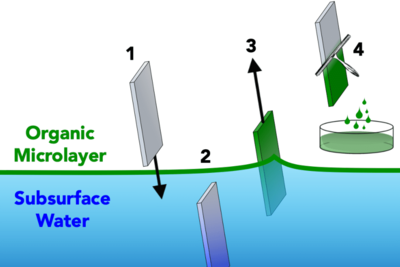
The surface microlayer (SML) is an ecotone, which constitutes an interface between the hydrosphere and the atmosphere. It is a thin layer of maximum 1000 µm in thickness [1]. The SML is unique due to its physical, chemical and biological properties, which differ from those of subsurface water (SUB) [1,2]. The SML is capable of accumulating microorganisms and chemical substances at a rate as high as 100-fold greater than that observed in the SUB [3]. The SML is the zone of matter and energy exchange between the hydrosphere and the atmosphere, and, as such, it is affected by global climate changes [4].[3]
The accumulation of chemical substances in the SML may vary, as it is dependent on many factors such as the chemical composition of water, salinity, the nutrient status and the presence of neustonic organisms (organisms that live upon the upper surface of waters or beneath its surface film, the SML) [5,6]. The SML may also accumulate toxic substances at greater amounts than observed in the pelagic zone [7]. At the same time, it is the zone that accumulates nutrients [5,8]. In turn, such substances as calcium, magnesium, potassium or sodium, being macroelements found at high concentrations in the pelagic zone, are usually not accumulated in the SML [9]. The SML is inhabited by neustonic autotrophic and heterotrophic microorganisms, which exhibit both enzymatic and high respiratory activity [5,10,11,12]. The SML structure may be disturbed as a result of physical non-equilibrium processes such as temperature fluxes, irradiance, wind and wave action that influence its biogeochemical properties. However, it is well fit for a rapid self-reconstruction of its original structure [3]. Physical forces such as adhesion, cohesion, surface tension, vortex motion and the Langmuir circulations, associated with its unique chemical and biological structure, form the specific properties of SML, including its stability [2].[3]
Chemical contaminants are accumulated in the SML because of physical, chemical and biological processes. These processes include, e.g., hydrosphere–atmosphere exchange, convection, upwelling of underlying waters, transport by bubbles, atmospheric deposition, simple diffusion, buoyant particles, turbulent mixing, scavenging and chelation of inorganic components by organic matter [3]. Important sources of contaminants in urban objects are connected with urban pollutants supplied with wet and dry atmospheric deposition [13,14].[3]
The taxonomic composition of phytoplankton is dependent on the chemical composition of the aquatic environment, which it colonizes [5,15]. Consequently, communities of the phytoneuston and phytoplankton vary in the SML and the SUB in terms of their taxonomic composition and population size [16].[3]
Ocean surface ecosystem
[edit]Above and below
[edit]Air-sea interface
[edit]Food webs
[edit]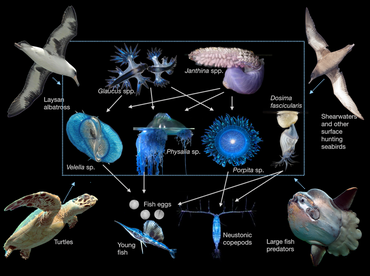
Organisms that live at the surface are a nexus for food webs both above and below (Fig 3). From the air, seabirds prey on neuston, including fulmars, storm petrels, and sooty shearwaters (see review in [32]). For the Pacific ocean Laysan albatross, nearly 30% of their diet is neuston, including Velella, Janthina, Halobates, and the eggs and larvae of flying fish [10]. Even ducks [33] and sea-going bats [34] prey on floating neuston when they drift close to shore. Below the surface, diverse sea turtles eat neuston (see review in [32]), including olive ridley (Lepidochelys olivacea), which prey upon Janthina [9,35], green turtles (Chelonia mydas), which prey upon Porpita [36], and loggerhead turtles (Caretta caretta), which prey upon Velella and Janthina [9]. Neuston are among the most important prey for central North Pacific loggerhead sea turtles [9]. Fish like coho salmon Oncorhynchus kisutch and spiny dogfish Squalus acanthias prey on Velella (see review in [32]), and animals of the deep-scattering layer also prey upon neuston [37]. Diverse larval fish from a wide variety of ecologically and economically important species live as or prey on neuston [11] (Table 1).[5]
Neuston themselves reach into the waters below, capturing non-neustonic prey and further linking deeper waters to this thin surface layer. Velella feed on a variety of foods, including fish eggs and larvae [69], while Porpita and Dosima fascicularis consume fast-moving carnivorous calanoid copepods [66,70]. Unlike Velella and Porpita, which each have tentacles extending only a few centimetres, Physalia can extend tentacles many meters below the surface, and prey primarily on fish [71].[5]
Many species of the neuston also prey on one another, creating an interconnected food web stretching into the broader world around it. Janthina and Glaucus prey on Physalia, Velella, and Porpita. Janthina have also been observed trying to eat each other, suggesting they have the capacity to be cannibalistic [65]. The only true open ocean insect, the neustonic Halobates, preys upon other neuston by sucking nutrients from organisms with piercing mouthparts [72].[5]
Ecoregions
[edit]The ocean’s surface possesses diverse floating ecosystems within different regions. The only well-known neustonic ecoregion, the Sargasso Sea, covers an area in the western North Atlantic where the neustonic Sargassum concentrates. Multiple endemic species live in the Sargasso Sea, many of them adapted to shelter among the neustonic seaweed [14,15]. The Sargasso Sea contributes to a variety of ecosystem goods and services, and its valuation ranges from over US$200 million for fisheries services to US$2.7 billion for all services [16]. The distribution of surface life in the Sargasso Sea changes by season [17,18] and may be subject to annual and decadal trends [19,20]. These trends can impact both the ecology and economy of the region, as well as stakeholders further afield that rely on species that shelter in the Sargassum.[5]
Beyond the Sargasso Sea, the most detailed survey of Pacific neuston occurred in the 1950s. Scientists in the USSR crisscrossed the Pacific, collecting nearly 500 samples from 50°N to over 40°S [12]. In this massive survey, 7 distinct ecoregions were discovered, with different species of neuston showing different ranges that likely reflect their ability to move with wind, thermal optima, seasonality, and life cycles [12].[5]
A linear survey from Fiji to the Bay of Biscay also found considerable geographic variation. The tropical seas of the Indian Ocean were dominated by neustonic species including Halobates, Physalia, Velella, and Porpita [21]. In contrast, the eastern North Atlantic was dominated by small quick-moving crustaceans that made up over 90% of neustonic organisms [21,22]. This suggests these regions have distinct neustonic communities.[5]
Ecological variation across regions also includes how the surface changes through time. On short time scales, the surface habitat is part of the diel vertical migration of marine life from the deep sea: the largest migration on Earth, which happens twice each day [23]. Because of this migration, significant differences in surface life occur between day and night at basin-wide scales. Ostracods, mysids, isopods, heteropods, various crustacean and bryozoan larvae, are all more abundant at the surface at night [21,22]. In contrast, some surface-associated species, such as Sapphirina copepods, which use complex visual cues for mating, migrate to the surface only during the day [24]. These migratory species add to the diversity at the ocean’s surface. On larger time scales, neustonic Sargassum abundance changes seasonally [19,25,26], and some neuston, such as Velella, strand more often in certain seasons than others [27], possibly due to seasonal variation in distribution.[5]
Differences in neuston across space and time may be due to real population and species boundaries. For example, while some species, such as the nudibranch Glaucus atlanticus, are globally distributed, closely relatives Glaucus bennettae and Glaucus mcfarlanei have thus far been identified only in the North Pacific subtropical gyre system [28], and represent cryptic species. The sea skater Halboates shows remarkable population- and species-level isolation both across oceans and ocean basins [29,30], while neustonic Sargassum represent a genetic and morphotype species complex with diverse and distinct distribution patterns [31]. It is clear that neuston are not uniformly distributed, and there is evidence for both species and population isolation as well as sympatric speciation. However, for the majority of neustonic species, no genetic or population data exist. Are individuals of the “same species” half a planet away part of an interconnected global population, or isolated and distinct enough to be considered different species with unique adaptations to the conditions in their region of the world?[5]
Poorly studied neuston ecoregions should be considered in the context of the Sargasso Sea: We know this comparatively well-studied region is critical for both the ecology and economy of the North Atlantic, its services valued in the billions. What ecological and economic services are neuston ecosystems providing in other ocean regions?[5]
Threats
[edit]The ocean surface is a concentrating front for floating pollutants from plastic to petroleum. Metals and toxicants concentrate on the ocean’s surface, particularly hydrophobic molecules such as aromatic hydrocarbons, pesticides, and polychlorinated biphenyls (PCBs), which can all have sublethal and lethal impacts on larval fish.[6] In addition, chlorinated and petroleum hydrocarbons, organotin compounds, polycyclic aromatic hydrocarbons (PAH), and heavy metals at the surface can reach concentrations up to 500 times higher than those in the water column.[7] Many of these compounds are concentrated in the sea surface microlayer (0 to 1,000 μm depth). In general, pollutants are at lower concentrations in the open ocean than in areas closer to shore,[7] and while this may bode well for open-ocean neustonic species, it presents challenges to coastal or benthic species with neustonic eggs or larvae.[5]
One large threat to both coastal and open-ocean surface organisms comes from oil. An estimated 741 kilotonnes of oil is released into the ocean each year from both natural and human sources,[8] with unknown effects on surface ecosystems. Because hydrophobic molecules concentrate at the ocean’s surface,[9][10] neustonic species will face orders of magnitude higher oil exposure than animals even a meter below the surface. Additionally, neuston species may also be vulnerable to dispersants used in breaking down oil spills, as is the case with jellyfish,[11] which die at significantly higher rates in the presence of dispersants, and Sargassum, which sinks in the presence of dispersants.[12] However, as of 2021 studies on diverse neustonic species in the presence of oil or dispersants have not been conducted.[5]
Floating plastic is another widespread petroleum product on the ocean’s surface.[13][14] There are an estimated 14.9 to 51.2 trillion pieces of plastic on the ocean’s surface,[15] representing upwards of 250,000 tons, largely concentrated in oceanic subtropical gyres (known colloquially as "Garbage Patches", which includes the Sargasso Sea).[16] These plastics are consumed by surface-hunting species like the Laysan albatrosses of Midway Atoll, which feed nearly 5 tons of ocean plastic to their chicks each year.[17][18] Such high plastic consumption makes sense only in light of these birds’ predation on neuston [10]. Larval neustonic fish and rafting barnacles have been found with plastic in their gut [11,97], though the impact of this plastic on these organisms, or the animals that feed on them, is not known. Some neustonic species, such as Halobates, may benefit from plastic, which provides a hard surface for laying eggs [98]. Larval fish may also shelter around plastic debris [73].[5]
With this complexity in mind, we must proceed cautiously when attempting to restore or conserve the ocean’s surface. For example, multiple organizations pledge to remove plastic from the ocean using unmanned collection devices inspired by pool skimmers or technology used to catch algae and jellyfish [99]. It should be no surprise then that one organization trapped hundreds of neustonic animals in their prototype, visible in their press release photo [100].[5]
Of all the human impacts on the ocean’s surface, climate change will have the farthest reach, and it is unclear what impact it will have on neuston. The ocean’s surface is directly exposed to the atmosphere, and changes in temperature will be felt first at the surface. This region is also uniquely exposed to atmospheric carbon dioxide and the ravages of storms, which are predicted to increase in intensity and frequency under climate change [101].[5]
Overall, threats to the neuston are poorly understood, and for every likely threat listed here, there are no doubt many that are largely unknown (e.g., ballast water, localized pollution, deep-sea mining impacts on pelagic life-cycle stages, geoengineering, etc.).[5]
Gallery
[edit]

emblematic figure of the marine pleuston
not a jellyfish but a colony of smaller organisms
-
Portuguese man-o-war Physalia sp.
-
By-the-wind sailor Velella sp.
-
Blue button Porpita sp.
-
Flying fish from the family Exocoetidae
-
Buoy barnacle Dosima fascicularis
-
Blue sea dragons Glaucus sp.
-
Paper nautilus Aurgonaut sp.
-
Sargassum sp. seaweed
-
Hippolytidae shrimp
-
Marine snail Recluzia sp.
-
Violet snail Janthina sp.
-
Floating anemone Actinecta sp.
References
[edit]- ^ a b c d e f g Cite error: The named reference
Engel2017was invoked but never defined (see the help page). - ^ Wolf, Martin J.; Goodell, Megan; Dong, Eric; Dove, Lilian A.; et al. (9 June 2020), A Link between the Ice Nucleation Activity of Sea Spray Aerosol and the Biogeochemistry of Seawater, Copernicus GmbH, doi:10.5194/acp-2020-416
{{citation}}: CS1 maint: unflagged free DOI (link) - ^ a b c d . doi:10.3390/w12071904.
{{cite journal}}: Cite journal requires|journal=(help); Missing or empty|title=(help)CS1 maint: unflagged free DOI (link) Material was copied from this source, which is available under a Creative Commons Attribution 4.0 International License.
Material was copied from this source, which is available under a Creative Commons Attribution 4.0 International License.
- ^ Wolf, Martin J.; Goodell, Megan; Dong, Eric; Dove, Lilian A.; Zhang, Cuiqi; Franco, Lesly J.; Shen, Chuanyang; Rutkowski, Emma G.; Narducci, Domenic N.; Mullen, Susan; Babbin, Andrew R.; Cziczo, Daniel J. (9 June 2020), A Link between the Ice Nucleation Activity of Sea Spray Aerosol and the Biogeochemistry of Seawater, Copernicus GmbH, doi:10.5194/acp-2020-416
{{citation}}: CS1 maint: unflagged free DOI (link) - ^ a b c d e f g h i j k l m n o p q Cite error: The named reference
Helm2021was invoked but never defined (see the help page). - ^ Hardy, John; Kiesser, Steven; Antrim, Liam; Stubin, Alan; Kocan, Richard; Strand, John (1987). "The sea-surface microlayer of puget sound: Part I. Toxic effects on fish eggs and larvae". Marine Environmental Research. 23 (4): 227–249. doi:10.1016/0141-1136(87)90020-1.
- ^ a b Wurl, Oliver; Obbard, Jeffrey Phillip (2004). "A review of pollutants in the sea-surface microlayer (SML): A unique habitat for marine organisms". Marine Pollution Bulletin. 48 (11–12): 1016–1030. doi:10.1016/j.marpolbul.2004.03.016. PMID 15172807.
- ^ National Research Council (Us) Committee On Oil In The Sea: Inputs, Fates (2003). Oil in the Sea III. doi:10.17226/10388. ISBN 978-0-309-08438-3. PMID 25057607.
- ^ Cite error: The named reference
Hardy1982was invoked but never defined (see the help page). - ^ Hardy, John; Kiesser, Steven; Antrim, Liam; Stubin, Alan; Kocan, Richard; Strand, John (1987). "The sea-surface microlayer of puget sound: Part I. Toxic effects on fish eggs and larvae". Marine Environmental Research. 23 (4): 227–249. doi:10.1016/0141-1136(87)90020-1.
- ^ Echols, B.S.; Smith, A.J.; Gardinali, P.R.; Rand, G.M. (2016). "The use of ephyrae of a scyphozoan jellyfish, Aurelia aurita, in the aquatic toxicological assessment of Macondo oils from the Deepwater Horizon incident". Chemosphere. 144: 1893–1900. Bibcode:2016Chmsp.144.1893E. doi:10.1016/j.chemosphere.2015.10.082. PMID 26547023.
- ^ Powers, Sean P.; Hernandez, Frank J.; Condon, Robert H.; Drymon, J. Marcus; Free, Christopher M. (2013). "Novel Pathways for Injury from Offshore Oil Spills: Direct, Sublethal and Indirect Effects of the Deepwater Horizon Oil Spill on Pelagic Sargassum Communities". PLOS ONE. 8 (9): e74802. Bibcode:2013PLoSO...874802P. doi:10.1371/journal.pone.0074802. PMC 3783491. PMID 24086378.
- ^ Trinanes, Joaquin A.; Olascoaga, M. Josefina; Goni, Gustavo J.; Maximenko, Nikolai A.; Griffin, David A.; Hafner, Jan (2016). "Analysis of flight MH370 potential debris trajectories using ocean observations and numerical model results". Journal of Operational Oceanography. 9 (2): 126–138. doi:10.1080/1755876X.2016.1248149. S2CID 52086328.
- ^ Maximenko, Nikolai; Hafner, Jan; Kamachi, Masafumi; MacFadyen, Amy (2018). "Numerical simulations of debris drift from the Great Japan Tsunami of 2011 and their verification with observational reports". Marine Pollution Bulletin. 132: 5–25. doi:10.1016/j.marpolbul.2018.03.056. PMID 29728262. S2CID 206784554.
- ^ Maximenko, Nikolai; Hafner, Jan; Kamachi, Masafumi; MacFadyen, Amy (2018). "Numerical simulations of debris drift from the Great Japan Tsunami of 2011 and their verification with observational reports". Marine Pollution Bulletin. 132: 5–25. doi:10.1016/j.marpolbul.2018.03.056. PMID 29728262. S2CID 206784554.
- ^ Eriksen, Marcus; Lebreton, Laurent C. M.; Carson, Henry S.; Thiel, Martin; Moore, Charles J.; Borerro, Jose C.; Galgani, Francois; Ryan, Peter G.; Reisser, Julia (2014). "Plastic Pollution in the World's Oceans: More than 5 Trillion Plastic Pieces Weighing over 250,000 Tons Afloat at Sea". PLOS ONE. 9 (12): e111913. Bibcode:2014PLoSO...9k1913E. doi:10.1371/journal.pone.0111913. PMC 4262196. PMID 25494041.
- ^ Ribic, Christine A.; Sheavly, Seba B.; Klavitter, John (2012). "Baseline for beached marine debris on Sand Island, Midway Atoll". Marine Pollution Bulletin. 64 (8): 1726–1729. doi:10.1016/j.marpolbul.2012.04.001. PMID 22575495.
- ^ Klavitter, J. (2005) "Calculation of the amount of plastic 'land filled' each year by albatross at Midway Atoll NWR". US Fish and Wildlife Service, Honolulu.
Microbiota
[edit]Microbiome dark matter
[edit]Research, for example on the human microbiome, has mainly been restricted to the identification of most abundant microbiota associated with health or disease. Their abundance may reflect their capacity to exploit their niche, however, metabolic functions exerted by low-abundant microrganisms can impact the dysbiotic signature of local microbial habitats.[1]
Advances in high-throughput sequencing approaches have revolutionised microbiology and enabled the characterization of the complex ecological contents of microbial communities, however, our understanding of the mechanisms impacting host-microbial homeostasis remains limited (Hajishengallis et al., 2012). Changes to the human gut microbial composition, for example, can influence host health and diseases, and may affect the microbiota at other body sites (Banerjee et al., 2018). A concept of pathogenicity influenced by both microorganisms and the host has been proposed in the damage-response framework (Casadevall and Pirofski, 2003).[1]
Research on the human microbiome has mainly been restricted to comparisons of the most abundant organisms and the identification of a “core” microbiota associated with health or disease. Indeed, the core microbiome may reflect their capacity to exploit their niche, being favoured by nutrients, O2 concentrations, etc. to allow surface colonisation. However, opportunistic pathogens may contribute to the compositional and or functional shift towards dysbiosis and could be among the minority taxa. Key species could therefore easily be overlooked in next generation sequencing (NGS) analyses (Turnbaugh et al., 2007; Zerón, 2014).[1]
Furthermore, studies using a 16S rRNA metagenomic approach are limited to the identification of bacteria and archaeae (arguably accurately to the genus level), leaving the view of the richness and diversity of the whole microbiome incomplete and underestimated (Brooks et al., 2015). This is certainly true for Methanobrevibacter smithii, a member of the Archaea domain in a relatively minor constituent of the gut microbiome that contributes to bacterial metabolism in ways that promote host dysbiosis (Hajishengallis et al., 2012). This species and its methanogenic relatives, though in low abundance, have been demonstrated to be capable of providing conditions for the growth of pathogenic bacteria in periodontal sites, driving to periodontitis (Lepp et al., 2004). The composition of the microbial communities can be misinterpreted regarding the presence of virus, archaea, and fungi, making it a challenge to gain a holistic view.[1]
Subsequently, low-abundant microrganisms could be considered the “dark matter” of the human microbiome. Recent studies (Hajishengallis and Lamont, 2016; Wang et al., 2017; Banerjee et al., 2018; Stobernack, 2019; Berg et al., 2020; Xiao et al., 2020) are paying more attention to these organisms, and increasingly taking into account the “keystone species” concept, corresponding to organisms which effect on the community is disproportionately large compared to their relative abundance (Power et al., 1996). A similar concept in macroecology suggests species in low abundance have a major role in their respective community (Hajishengallis et al., 2012). Abundance is the factor differentiating keystone microorganisms from those that are dominant. A dominant species might affect the environment exclusively by its sheer abundance, while a keystone microorganism may influence metabolic functions of the microbiome, despite its low abundance. Examples of keystone pathogens are: Porphyromonas gingivalis associated with periodontitis (Holt and Ebersole, 2005; Perez-Chaparro et al., 2014; Burmistrz et al., 2015; Camelo-Castillo et al., 2015; Ai et al., 2017; Stobernack, 2019), Klebsiella pneumonia, Proteus mirabilis (Garrett et al., 2010), and Citrobacter rodentium (Bry et al., 2006) associated with intestinal inflammatory diseases; and Fusobacterium nucleatum (Kostic et al., 2013; Rubinstein et al., 2013) associated with colon cancer (Banerjee et al., 2018). Furthermore, studies investigating Bacteroides fragilis, a pro-oncogenic bacterium, have found it to be a minor constituent of the colon microbiota in terms of relative abundance. Its unique virulence characteristics, such as secretion of a zinc-dependent metalloprotease toxin, alter colonic epithelial cells and mucosal immune function to promote oncogenic mucosal events, in which in addition to the intraluminal environment, enhance the oncogenic process. This gave rise to the concept of “alpha-bugs”, due to its ability to be directly pro-oncogenic but also to be capable of remodeling the entire healthy microbiota (Sears and Pardoll, 2011; Hajishengallis et al., 2012). Thus, the identification of low-abundant organisms within a microbial population associated with disease could be crucial. Unless we have a more “complete” view of the microbiota, including an accurate detection of low-abundant species, our understanding of the microbiology remains limited, as well as our strategy to improve therapy designs/interventions in diseases with polymicrobial cause.[1]
Studies of the minority microrganisms may reveal unique signatures, which could lead to diseases. Hence, a much deeper characterization of their presence in the microbiome in which they are involved is desirable. This scoping review aims to map the literature regarding the management of low-abundant organisms in studies investigating human samples. We aimed to determine: 1) How researchers classify organisms as low-abundant; 2) How they handled and processed NGS data of low-abundant organisms bioinformatically and 3) The distibution of low-abundant microorganisms among various body sites.[1]
Microswimmers
[edit]HEADERS...
- Overview
- Natural microswimmers
- Synthetic microswimmers
- Hybrid microswimmers
- Hydrodynamics
- Applications
SEE...
- Bioinspired reorientation strategies for application in micro/nanorobotic control[2]
- Microfluidics for Microswimmers[3]
- Microfluidic techniques for separation of bacterial cells via taxis[4]
- Opto-thermoelectric microswimmers[5]
"An artificial microswimmer is a cutting-edge technology with engineering and medical applications. A natural microswimmer, such as bacteria and sperm cells, also play important roles in wide varieties of engineering, medical and biological phenomena. Due to the small size of the microswimmer, the inertial effect of the surrounding flow field may be negligible. In such a case, reciprocal body deformation cannot induce migration of a swimmer, which is known as the scallop theorem. To overcome the implications of the scallop theorem, the microswimmer needs to undergo a nonreciprocal body deformation to achieve migration. The swimming strategy is thus completely different from macro-scale swimmers, which should be clarified much further." - Special Issue "Microswimmer"
- smart microswimmers
- Roads to Smart Artificial Microswimmers[6]
Artificial microswimmers offer exciting opportunities for biomedical applications. The goal of these synthetics is to swim like natural micro-organisms through biological environments and perform complex tasks such as drug delivery and microsurgery. Extensive efforts in the past several decades have focused on generating propulsion at the microscopic scale, which has engendered a variety of artificial microswimmers based on different physical and physicochemical mechanisms. Yet, these major advancements represent only the initial steps toward successful biomedical applications of microswimmers in realistic scenarios.[6]
A next step is to design “smart” microswimmers that can adapt their locomotion behaviors in response to environmental factors. Herein, recent progress in the development of microswimmers with intelligent behaviors is surveyed in three major areas: 1) adaptive locomotion across different media, 2) tactic behaviors in response to environment stimuli, and 3) multifunctional swimmers that can perform complex tasks. The emerging technologies and novel approaches used in developing these “smart” microswimmers, which enable them to display behaviors similar to biological cells, are discussed.[6]
- control over directionality
- Topographical pathways guide chemical microswimmers[7]

Achieving control over the directionality of active colloids is essential for their use in practical applications such as cargo carriers in microfluidic devices.[7]
Catalytically active micrometre-sized objects can self-propel by various mechanisms including bubble ejection, diffusio- and electrophoresis, when parts of their surface catalyse a chemical reaction in a surrounding liquid. In future, such chemically active micromotors may serve as autonomous carriers working within microfluidic devices to fulfill complex tasks1,2,3. However, to achieve this goal, it is essential to gain robust control over the directionality of particle motion. Although it has been more than a decade since motile chemically active colloids were first reported4,5,6,7, this remains a challenging issue, in particular for the case of spherical particles.[7]
Two main methods of guidance have been so far employed with varying degrees of success. The first one uses controlled spatial gradients of ‘fuel’ concentration. This approach suffers, however, from severe difficulties in creating and maintaining chemical gradients, and the spatial precision of guidance remains rather poor8,9,10,11,12. The second approach relies on the use of external magnetic fields in combination with particles with suitably designed magnetic coatings or inclusions5,13. This proved to be a very precise guidance mechanism, which could be employed straightforwardly for the case of tubular particles14, but difficult to extend to the case of spherical colloids, where it requires sophisticated engineering of multilayer magnetic coatings7,15,16,17. In addition, individualized guidance of specific particles is difficult to achieve without complicated external apparatus and feedback loops18. The advantages of autonomous operation are thereby significantly hindered.[7]
- Translational prospects of untethered medical microrobots[8]
- Genetically Engineered Bacterial Biohybrid Microswimmers for Sensing Applications[9]

Bacterial biohybrid microswimmers aim at exploiting the inherent motion capabilities of bacteria (carriers) to transport objects (cargoes) at the microscale. One of the most desired properties of microswimmers is their ability to communicate with their immediate environment by processing the information and producing a useful response. Indeed, bacteria are naturally equipped with such communication skills.[9]
Bacteria have been intensively studied for centuries. Nevertheless, today, a new field of research highlights a previously un-envisioned application of these prokaryotic microorganisms that is currently gathering momentum—their potential for the development of microswimmers. Bacterial biohybrid microswimmers usually consist of one (or many) living bacteria and one (or many) abiotic particles [1]. Depending on the bacteria-to-particle ratio, the hybrid microswimmer can be classified as a Bacteria Bot (1 bacterium:1 cargo) (examples in references [2,3,4]), a Multi Bot (1 bacterium:>1 cargoes) (examples in references [5,6]), or a Bacterial Microsystem (>1 bacteria:1 cargo) (examples in references [7,8]). In these microswimmers, the bacteria usually act as carriers that provide the driving force required to move the inert cargoes from an initial point A to a final point B, i.e., bacterial metabolism hereby provides the chemical energy required for this microscale mechanical transport process. Three critical stages can be identified during the creation of these self-propelled bacterial biohybrid microswimmers—the capture, the delivery, and the release of the cargo (Figure 1). It is important to emphasize that one desired property of these microswimmers is their ability to perceive and react to environmental cues in an autonomous way (Figure 1). All these critical challenges on the developed biohybrid microswimmers are strongly determined by the bacterial characteristics.[9]
The composition of the bacterial surface determines its attachment properties [9,10] and has a direct influence on the initial cargo capture and, potentially, the final cargo release. Gram-positive and Gram-negative bacteria are encased in a multilayered cell envelope with different architectures. In Gram-positive bacteria, the cytoplasmic membrane is surrounded by a thick cell wall of peptidoglycan; in Gram-negative bacteria, the cytoplasmic membrane is surrounded by a thin layer of peptidoglycan and an additional outer membrane called the lipopolysaccharide layer [11]. In both cases, the bacterial surface net charge is predominantly negative, and its electrostatic properties are influenced by the ionization of the functional groups from the macromolecules present in the cell walls and membranes [12]. Surface differences like the length of lipopolysaccharide molecules or the presence/absence of extracellular polymeric substances result in different adhesions of bacteria to inorganic surfaces [13]. Consequently, one approach to improve the attachment of bacteria to their cargo consists of modifying the bacterial surface composition. For example, Gram-negative Escherichia coli cells were modified to express biotin on their surface, thereby allowing the binding to streptavidin-functionalized microparticles [14]. Another approach is to use the natural electronegativity of the cells to bind positively charge molecules. For example, Gram-positive B. subtilis cells were attached to amino-functionalized zeolite L crystals [3].[9]
The delivery of the cargo depends on the type of bacterial locomotion. Three different active movements of bacteria have been used for the development of bacterial biohybrid microswimmers, as reviewed in reference [1]—swimming, swarming, and gliding motilities. Swimming and swarming both depend on the use of flagella [15,16]. Differential flagellation patterns result in different possibilities for movement trajectories like the run-and-tumble swimming of E. coli [17] or the forward, reverse, and turning by buckling of Vibrio alginolyticus [18]. These swimming properties are exploited for the development of biohybrid microswimmers [19]. Furthermore, besides the self-actuated biohybrid microswimmers with uncontrolled motion (due to the action of individual cells in the absence of stimuli [20]), the bacterial taxis mediated by specific receptors and signal transduction pathways can be used to steer the directionality of the cargo transport toward or away from specific stimuli [5,21].[9]
Free-swimming microorganisms
[edit]- bacterial flagella
Unicellular microorganisms use cilia or flagella to propel in fluids at the microscale. These elastic paddles exhibit a specific beating pattern to overcome the scallop theorem.16 Although there are thousands of such individual swimming microorganisms, the biomolecular composition and propulsion mechanism of their motor units are surprisingly similar. There is however a sharp distinction between bacterial and eukaryotic flagella (see Fig. 2). The first of these two big groups, bacteria flagella, are connected to the main body of the respective bacterium by a literally rotating molecular joint.32,60–62 Upon rotation, the flagella form a helical shape due to their elasticity which is subject to the anisotropic drag of the fluidic surrounding and leads to a corkscrew-like motion of the bacterium.16,62–64 Usually, a bacterium has multiple flagella which are configured either lophotrichous, i.e., on one side of the bacterium's body, amphitrichous, i.e., on opposite sides of the body, or peritrichous, i.e., all over the bacterium's surface.65 These flagella may rotate individually or form bundles of several flagella that intertwine and rotate together.62,65 If a bacterium has only one flagellum, the configuration is called monotrichous. Most bacteria swim in the so-called run-and-tumble pattern, which describes unidirectional motion periods (i.e., run) that are followed by a stationary state (i.e., tumble) where the bacterium stops to reorient.63 For well-known peritrichous bacteria like Escherichia coli (E. coli), Serratia marcescens (S. marcescens), and Salmonella Typhimurium (S. typhimurium), it was observed that the propelling flagella bundles untangle during this reorientation to allow single rotating flagella to alter the direction of the bacteria's movement.62,63 These three are among the most frequently employed species for bacteria-powered hybrid microswimmers because of their well-known behavior, easy culture conditions, relatively high swimming speeds of roughly 40 μm/s (20 bodylengths per second), chemotaxis capabilities, and genetic alteration possibilities. Other employed bacteria are listed in Table I. A different class of bacteria that proved to be very interesting for hybrid biomicromotors are magnetotactic bacteria (MTB), also listed in Table I. They feature different flagella configurations, e.g., Magnetospirillum gryphiswaldense (M. gryphiswaldense) with two individual amphitrichous flagella, and especially Magnetococcus marinus strains (e.g., MC-1 and MO-1) reach very high speeds of roughly 200 μm/s (100 bodylengths per second), but their most important advantage is the magnetosomes inside their bodies.66,67 These are naturally synthesized magnetite (Fe3O4) nanocrystals that are arranged as a superparamagnetic chain within the bacterium that naturally aligns its magnetic dipole moments to the earth's magnetic field.68,69 This serves as a means for orientation for the bacterium but can be exploited with stronger artificial external magnetic fields to forcefully align and control the magnetotactic bacterium and its motion.[10]
- Eukaryotic flagella
The second big group of flagellated microorganisms are eukaryotic swimmers. Eukaryotic flagella are different from their bacterial counterparts as they are not rotating, but beating in a whiplash fashion.16,70,71 Although the power stroke of the molecular motor unit is actually reciprocal, the elasticity of the flagellum leads to an overhanging, damped wave-like beating pattern that allows non-reciprocal motion in low Reynolds number fluids.16,72 Most prominent examples are mammalian sperm cells that are monoflagellated and have various sizes and swimming speeds depending on the species (see Table I).73–75 Another eukaryote that was employed for hybrid microswimmers is Chlamydomonas Reinhardtii (Chlamydomonas), which is a microalga with two lophotrichous flagella.76 Trypanosomes are eukaryotic parasites that have their flagellum tightly bound to the cell membrane over almost all of its length, which makes the whole body an undulating swimmer that moves with the tail tip in front.77–79 Their distinctive ability to adapt their surface to make them invisible to the immune system in a mammalian host's blood makes them interesting candidates for in vivo hybrid biomicromotors, but the highly dangerous pathogenicity of common trypanosome species prevented the exploration of this possibility so far.80 Microorganisms that employ cilia instead of flagella were also barely used in hybrid approaches. Cilia are structurally similar to flagella, but generally shorter, and are usually distributed all over the surface of the respective microbe, which is called holotrichous arrangement.71,76,81,82 The non-reciprocal wave pattern that is necessary for propulsion thereby does not arise from the beating pattern of individual cilia, but from their concerted beating as a metachronal wave, i.e., like a Mexican wave performed by a sports stadium crowd.83–86 One example that was employed in a hybrid approach is Tetrahymena pyriformis (Tetrahymena), a eukaryotic protozoon that is bigger than most other employed microorganisms, but also significantly faster, with a swimming speed of roughly 500 μm/s (10 bodylengths per second).87 [10]
- amoeboid movement or crawling motion using pseudopodia
There are other unicellular organisms that move without any cilia or flagella. In principle, most cells can migrate by pushing and pulling their bodies by membrane protrusions formed by actin-filaments, so-called pseudopodia.88,89 This crawling motion is called amoeboid movement.90,91 It is not suitable to propel free-swimming micromotors because it is very slow (<1 μm/s) and needs surfaces to crawl along. However, some suspension cells that feature this motion mechanism are nonetheless interesting for hybrid biomicromotor applications. These are mainly blood cells like macrophages and T cells that can be employed to infiltrate solid tumors. This will be discussed further below. Also, red blood cells (RBCs) were employed as hybrid drug carriers.92 They were propelled artificially, by ultrasound, as they naturally only move passively in the flow of blood. Such hybrid biomicromotors that rely on artificial instead of cellular propulsion are not as common as cell-propelled swimmers and will be discussed individually further below as well.[10]
- compression of muscle cells
A final type of cellular motion is the compression of muscle cells (myocytes). Of course, muscle cells do not swim in nature, as they are stationary, but can be employed in a biohybrid approach to move synthetic devices and make them swim. Heart muscle cells of rats (cardiomyocytes) were employed to actuate microtools, but also micromotors like artificial flagella.93,94 For larger devices, skeletal muscle cells and insect dorsal vessel tissue were used, but these are not the focus of this review.95,96 Apart from propulsion, another important aspect of microswimming is taxis. Taxis is the ability to respond to an external stimulus with a change in motion direction.101 For motile microorganisms, this is necessary to find food and purpose.102,103 The most common form of taxis is chemotaxis, i.e., the response to a chemical cue that is present in the surrounding medium.104,105 Practically, all motile microorganisms are capable of some form of chemotactic response, and consequently, many cell-driven hybrid biomicromotors were designed to rely on these capabilities as well, as will be discussed below. Aerotaxis106,107 and pH-taxis108,109 are distinctive forms of chemotaxis that describe the response to oxygen concentration or pH of the liquid medium, respectively. Physical instead of chemical stimuli may also induce tactic behavior in certain microbes, for example, light (phototaxis),110–112 temperature (thermotaxis),113,114 electric fields (galvanotaxis),115 or magnetic fields (magnetotaxis).116–119 Response to mechanical stimuli like liquid flow or to the contact with solid objects can be described as rheotaxis120–122 and thigmotaxis,123,124 respectively. The response in all of these cases can be positive or negative, i.e., the microswimmer may move towards or away from the respective stimulus. An important point here is the difference between klinotactic response and tropism. For example, considering chemotaxis, most microbes have only one sensory capability, i.e., they can sense whether the concentration of a certain chemical increased or decreased at their current location, compared to their previous one, and then decide to alter their movement direction or not.125,126 They can change their direction klinotactically, but they cannot decide on a particular new direction based on their sensing. By contrast, tropism requires more complex sensory organs to go directly up a perceived gradient.127 For example, our eyes allow us to walk directly toward a light source that we see, i.e., phototropically. A phototactic bacterium however would not see the light source, it would have to stop to sense the light intensity in its immediate surroundings, and then, it would move again and stop to sense again until it reaches the point with the highest relative intensity after several directional changes. With the biohybrid approach, we can impose more effective means of taxis artificially, for example, magnetotactic behavior via synthetic magnetic attachments, and we can impose tropism by altering the magnetic field in response to the visual feedback that we receive and judge by ourselves. The microorganisms however still offer the advantage of combining multiple forms of taxis simultaneously, as was pointed out and employed in several hybrid biomicromotor approaches that will be discussed in the main section of this review.101,128 [10]
<<<< TABLE >>>>
Muscle cells Cardiomyocyte148 15 × 100 ca. 5 μN Contraction Tissue (endogenous) aLongitudinal section area of the bulk body (without flagella/cilia). bRoughly averaged swimming speed may vary depending on the liquid medium.
E M Purcell showed that a body has to perform non-reciprocal motion in order to propel itself in a highly viscous environment. The swimmer with one degree of freedom is bound to do reciprocal motion, whereby the center of mass of the swimmer will not be able to propel itself due to the Scallop theorem.[11]

See also
[edit]References
[edit]- ^ a b c d e f . doi:10.3389/fcimb.2021.689197.
{{cite journal}}: Cite journal requires|journal=(help); Missing or empty|title=(help)CS1 maint: unflagged free DOI (link) Material was copied from this source, which is available under a Creative Commons Attribution 4.0 International License.
Material was copied from this source, which is available under a Creative Commons Attribution 4.0 International License.
- ^ . doi:10.1007/s12213-020-00130-7.
{{cite journal}}: Cite journal requires|journal=(help); Missing or empty|title=(help) Material was copied from this source, which is available under a Creative Commons Attribution 4.0 International License.
Material was copied from this source, which is available under a Creative Commons Attribution 4.0 International License.
- ^ . doi:10.1002/smll.202007403.
{{cite journal}}: Cite journal requires|journal=(help); Missing or empty|title=(help) - ^ . doi:10.15698/mic2020.03.710.
{{cite journal}}: Cite journal requires|journal=(help); Missing or empty|title=(help) Material was copied from this source, which is available under a Creative Commons Attribution 4.0 International License
Material was copied from this source, which is available under a Creative Commons Attribution 4.0 International License
- ^ . doi:10.1038/s41377-020-00378-5.
{{cite journal}}: Cite journal requires|journal=(help); Missing or empty|title=(help) Material was copied from this source, which is available under a Creative Commons Attribution 4.0 International License.
Material was copied from this source, which is available under a Creative Commons Attribution 4.0 International License.
- ^ a b c . doi:10.1002/aisy.201900137.
{{cite journal}}: Cite journal requires|journal=(help); Missing or empty|title=(help) Material was copied from this source, which is available under a Creative Commons Attribution 4.0 International License.
Material was copied from this source, which is available under a Creative Commons Attribution 4.0 International License.
- ^ a b c d e . doi:10.1038/ncomms10598.
{{cite journal}}: Cite journal requires|journal=(help); Missing or empty|title=(help) Material was copied from this source, which is available under a Creative Commons Attribution 4.0 International License.
Material was copied from this source, which is available under a Creative Commons Attribution 4.0 International License.
- ^ . doi:10.1088/2516-1091/ab22d5.
{{cite journal}}: Cite journal requires|journal=(help); Missing or empty|title=(help) Material was copied from this source, which is available under a Creative Commons Attribution 3.0 International License.
Material was copied from this source, which is available under a Creative Commons Attribution 3.0 International License.
- ^ a b c d e f . doi:10.3390/s20010180.
{{cite journal}}: Cite journal requires|journal=(help); Missing or empty|title=(help)CS1 maint: unflagged free DOI (link) Material was copied from this source, which is available under a Creative Commons Attribution 4.0 International License
Material was copied from this source, which is available under a Creative Commons Attribution 4.0 International License
- ^ a b c d Cite error: The named reference
Schwarz2017was invoked but never defined (see the help page). - ^ . doi:10.1088/2399-6528/aaa856.
{{cite journal}}: Cite journal requires|journal=(help); Missing or empty|title=(help) Material was copied from this source, which is available under a Creative Commons Attribution 3.0 International License.
Material was copied from this source, which is available under a Creative Commons Attribution 3.0 International License.
- ^ . doi:10.1017/jfm.2020.142.
{{cite journal}}: Cite journal requires|journal=(help); Missing or empty|title=(help) Material was copied from this source, which is available under a Creative Commons Attribution 4.0 International License.
Material was copied from this source, which is available under a Creative Commons Attribution 4.0 International License.
Soil microbiome and virome
[edit]
The study of soil viruses, though not new, has languished relative to the study of marine viruses. This is particularly due to challenges associated with separating virions from harboring soils. Generally, three approaches to analyzing soil viruses have been employed: (1) Isolation, to characterize virus genotypes and phenotypes, the primary method used prior to the start of the 21st century. (2) Metagenomics, which has revealed a vast diversity of viruses while also allowing insights into viral community ecology, although with limitations due to DNA from cellular organisms obscuring viral DNA. (3) Viromics (targeted metagenomics of virus-like-particles), which has provided a more focused development of ‘virus-sequence-to-ecology’ pipelines, a result of separation of presumptive virions from cellular organisms prior to DNA extraction. This separation permits greater sequencing emphasis on virus DNA and thereby more targeted molecular and ecological characterization of viruses. Employing viromics to characterize soil systems presents new challenges, however. Ones that only recently are being addressed. Here we provide a guide to implementing these three approaches to studying environmental viruses, highlighting benefits, difficulties, and potential contamination, all toward fostering greater focus on viruses in the study of soil ecology.[3]
Communities of soil microorganisms (soil microbiomes) play a major role in biogeochemical cycles and support of plant growth. Here we focus primarily on the roles that the soil microbiome plays in cycling soil organic carbon and the impact of climate change on the soil carbon cycle. We first discuss current challenges in understanding the roles carried out by highly diverse and heterogeneous soil microbiomes and review existing knowledge gaps in understanding how climate change will impact soil carbon cycling by the soil microbiome. Because soil microbiome stability is a key metric to understand as the climate changes, we discuss different aspects of stability, including resistance, resilience, and functional redundancy.We then review recent research pertaining to the impact of major climate perturbations on the soil microbiome and the functions that they carry out. Finally, we review new experimental methodologies and modeling approaches under development that should facilitate our understanding of the complex nature of the soil microbiome to better predict its future responses to climate change.[2]
New Zealand’s marine coastal ecosystems
[edit]- The Importance of Connected Ocean Monitoring Knowledge Systems and Communities - Case studies from Canada and New Zealand
New Zealand’s mangroves
[edit]
Mangroves are part of the indigenous flora of Aotearoa (New Zealand) and have been part of the natural environment for approximately 19 million years [22]. They are the most southerly growing mangrove ecosystem in the world. The only existing mangrove species in New Zealand is Avicennia marina subsp. australasica, which has existed there for over 11,000 years [23] and currently occupies an area of approximately 177 km2 (data compiled [24,25]). Mangroves range from Cape Reinga in the far North of Northland, to Ohiwa harbour in the Bay of Plenty, on the East Coast and Kawhia harbour on the West coast [26,27,28] (Figure 1). Prior to the definition of ecosystem services, both Kūchler (1972) and Dingwall (1984) recognised that there was no direct utilisation of New Zealand’s temperate mangrove for fuelwood, charcoal, or timber [29,30]. Historically, mangroves or mānawa had previous provisioning services for Māori. They were utilised for their tanning properties, as tools for pounding fern-root, and as dyes for clothes. Post-colonisation, boat-builders used green mangrove wood for shaping the stern and bow [31] (p. 23).[4]
Marine coastal ecosystems
[edit]- Sustainable Development Goal 14 - Life Below Water - Towards a Sustainable Ocean
- Governing the Land-Sea Interface to Achieve Sustainable Coastal Development
- Mapping Global Research on Ocean Literacy: Implications for Science, Policy, and the Blue Economy
- Collaborative Automation and IoT Technologies for Coastal Ocean Observing Systems
- Coastal ecosystems - science direct
Overview
[edit]
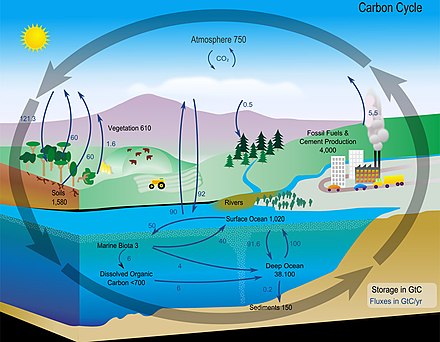
"Coastal ecosystems occur where the land meets the sea and that includes a diverse set of habitat types like the mangroves, coral reefs, seagrass beds, estuaries and lagoons, backwaters etc."[6]
"Coastal ecosystems include highly biodiverse marine communities that vary depending on local topography and climate".[7]
"Coastal ecosystems are the unique habitats formed by plants and other organisms that can thrive at the borders between ocean and land, where they must live in saltwater and changing tides. Like forests, many of these coastal ecosystems are full of plants that help regulate the Earth’s temperature. As the plants in these ecosystems grow, they pull carbon out of the air and store it in their tissue, roots, and the soil beneath them. This keeps carbon out of our atmosphere, where, as the greenhouse gas carbon dioxide, it would otherwise trap heat and warm the planet."[8]
"The coastline of the United States is highly populated. Approximately 25 million people live in an area vulnerable to coastal flooding.[1][2] Coastal and ocean activities, such as marine transportation of goods, offshore energy drilling, resource extraction, fish cultivation, recreation, and tourism are integral to the nation's economy, generating 58% of the national gross domestic product (GDP).[2] Coastal areas are also home to species and habitats that provide many benefits to society and natural ecosystems."[9]
"More than 3 billion people rely on the oceans for their livelihoods and more than 350 million jobs are linked to oceans worldwide".[10]
"Which coastal ecosystem is most important for biodiversity? Coral reefs are believed by many to have the highest biodiversity of any ecosystem on the planet—even more than a tropical rainforest. Occupying less than one percent of the ocean floor, coral reefs are home to more than twenty-five percent of marine life".[11]
"Coastal areas help prevent erosion; filter pollutants; and provide food, shelter, breeding areas, and nursery grounds for a wide variety of organisms."[12]

<ref> tag has too many names (see the help page).
Natural coastal ecosystems with connections to the Great Barrier Reef [13]
Ecosystem values
[edit]Coastal wetlands, such as seagrass beds, mangrove wetlands, salt marshes, macroalgal, and seaweed beds, shellfish reefs, tidal freshwater wetlands, and coral reefs, are remarkable features of tropical and temperate coastlines. They provide vital services, including coastal protection, fisheries production, blue carbon capture, and pollutant removal and detoxification (Nagelkerken et al., 2015).[14]
Wave attenuation
[edit]Coastal vegetation is found around the globe in the form of seagrass fields, kelp forests, salt marshes and mangrove forests.[16] The vegetation across and within these habitats differs significantly, ranging from flexible grasses to rigid shrubs and trees. When vegetation is present on or seaward of the coastline, it interacts with incoming waves.[17][15]
Vegetation contributes to coastal protection by damping incoming waves.[18][19][20] When waves travel over vegetation, energy is dissipated due to the work done by wave forces on plants (Dalrymple et al., 1984). This can significantly reduce wave impact on beaches and hard structures, lowering their construction and maintenance costs (Temmerman et al., 2013; Vuik et al., 2016). Additionally, vegetation reduces storm surge propagation, stabilises shorelines during storms, and contributes to sediment capture, carbon storage and recreational opportunities outside storm events (Bouma et al., 2014; Fagherazzi et al., 2012; Stark et al., 2016; Sutton-Grier et al., 2015; Wamsley et al., 2009).[15]
Stem motion of flexible vegetation can impact wave damping significantly as has been demonstrated in experimental (Luhar et al., 2017; Paul et al., 2016; Riffe et al., 2011) and computational studies (Luhar and Nepf, 2016; Mullarney and Henderson, 2010). Vegetation species are broadly classified as rigid or flexible. Rigid vegetation, like woody shrubs, does not move over a wave cycle, whereas flexible vegetation, like thin grass, sways as its rigidity is insufficient to resist stem bending. The excursion of flexible species increases when its flexural rigidity decreases or wave forces increase (Luhar et al., 2017). As stem bending increases, the plant frontal area and the relative velocity between water and stem decrease (Méndez et al., 1999; Paul et al., 2016). Both limit the wave forces on the plant and may reduce wave damping by up to 50–70% (Luhar et al., 2017; Mullarney and Henderson, 2010; Riffe et al., 2011; van Veelen et al., 2020). However, as the interaction between plant motion and wave forces is reciprocal, quantifying wave damping over flexible species poses a challenge.[15]
Computational models can be a valuable tool to quantify wave damping for variable vegetation properties. For rigid vegetation, Dalrymple et al. (1984) simplified vegetation fields to arrays of rigid cylinders on a flat bottom and assumed validity of linear wave theory to model damping of monochromatic waves. Under these assumptions, they demonstrated that wave damping is dominated by drag, and wave heights reduce proportionally to the distance travelled over vegetation. Using the same modelling framework, Mendez and Losada (2004) proposed to calibrate the drag coefficient to include the effect of stem motion. Their model was successfully applied in field (Bradley and Houser, 2009; Garzon et al., 2019; Jadhav et al., 2013) and flume studies (Anderson and Smith, 2014; Augustin et al., 2009; Koftis et al., 2013; [19] [20] van Veelen et al., 2020), but the calibrated drag coefficients vary widely between plant species and test conditions,[16] Vuik et al., 2016), and when vegetation conditions change (Schulze et al., 2019). Thus, site-specific calibration for each coastal habitat is required.[15]
Seascape ecology
[edit]
There is a growing demand for the sea space due to an expansion of traditional maritime sectors and emerging marine uses, such as wind farms and mariculture. Marine spatial planning (MSP) is a means to allocate space to all these activities, while avoiding conflict and creating synergies (Douvere, 2008). MSP can be defined as the process to spatially and temporally allocate human activities in marine areas such that environmental, economic, and social objectives can be achieved (Ehler and Douvere, 2009). MSP thus needs to strike a balance between increasing maritime uses (fostered by the EU Blue Growth strategy (EC, 2012), for example) and the sustainable development of these activities within the natural limits (i.e., the carrying capacity) of the ecosystem (Hassler et al., 2019). The latter emphasizes the ecosystem approach to MSP that considers the entire ecosystem. The ecosystem approach encompasses the view that present and future generations should be able to continue using the goods and services provided by the sea (UNCED, 1992; UNEP, 2011). This links the approach to the ecosystem service (ES) concept. ES can be defined as the contributions of ecosystems to human wellbeing and can be divided into provisioning, regulating and maintenance, and cultural services (Haines-Young and Potschin, 2010a). In the EU, the ES concept has made its way into relevant, marine-related legislation, such as the Marine Strategy Framework Directive (MSFD) (EC, 2008) and the Directive establishing a framework for maritime spatial planning (MSP Directive) (EC, 2014).[21]
Vegetated coastal habitats
[edit]
Causes of habitat degradation and disturbance
[edit]CMS are in decline globally due to a variety of anthropogenic disturbances (Table 1). While coastal habitats experience a wide variety of threats, below we highlight some of the most urgent and increasing pressures on these ecosystems: rising global temperatures, sea-level rise (SLR), deforestation and dredging, pollution, and invasive species.[23]
Table 1. Anthropogenic disturbances affecting mangrove, seagrass, and coral reef ecosystems. The source of each disturbance is noted alongside the results of disturbance, and potential protection resulting from the interaction between mangroves, seagrasses, and reefs.[23]
| Land-sea ecosystem | Disturbance | Result | Protection from mangrove-seagrass-reef interactions |
|---|---|---|---|
| Mangroves | Clear cutting | * Aquaculture development is a major driver of mangrove loss (Ellegaard et al., 2014). • Average loss of 0.18% per year of mangroves in southeast Asia (Richards and Friess, 2016). • Cleared vs non-cleared mangrove sites show shifts in fish assemblages (Shinnaka et al., 2007) • Rearrangement in species assemblages: cleared sites show more zooplanktivorous species compared to a greater component of benthic crustacean feeders found at mangrove sites (Shinnaka et al., 2007). |
• Blue carbon markets from seagrasses and mangroves, and tourism in coral reefs and mangroves, can provide alternative sources of income to disincentivize clear-cutting (Spalding et al., 2017). • Payments for blue carbon can result in greater profits than converting mangroves to shrimp farms (Yee, 2010). |
| Sea level rise | • Low-lying islands are at the highest risk of SLR due to lack of sediment deposition (Gilman et al., 2007). • Mangroves cannot migrate in areas with strong coastal development. • In the absence of coastal squeeze (development barriers), mangroves may “back-step” into landward habitats (Saintilan et al., 2014, Di Nitto et al., 2014). • Mangroves fringing larger landmasses and areas with significant river outputs are less vulnerable to SLR (McKee and Vervaeke, 2009). • Mangroves at low tidal ranges are unlikely to grow at a sufficient rate, whereas mangroves at high tidal ranges are already positioned farther inland (Ward et al., 2016). |
• Wave buffering from coral reefs and seagrasses can increase sediment trapping and accretion in coastal habitats (Alongi, 2008). • Blue carbon storage potential of mangroves and seagrasses help offset carbon emissions (cause of SLR) (Alongi, 2012). | |
| Increased temperatures | • Warmer climates may allow mangroves to expand at latitudinal maxima (Alongi, 2015, Kelleway et al., 2017, Osland et al., 2017). However, poleward expansion may be inhibited by low habitat availability or dispersal barriers (Hickey et al., 2017). • Rates of leaf photosynthesis for most species peak at temperatures at or below 30 °C, and leaf CO2 assimilation rates of many species decline as temperature increases from 33 °C to 35 °C (Alongi, 2015). |
• Blue carbon storage potential of mangroves and seagrasses help offset carbon emissions (cause of increased global and regional temperatures)(Alongi, 2012; Greiner et al., 2013). | |
| Extreme storms | • Hurricanes can alter mangrove stem size-frequency distributions and relative abundance, density (Smith et al., 2009). • Some mangroves recover while others are converted to mud flats, with basin (rather than island) mangroves being the most vulnerable (Smith et al., 2009). |
• Wave buffering from coral reefs and seagrasses mitigates damage from hurricanes and tropical storms, preventing phase shifts to mud flats (Alongi, 2008). • Blue carbon storage potential of mangroves and seagrasses help offset carbon emissions (contributor of extreme climatic events) (Alongi, 2012; Greiner et al., 2013). | |
| Dredging | • Fill material after mangrove clearing is often dredged from nearby reefs (Macintyre et al., 2009). | • Economic value of coastal ecosystems due to storm protection can be greater than economic benefits from degrading the system (Grabowski et al., 2012). • Blue carbon markets from seagrasses and mangroves, and tourism in coral reefs and mangroves, can provide alternative sources of income to disincentivize dredging (Yee, 2010, Spalding et al., 2017). | |
| Marine and terrestrial debris | • Mangroves can act as sinks for marine and terrestrial debris, mediating the impacts of marine and terrestrial debris on adjacent systems (Martin et al., 2019). | ||
| Pollutants | • High inputs of untreated domestic sewage, storm water run-off, shipping effluent, and heavy metal contamination inhibit mangrove regeneration and growth (Defew et al., 2005). • Oil spills drive mangrove toxicity, algal blooms, and conversion to mud flats (Santos et al., 2012, Duke, 2016). |
• Seagrass communities reduce the amount of pathogens and bacteria in the water where adjacent systems show less impact from disease (Lamb et al., 2017, Sullivan et al., 2018). | |
| Invasive species | • Introduction of two non-native mangrove species (Brugeria gymnorrhiza and Lumnitzera racemosa) in southern Florida have modified the structure and function of these mangrove forests (Carlton, 1989, Fourqurean et al., 2010). | ||
| Seagrass | Removal | • Coastal development is a frequent cause of removal. • Area reduction of ~110 km2 y-1since 1980; 29% of known seagrass beds have disappeared since they were initially recorded in 1879 (Waycott et al., 2009). |
• Hotels and coastal businesses may consider seagrasses an eyesore or nuisance. The need to preserve coral reefs (a tourism draw) can help justify seagrass protection (Daby, 2003). • Economic value of coastal ecosystems due to storm protection can be greater than economic benefits from degrading the system (Grabowski et al., 2012). • Blue carbon storage potential may disincentivize removal. |
| Increased turbidity | • Higher levels of turbidity results in lower irradiance, photosynthesis, and shoot density and growth. This drives lower sequestration of atochthonous blue carbon by seagrasses (Mazarrasa et al., 2018). • Turbidity can increase the accumulation of allochthonous carbon and fine sediment particles (Mazarrasa et al., 2018). |
• Mangroves prevent sediment deposition, reducing turbidity in seagrasses. | |
| Sea level rise | • Sea level rise compresses seagrass habitats if not offset by sediment accretion, improvement in water clarity, and/or managed retreat from the coast (freeing up seagrass habitat). SLR may be responsible for a predicted 17% loss of seagrass habitat from 2000 to 2100 (Saunders et al., 2013). | • Mangroves prevent sediment deposition, thereby improving water clarity. Seagrass persistence depends on water clarity under SLR; seagrasses may also migrate into mangrove habitats. • Wave buffering from coral reefs can increase sediment trapping and accretion in seagrasses (Guerra-Vargas et al., 2020). | |
| Increased temperatures | • Increase in water temperatures will depress photosynthetic rates and increase the amount of respiration (Short and Neckles, 1999). • Habitat contraction has already been noted and populations will begin to see drastic habitat incursion and species rearrangements as temperatures increase (Short and Neckles, 1999, Fraser et al., 2015). |
• Blue carbon storage potential of mangroves and seagrasses help offset carbon emissions (cause of increased global and regional temperatures)(Alongi, 2012; Greiner et al., 2013). | |
| Extreme storms | • Strong rainfall events could lead to mortality, and/or sediment accretion and seagrass growth. However, as sediment increases from rainfall and storm events, photosynthesis decreases and seagrasses experience widespread defoliation (Macreadie et al., 2019). | • Wave buffering from coral reefs mitigates damage from hurricanes and tropical storms (Ferrario et al., 2014, Guannel et al., 2016). • Mangroves prevent sediment deposition. • Blue carbon storage potential of mangroves and seagrasses help offset carbon emissions (contributor of extreme climatic events) (Alongi, 2012; Osland et al., 2018). | |
| Invasive species | • At least 28 non-native species have become established in seagrass beds worldwide, of which 64% have documented or inferred negative effects (Orth et al., 2006) | • Reducing additional pressure on native species is increasingly important. Mangrove-seagrass-reef interactions support nurseries and trophic redundancy for native species (Saenger et al., 2013). | |
| Disease | • Increased rates of disease are associated with warming temperatures (Sullivan et al., 2018). • Unicellular, mold-like protist Labyrinthula zosterae causes leaf cellular and chloroplast necrosis (Bull et al., 2012). |
||
| Nutrients and sediment pollution | • Runoff of artificial nitrogen fertilizer results in blooms of plankton in the ocean. Plankton blooms result in increased bacterial activity, creating oxygen-poor environments not conducive to healthy ecosystem functioning (Corredor and Morell, 1994, Ramanan et al., 2016). | • Mangroves can denitrify sewage effluent (Tam and Wong, 1999, Ouyang and Guo, 2016). • Mangroves bioaccumulate heavy metals, for example, by precipitating sulfide minerals; absorbing and dissolving iron oxides; and binding soils (Attri and Kerkar, 2011). Mangroves thus prevent contaminant flows to ocean habitats. | |
| Coral reefs | Example | Example | Example |
| Example | Example | Example | |
| Example | Example | Example | |
| Example | Example | Example | |
| Example | Example | Example | |
| Example | Example | Example | |
| Example | Example | Example | |
| Example | Example | Example |
Coral reefs Dredging
•
Sediments accumulate on living substrates.
• Increases in turbidity and reduced light irradiance reduces coral calcification rates and can increase the prevalence of diseases (Pollock et al., 2014).
• Payments for ecosystem services (fishing, tourism, blue carbon) in mangroves, seagrasses, and reefs can provide alternative economic benefits, i.e., incentives against dredging (McKee and Vervaeke, 2009, Lau, 2013).
Pollutants • Oil spills, heavy metal contamination, excessive nutrients, and marine debris may cause long-term disturbances (Todd et al., 2010, Smith, 2018, Mearns et al., 2019).
• Mangroves and seagrasses can absorb excess nitrogen (Adame et al., 2010).
• Mangroves and seagrasses prevent heavy metal transport to coral reefs (Smith, 2018, Gopi et al., 2020).
Invasive species • Non-native algae may compete with corals for substrate, and invasive fish (e.g., lionfish) may cause fish and hydrophyte extinctions and decrease biodiversity (Carlton, 1989).
• Mangroves and seagrasses increase fish diversity, and may create ecological niche space for species threatened by invasives.
Disease • Coral disease contributes to large scale coral mortality worldwide.
• Disease occurrence can be intensified by other stressors such as increased temperature and pollutants (Bruno et al., 2007).
• Mangroves can potentially reduce thermal and photic stress on corals (Rogers, 2017), which may help coral combat disease.
• Seagrass meadows reduce the relative abundance of potential bacterial pathogens up to 50%, where adjacent systems benefit from reduction in disease (Lamb et al., 2017).
Sea level rise • Sea level rise may increase turbidity and sediment levels and change wave dynamics, which decrease photosynthesis due to reduced light, and result in structural stress on coral reefs (Storlazzi et al., 2011, Baldock et al., 2014).
• Mangroves and seagrasses prevent sediment deposition
• Blue carbon storage potential of mangroves and seagrasses help offset carbon emissions (cause of SLR) (Alongi, 2012; Greiner et al., 2013).
Increased temperatures • Increases in mean sea surface temperatures and marine heatwaves has led to worldwide coral bleaching events (Brown, 1997, Burke et al., 2011).
• In addition to severe mortality, bleaching events may lead to poleward range shifts in coral recruits and dominance of stress-tolerant species (Loya et al., 2001, Price et al., 2019).
• Mangroves provide lower light environments for corals, reducing bleaching stress.
• In particular, mangroves are alternative habitats (refuges) for coral species that thrive in low pH and high turbidity environments (Yates et al., 2014, Camp et al., 2016, Camp et al., 2019).
Extreme storms • In some cases, dramatic freshwater inputs into reef environments by storms or flooding events can negatively impact coral health and in extreme cases cause widespread mortality, particularly in larvae and juvenile corals. Effects are mediated by coral life history and morphology, site variables like depth, and other factors (Rogers, 1993).
• Mangroves enhance fish populations, dramatically increasing chances of ecosystem recovery (Mumby and Hastings, 2007).
Overfishing • Reduction in herbivores increases turf and macroalgae on coral reefs, often causing phase shifts from coral- to algal-dominated systems.
• Overfishing exacerbates coral mortality after bleaching events; healthy fish populations predict reef recovery (Graham et al., 2007, McClanahan et al., 2011).
• Mangroves and seagrasses serve as nursery habitats for diverse fish, buffering some negative effects of overfishing in reefs (Wakwabi, 1999, Crona and Rönnbäck, 2005, Saenger et al., 2013).
References
[edit]- ^ Bonkowski, Michael (2004). "Protozoa and plant growth: The microbial loop in soil revisited". New Phytologist. 162 (3): 617–631. doi:10.1111/j.1469-8137.2004.01066.x. PMID 33873756.
- ^ a b Naylor, Dan; Sadler, Natalie; Bhattacharjee, Arunima; Graham, Emily B.; Anderton, Christopher R.; McClure, Ryan; Lipton, Mary; Hofmockel, Kirsten S.; Jansson, Janet K. (2020). "Soil Microbiomes Under Climate Change and Implications for Carbon Cycling". Annual Review of Environment and Resources. 45: 29–59. doi:10.1146/annurev-environ-012320-082720.
 Material was copied from this source, which is available under a Creative Commons Attribution 4.0 International License.
Material was copied from this source, which is available under a Creative Commons Attribution 4.0 International License.
- ^ . doi:10.3390/soilsystems4020023.
{{cite journal}}: Cite journal requires|journal=(help); Missing or empty|title=(help)CS1 maint: unflagged free DOI (link) Material was copied from this source, which is available under a Creative Commons Attribution 4.0 International License.
Material was copied from this source, which is available under a Creative Commons Attribution 4.0 International License.
- ^ a b . doi:10.3390/resources7010023.
{{cite journal}}: Cite journal requires|journal=(help); Missing or empty|title=(help)CS1 maint: unflagged free DOI (link) Material was copied from this source, which is available under a Creative Commons Attribution 4.0 International License.
Material was copied from this source, which is available under a Creative Commons Attribution 4.0 International License.
- ^ Land Information New Zealand (LINZ). Accessed: 15 April 2017
- ^ [1]
- ^ Coastal ecosystem facts
- ^ Coastal Ecosystems and Climate Change MIT
- ^ Climate Impacts on Coastal Areas EPA
- ^ Oceans Economy and Ecosystem services: sustainable fisheries and coastal tourism United Nations Conference on Trade and Development
- ^ Coral Reef Biodiversity Coral Reef Alliance
- ^ Ripple Effects: Population and Coastal Regions Population Reference Bureau
- ^ Great Barrier Reef Marine Park Authority (2017) "A method for identifying and prioritising coastal ecosystem functional connections to the Great Barrier Reef World Heritage Area and Great Barrier Reef Marine Park", Australian Government. ISBN 978 1 922126 21 4
- ^ Cite error: The named reference
Waltham2020was invoked but never defined (see the help page). - ^ a b c d e Van Veelen, Thomas J.; Karunarathna, Harshinie; Reeve, Dominic E. (2021). "Modelling wave attenuation by quasi-flexible coastal vegetation". Coastal Engineering. 164: 103820. doi:10.1016/j.coastaleng.2020.103820. S2CID 229402284.
 Material was copied from this source, which is available under a Creative Commons Attribution 4.0 International License.
Material was copied from this source, which is available under a Creative Commons Attribution 4.0 International License.
- ^ a b {{cite journal |doi = 10.1142/9789813231283_0001}
- ^ . doi:10.1016/j.geomorph.2017.11.001.
{{cite journal}}: Cite journal requires|journal=(help); Missing or empty|title=(help) - ^ . doi:10.1016/j.coastaleng.2015.09.011.
{{cite journal}}: Cite journal requires|journal=(help); Missing or empty|title=(help) - ^ a b . doi:10.1016/j.coastaleng.2015.09.011.
{{cite journal}}: Cite journal requires|journal=(help); Missing or empty|title=(help) - ^ a b . doi:10.1038/NGEO2251.
{{cite journal}}: Cite journal requires|journal=(help); Missing or empty|title=(help) - ^ a b . doi:10.1016/j.ocecoaman.2019.105071.
{{cite journal}}: Cite journal requires|journal=(help); Missing or empty|title=(help) Material was copied from this source, which is available under a Creative Commons Attribution 4.0 International License.
Material was copied from this source, which is available under a Creative Commons Attribution 4.0 International License.
- ^ Brodersen, K.E., Trevathan-Tackett, S.M., Nielsen, D.A., Connolly, R.M., Lovelock, C.E., Atwood, T.B. and Macreadie, P.I. (2019) "Oxygen consumption and sulfate reduction in vegetated coastal habitats: effects of physical disturbance". Frontiers in Marine Science, 6(14). doi:10.3389/fmars.2019.00014.
 Material was copied from this source, which is available under a Creative Commons Attribution 4.0 International License.
Material was copied from this source, which is available under a Creative Commons Attribution 4.0 International License.
- ^ a b Carlson, Rachel R.; Evans, Luke J.; Foo, Shawna A.; Grady, Bryant W.; Li, Jiwei; Seeley, Megan; Xu, Yaping; Asner, Gregory P. (2021). "Synergistic benefits of conserving land-sea ecosystems". Global Ecology and Conservation. 28. Elsevier BV: e01684. doi:10.1016/j.gecco.2021.e01684. ISSN 2351-9894.
 Material was copied from this source, which is available under a Creative Commons Attribution 4.0 International License.
Material was copied from this source, which is available under a Creative Commons Attribution 4.0 International License.
Seagrass
[edit]
Mangroves
[edit]Overview
[edit]
- Dahdouh-Guebas F. (Ed.) (2021) World Mangroves database. Accessed: 5 October 2021. doi:10.14284/460.
Mangroves are a phylogenetically diverse group of species comprising mostly woody trees and shrubs, but also including some palms and ferns.[2][3]
Mangroves are a taxonomically diverse group of ±70 tree, shrub, and fern species (in at least 25 genera and 19 families) that grow in anoxic and saline peaty soils on sheltered, tropical coasts. Mangroves share a suite of genetic, morphological, physiological, and functional traits that provide one of the most convincing cases for convergent evolution among diverse taxa in response to similar environmental constraints.[4][5][6] Mangroves can be found throughout the tropics, with representatives of the major mangrove genera Rhizophora and Avicennia present in both the Indo-West Pacific (IWP) and the Atlantic, Caribbean, and Eastern Pacific (ACEP) realms.[7][5] Mangrove species diversity is much lower in the ACEP, where it reaches a maximum of 8–9 species at any given site, than in the IWP, where 30 or more species from the regional pool of at least 46 can co-occur.[7] At least 16% of mangrove species worldwide are currently considered to be of conservation concern.[4][8]
Where they grow, mangroves can form dense, often monospecific stands whose species composition is determined in large part by tidal elevation.[9] Mangroves are thought to be one of the few good examples of foundation tree species in the tropics.[10][11] They create habitats for many terrestrial, intertidal, and marine species, stabilize shorelines, and modulate nutrient cycling and energy flow through the forests they define.[9] Mangrove forests have some of the highest reported net primary productivity of any ecosystem on the planet, and their loss or deliberate removal leads to rapid build-up of acid sulfides in the soil, increased shoreline erosion and sedimentation onto offshore coral reefs, and collapse of intertidal food webs and inshore fisheries.[9][8]
A recent fine-scale analysis of global mangrove forest cover yielded an estimate of ≈ 84,000km2 spread across 105 countries (including special administrative areas and French overseas provinces).[12] In the latter decades of the twentieth century, the FAO and other researchers estimated mangrove deforestation rates approaching one percent a year,[13][14] but during the first dozen years of the twenty-first century, only about two percent of global mangroves were lost, corresponding to a much lower rate of about 0.16% per year.[12] Thus, there is a strong imperative to rehabilitate or restore mangroves to offset continued losses of mangroves around the world, and the number of mangrove restoration and rehabilitation projects worldwide has nearly tripled in the last 20 years.[15] The majority of these projects have been in Southeast Asia and Brazil.[15][8]

"Mangal has become the accepted name for the community; mangroves for the constituent plants".[16]{rn|xi}}
Because mangroves live in the intertidal zone, rising sea levels put mangroves in the front line of pending changes.[16]xi
PARAPHRASE => "Mangroves were certainly known to the ancient peoples,[17] but significant study began with European colonisation in the sixteenth and seventeenth centuries. As is described in detail in the historical introduction (Chapter 1), the earliest published account of them is found in the Hortusi indicus malabaricus of H. van Rheede tot Drakenstein (Rheede, 1678-1703)[18] but most influentially in the Herbarium Amboinense of Georg Everhard Rumpf (Rumphius, 1741–1755.[19] Beekman, 2011). The names used by Rheede and Rumphius are of no scientific significance because they predate the publication of Linnaeus' Species Plantarum (1753), which is the starting point for names of higher plants according to the International Rules of Botanical Nomenclature. Rumphius included, in his comprehensive genus Mangium, elements that are now listed in genera as disparate as Aegiceras, Avicennia, Bruguiera, Pemphis, Rhizophora and Sonneratia. In using Rumphian descriptions, Linnaeus himself initially retained a similar broad ecological view so that his Rhizophora included species that are now included in at least five modern genera. The only Linnaean name for a mangrove that is still valid isRhizophora mangle, based by Linnaeus on the description by Patrick Browne in the Civil and Natural History of Jamaica (1765).[16]: 37
- WHAT IS A MANGROVE?
FROM: American Museum of Natural History
"If you've ever spent time by the sea in a tropical place, you've probably noticed distinctive trees that rise from a tangle of roots wriggling out of the mud. These are mangroves—shrub and tree species that live along shores, rivers, and estuaries in the tropics and subtropics. Mangroves are remarkably tough. Most live on muddy soil, but some also grow on sand, peat, and coral rock. They live in water up to 100 times saltier than most other plants can tolerate. They thrive despite twice-daily flooding by ocean tides; even if this water were fresh, the flooding alone would drown most trees. Growing where land and water meet, mangroves bear the brunt of ocean-borne storms and hurricanes."[20]
- One Ingenious Plant
"How do mangroves survive under such hostile conditions? A remarkable set of evolutionary adaptations makes it possible. These amazing trees and shrubs:"[20]
- cope with salt: "Saltwater can kill plants, so mangroves must extract freshwater from the seawater that surrounds them. Many mangrove species survive by filtering out as much as 90 percent of the salt found in seawater as it enters their roots. Some species excrete salt through glands in their leaves. These leaves, which are covered with dried salt crystals, taste salty if you lick them. A third strategy used by some mangrove species is to concentrate salt in older leaves or bark. When the leaves drop or the bark sheds, the stored salt goes with them."[20]
- hoard fresh water: "Like desert plants, mangroves store fresh water in thick succulent leaves. A waxy coating on the leaves of some mangrove species seals in water and minimizes evaporation. Small hairs on the leaves of other species deflect wind and sunlight, which reduces water loss through the tiny openings where gases enter and exit during photosynthesis. On some mangroves species, these tiny openings are below the leaf's surface, away from the drying wind and sun."[20]
- breathe in a variety of ways: "Some mangroves grow pencil-like roots that stick up out of the dense, wet ground like snorkels. These breathing tubes, called pneumatophores, allow mangroves to cope with daily flooding by the tides. Pneumatophores take in oxygen from the air unless they're clogged or submerged for too long."[20]
- Roots That Multitask
"Root systems that arch high over the water are a distinctive feature of many mangrove species. These aerial roots take several forms. Some are stilt roots that branch and loop off the trunk and lower branches. Others are wide, wavy plank roots that extend away from the trunk. Aerial roots broaden the base of the tree and, like flying buttresses on medieval cathedrals, stabilize the shallow root system in the soft, loose soil. In addition to providing structural support, aerial roots play an important part in providing oxygen for respiration.
- Ready-to-Roll Seeds
"The mangroves' niche between land and sea has led to unique methods of reproduction. Seed pods germinate while on the tree, so they are ready to take root when they drop. If a seed falls in the water during high tide, it can float and take root once it finds solid ground. If a sprout falls during low tide, it can quickly establish itself in the soft soil of tidal mudflats before the next tide comes in. A vigorous seed may grow up to two feet (about 0.6 m) in its first year. Roots arch from the seedling to anchor it in the mud. Some tree species form long, spear-shaped stems and roots while still attached to the parent plant. After being nourished by the parent tree for one to three years, these sprouts may break off. Some take root nearby while others fall into the water and are carried away to distant shores."[20]
- A World Traveler
"Botanists believe that mangroves originated in Southeast Asia, but ocean currents have since dispersed them to India, Africa, Australia, and the Americas. As Alfredo Quarto, the head of the Mangrove Action Project, puts it, “Over the millions of years since they've been in existence, mangroves have essentially set up shop around the world.” The fruits, seeds, and seedlings of all mangrove plants can float, and they have been known to bob along for more than a year before taking root. In buoyant seawater, a seedling lies flat and floats fast. But when it approaches fresher, brackish water—ideal conditions for mangroves—the seedling turns vertical so its roots point downward. After lodging in the mud, the seedling quickly sends additional roots into the soil. Within 10 years, as those roots spread and sprout, a single seedling can give rise to an entire thicket. It's not just trees but the land itself that increases. Mud collects around the tangled mangrove roots, and shallow mudflats build up. From the journey of a single seed a rich ecosystem may be born."[20]
FROM: How to Identify the Three Types of Mangroves...
There are over 50 different species of mangroves found around the world
Mangroves can live where others would never make it! They can do this with some pretty unique adaptations. Normally, too much salt water would kill a plant, just like a human who drinks it. However, mangroves have adapted a unique filtration system to remove most of the salt from the water it takes in. They can also save water in their leaves like desert plants to use later on. Even further, some mangroves have special roots that stick up out of the water to help with gas exchange.
Because mangroves have to deal with the tides and waves, it's important that they get anchored into the sediment so they don't get pushed around. Because of this, they are very important land stabilizers. Their extensive root systems also provide habitats for many different animal species.
Red Mangroves If you've seen a mangrove with its roots sticking into the ocean water, you were probably looking at a red mangrove or Rhizophora mangle, named for their red tinted roots. These are the most well-known mangroves because they are the most easily seen.
At the top, red mangroves look like a typical tree with green leaves and a trunk, but when you look further down, you'll likely see some roots branching off the trunk that reach into the water. These are called prop roots and help keep the plant stable. They also provide oxygen for the rest of the plant.
These roots have frequent branching and end up looking like a jumbled mess. This is one of the species that's heavily monitored in the United States because those messy roots help prevent soil erosion.
If you need help remembering this type, think red, red. . . tiny head in reference to the shape on the leaves!
Black Mangroves If you travel a little further inland, you will come across the black mangrove or Avicennia germinans. These plants grow in very wet soil that isn't heavily oxygenated, which is why their roots grow straight up into the air. These roots are called pneumatophores and look like tiny snorkels that help with gas exchange.
Try tasting the back of a black mangrove leaf and you will notice it tastes salty and often has a whitish tint. This is how black mangroves adapt to live in the saltwater—by releasing excess salt onto its leaves!
To remember this type, think black, black. . . lick the back.
White Mangroves Even further inland, you will encounter the white mangrove or Laguncularia racemosa, which looks much more like your typical tree compared to the black and red mangroves. These mangroves like to live on more solid ground but they still get inundated with saltwater from time to time. They usually do not have funky roots like the others but rather typical underground ones.
White mangroves have glands called nectaries at the base of their leaves that produce a sweet secretion that often attracts ants. They also have beautiful small white and green flowers that bloom during spring and summer.
The rhyme for this tree goes white, white. . . sweet delight.
Buttonwood Mangroves Buttonwood mangroves or Conocarpus erectus grow much further inland compared to the rest, and some say they are not true mangroves because of this. The flowers of this tree look like buttons and get grouped together like a cone.
These mangroves are able to withstand a lot, which is why they are often used for landscapes. There are two types of buttonwoods: green and silver. Both have pointed leaves with glands that remove salt.
Fossils
[edit]
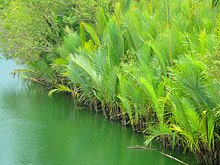

"Mangroves have a long fossil history, which includes traces of distinctive mangrove roots, fruits, and pollen. Pollen fossilizes particularly well, and is distinctive enough for identification to genus, sometimes even to species level. There are, of course, many problems in interpreting fossil evidence. Not all present-day members of the family Rhizophoraceae, for example, are mangroves, so fossil evidence of the existence of a member of this family is not necessarily evidence for the existence of mangroves. Ideally, corroborative evidence of a mangrove environment is desirable, such as fossil molluscs identifiable with modern mangrove residents. Conversely, of course, a fossil may not be recognized as mangrove if it belongs to a taxonomic group that is now extinct, or which has no modern mangrove representatives".[21]: 196
"The fossil evidence, supplemented by genetic comparisons between living mangrove species, suggests the possible course of mangrove evolution, dispersal, and diversification. Fossils interpreted as mangroves have been reported from the early Cretaceous era (Figure 10.4), or even earlier, but most are doubtful. Most mangrove taxa probably appeared first in the late Cretaceous, possibly between 100 and 80 Mya (million years ago), along the shores of Tethys. Nypa pollen appears by 69 Mya, in the late Cretaceous of Brazil, and by the Eocene it is found in the Caribbean, South America, Europe, Asia, and Australia. The earliest reliable mangrove fossil, other than pollen, is of fruit of the palm Nypa, in the early Paleocene. By the Miocene Nypa appears to have retracted to Asia, and, currently, apart from deliberate reintroduction in the Caribbean and West Africa, the single species N. fruticans is limited to Sri Lanka, S.E. Asia, the Philippines, Australia, and New Guinea (Figure 10.5) (Duke 1995; Plaziat 1995; Plaziat et al. 2001)".[21]: 196
- The oldest known fossils of mangrove palm date to 75 million years ago.[22]
- While only one species of Nypa now exists, Nypa fruticans, with a natural distribution extending from Northern Australia through the Indonesian Archipelago and the Philippine Islands up to China, the genus Nypa once had a nearly global distribution in the Eocene (56–33.4 million years ago).[23]
- The giant Paralititan is the first dinosaur demonstrated to have inhabited a mangrove habitat. A autochthonous, scavenged skeleton was found preserved in tidal flat deposits containing in the form of fossil leaves and root systems, a mangrove vegetation of seed ferns, Weichselia reticulata. The mangrove ecosystem it inhabited was situated along the southern shore of the Tethys Sea.[24]
A world without mangroves?
[edit]- "A World Without Mangroves?"[25]
- Mangroves give cause for conservation optimism, for now[26]
- Public Perceptions of Mangrove Forests Matter for Their Conservation[27]
Evolution
[edit]Genetic divergence of mangrove lineages from terrestrial relatives, in combination with fossil evidence, suggests mangrove diversity is limited by evolutionary transition into the stressful marine environment, and the number of mangrove lineages has increased steadily over the Tertiary with little global extinction.[28]
"The 'vicariance hypothesis' asserts that mangrove taxa evolved around the Tethys Sea during the Late Cretaceous, and regional species diversity resulted from in situ diversification after continental drift."[29]
- "Biogeomorphic evolution and expansion of mangrove forests in New Zealand's sediment-rich estuarine systems". doi:10.1016/B978-0-12-816437-2.00013-6.
{{cite journal}}: Cite journal requires|journal=(help) - "Evolution and paleobiogeography of mangroves". doi:10.1111/maec.12571.
{{cite journal}}: Cite journal requires|journal=(help)
Isotopes
[edit]
Taxonomy
[edit]PARAPHRASE: "The vegetation of mangrove forests is loosely classified as "true mangroves" or "mangrove associates". True mangroves are woody plants, facultative or obligate halophytes (Wang et al. 2011). "True mangroves" are defined by P. B. Tomlinson (2016) as plant species that 1) occur only in mangrove forests and are not found in terrestrial communities; 2) play a major role in the structure of the mangrove community, sometimes forming pure stands; 3) have morphological specialisations to the mangrove environment; 4) have some mechanism for salt exclusion.[16]
Other notable specialisations of mangrove plants include: aerial roots to counteract the anaerobic sediments, support structures such as buttresses and above-ground roots, low water potentials and high intracellular salt concentrations, salt-excretion through leaves and buoyant, viviparous propagules".[30][31]
"This dataset contains traits for 55 species of "true mangroves". To standardise the spelling of species' names, The Plant List (2013) was followed. Some species listed below are currently considered as synonyms in The Plant List (e.g. Avicennia alba is currently a synonym of Avicennia marina). However, they were chosen to be included under the names given by the authors to allow the tracking of the original information. All records of Ceriops tagal var. australis were included as Ceriops australis, and Ceriops tagal var. tagal was included as Ceriops tagal following Ballment et al. (1988)."[31]
"Mangrove species are classified as true mangroves and mangrove associates."[32]
Mangrove environments in the Eastern Hemisphere harbour six times as many species of trees and shrubs as do mangroves in the New World.
True mangroves
[edit]| True mangroves (major components or strict mangroves) | ||||
|---|---|---|---|---|
| Following Tomlinson, 2016, the following 35 species are the true mangroves, contained in 5 families and 9 genera [16]: 29–30 Included on green backgrounds are annotations about the genera made by Tomlinson | ||||
| Family | Genus | Mangrove species | Common name | |
| Arecaceae | Monotypic subfamily within the family | |||
| Nypa | Nypa fruticans | Mangrove palm | 
| |
| Avicenniaceae (disputed) |
Old monogeneric family, now subsumed in Acanthaceae, but clearly isolated | |||
| Avicennia | Avicennia alba | 
| ||
| Avicennia balanophora | ||||
| Avicennia bicolor | ||||
| Avicennia integra | ||||
| Avicennia marina | grey mangrove (subspecies: australasica, eucalyptifolia, rumphiana) |
|||
| Avicennia officinalis | Indian mangrove | |||
| Avicennia germinans | black mangrove | |||
| Avicennia schaueriana | ||||
| Avicennia tonduzii | ||||
| Combretaceae | Tribe Lagunculariae (including Macropteranthes = non-mangrove) | |||
| Laguncularia | Laguncularia racemosa | white mangrove | 
| |
| Lumnitzera | Lumnitzera racemosa | white-flowered black mangrove | ||
| Lumnitzera littorea | ||||
| Rhizophoraceae | Rhizophoraceae collectively form the tribe Rhizophorae, a monotypic group, within the otherwise terrestrial family | |||
| Bruguiera | Bruguiera cylindrica | |||
| Bruguiera exaristata | rib-fruited mangrove | |||
| Bruguiera gymnorhiza | oriental mangrove | 
| ||
| Bruguiera hainesii | ||||
| Bruguiera parviflora | ||||
| Bruguiera sexangula | upriver orange mangrove | |||
| Ceriops | Ceriops australis | yellow mangrove | 
| |
| Ceriops tagal | spurred mangrove | 
| ||
| Kandelia | Kandelia candel | |||
| Kandelia obovata | ||||
| Rhizophora | Rhizophora apiculata | |||
| Rhizophora harrisonii | ||||
| Rhizophora mangle | red mangrove | |||
| Rhizophora mucronata | Asiatic mangrove | 
| ||
| Rhizophora racemosa | ||||
| Rhizophora samoensis | Samoan mangrove | |||
| Rhizophora stylosa | spotted mangrove, | |||
| Rhizophora x lamarckii | ||||
| Lythraceae | Sonneratia | Sonneratia alba | 
| |
| Sonneratia apetala | ||||
| Sonneratia caseolaris | ||||
| Sonneratia ovata | ||||
| Sonneratia griffithii | ||||
Minor components
[edit]| Minor components | ||||
|---|---|---|---|---|
| Tomlinson, 2016, lists about 19 species as minor mangrove components, contained in 10 families and 11 genera [16]: 29–30 Included on green backgrounds are annotations about the genera made by Tomlinson | ||||
| Family | Genus | Species | Common name | |
| Euphorbiaceae | This genus includes about 35 non-mangrove taxa | |||
| Excoecaria | Excoecaria agallocha | milky mangrove, blind-your-eye mangrove and river poison tree | 
| |
| Lythraceae | Genus distinct in the family | |||
| Pemphis | Pemphis acidula | bantigue or mentigi | ||
| Malvaceae | Formerly in Bombacaceae, now an isolated genus in subfamily Bombacoideeae | |||
| Camptostemon | Camptostemon schultzii | kapok mangrove | 
| |
| Camptostemon philippinense | ||||
| Meliaceae | Genus of 3 species, one non-mangrove, forms tribe Xylocarpaeae with Carapa, a non–mangrove | |||
| Xylocarpus | Xylocarpus granatum | 
| ||
| Xylocarpus moluccensis | ||||
| Myrtaceae | An isolated genus in the family | |||
| Osbornia | Osbornia octodonta | mangrove myrtle | ||
| Pellicieraceae | Monotypic genus and family of uncertain phylogenetic position | |||
| Pelliciera | Pelliciera rhizophorae, | tea mangrove | ||
| Plumbaginaceae | Isolated genus, at times segregated as family Aegialitidaceae | |||
| Aegialitis | Aegialitis annulata | club mangrove | ||
| Aegialitis rotundifolia | ||||
| Primulaceae | Formerly an isolated genus in Myrsinaceae | |||
| Aegiceras | Aegiceras corniculatum | black mangrove, river mangrove or khalsi | ||
| Aegiceras floridum | ||||
| Pteridaceae | A fern somewhat isolated in its family | |||
| Acrostichum | Acrostichum aureum | golden leather fern, swamp fern or mangrove fern | ||
| Acrostichum speciosum | mangrove fern | |||
| Rubiaceae | A genus isolated in the family | |||
| Scyphiphora | Scyphiphora hydrophylacea | nilad | ||
Mangrove associates
[edit]Trees
[edit]-
High tide
-
Rhizophora sp.
-
Mature Avicennia marina
-
Young Rhizophora mangle L. tree growing on a beach
Soil
[edit]Galleries
[edit]

- fruit and flowers
-
Rhizophora mucronata or red mangrove flowers
-
Mangrove flowers, possibly Sonneratia alba
-
Tall-stilt mangrove (Rhizophora apiculata) flower
-
Mangrove rubbervine, Rhabdadenia biflora
-
Flower of the oriental mangrove, Bruguiera gymnorrhiza
-
Red mangrove, Rhizophora mangle flowers
-
fruit of the white mangrove, Avicennia marina
- mangrove propagules and pneumatophores
-
Baby red mangrove, Rhizophora mangle
-
Red mangrove propagules
-
Propagules are used by the mangroves to breathe since normal roots are underwater most of the time
-
Black mangrove pneumatophores
- mangroves
-
Mangrove architecture
-
Mangroves, Yucatan
-
Mangrove roots
-
Mangrove roots
-
Mangroves along a lagoon
-
Mangrove tree stabilises its base
-
Rhizophora mangle (red mangrove) Bahamas
-
Magrove roots provide habitat for numerous marine animals (NOAA)
-
Mangrove roots hanging loose during a low tide
-
Rhizophora mangle roots
-
White mangrove roots
-
Mangrove roots at low tide
-
Mangrove roots
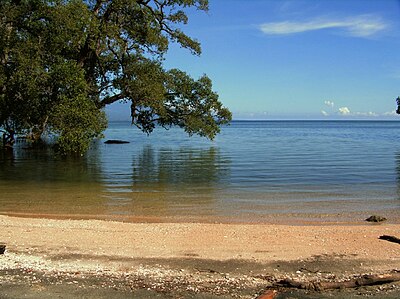
Roots
[edit]
- root structure
The structural complexity of mangrove root systems provides multifunctional ecological habitats that enhance ecosystem processes and ensure the provision of services. To date, the ecological implications and roles of these microstructures at fine scales are overlooked. Here, the complexity among the root systems of three mangrove tree species; Rhizophora mucronata, Avicennia marina and Bruguiera gymnorhiza at two mangrove forests in South Africa, was empirically assessed using 3D scanning techniques to address the biotic and abiotic implications of such structures relative to the occurrence of marine larval communities within the system.[33]
The structural complexity of available habitat generally influences biological community organisation by promoting species coexistence through reducing niche overlap (Kremer and Klausmeier, 2013, Levins, 1979), mediating predation by providing refuge for smaller organisms and altering the physical environment (Granek and Frasier, 2007, Nagelkerken, 2009). These effects have been observed in both terrestrial (e.g. Tews et al., 2004, Finke and Denno, 2006) and aquatic systems (e.g. Hindell and Jenkins, 2004, Jenkins et al., 1997). The complexity of self-organising aquatic habitats has been estimated using a variety of tools over varying spatial extents (for a review see Kovalenko et al., 2012). The stride in technological advancement in recent years has enabled the fractal dimensions of objects to be used in 3D space via tomography (e.g. Perret et al., 2003), photogrammetry (e.g. Fukunaga et al., 2019) and 3D scanning (e.g. Kamal et al., 2017, Reichert et al., 2017). These 3D models, developed using mathematical equations to calculate fractal dimensions of objects to measure non-integer complexity, have been increasingly used to address current ecological issues such as the quantification of coral reef habitat complexity, sediment accretion in mangroves and implications of artificial structures for fish assemblages (Kamal et al., 2017, Porter et al., 2018, Reichert et al., 2017).[33]
The complexity provided by mangrove root systems provides a critical nursery habitat for numerous species of ecological and commercial importance (Nagelkerken, 2009, Rönnbäck et al., 1999). Mangroves also act as a natural filter for pollutants (Kristensen et al., 2011), serve as both a source and sink for nutrients and sediment (Donato et al., 2011), as well as play a pivotal role in protecting coastal communities from storm surges (Blankespoor et al., 2017). Only one study (Kamal et al., 2017), however, has made use of realistic quantitative measures to explore the complexity-service dynamics, whilst simple mimics using PVC piping and artificial units of the actual habitat have otherwise been used to evaluate the role of root attributes in attracting juvenile fish (Nagelkerken et al., 2010). Despite the well-documented link between large-scale mangrove habitat complexity and provision of ecosystem services, no information is available on how the fine-scale structural 3D habitat complexity of root systems from different mangrove tree species may help explain the biotic organisation of larval communities.[33]
- root microbiome
Mangrove roots harbor a repertoire of microbial taxa that contribute to important ecological functions in mangrove ecosystems. However, the diversity, function, and assembly of mangrove root-associated microbial communities along a continuous fine-scale niche remain elusive. Here, we applied amplicon and metagenome sequencing to investigate the bacterial and fungal communities among four compartments (nonrhizosphere, rhizosphere, episphere, and endosphere) of mangrove roots. We found different distribution patterns for both bacterial and fungal communities in all four root compartments, which could be largely due to niche differentiation along the root compartments and exudation effects of mangrove roots. The functional pattern for bacterial and fungal communities was also divergent within the compartments. The endosphere harbored more genes involved in carbohydrate metabolism, lipid transport, and methane production, and fewer genes were found to be involved in sulfur reduction compared to other compartments.[34]
Mangrove forests play important ecological functions at the interface between terrestrial and marine ecosystems.[34]
Mangroves account for 60–70% of tropical and sub-tropical coastlines worldwide [35] and have tremendous ecological importance as they participate in elemental cycling,[36][37][38] mediate global climate change,[37] protect coastlines,[39] and facilitate phytoremediation.[35][34]
Similar to typical terrestrial plants, mangroves depend upon mutually beneficial interactions with microbial communities1. In particular, microbes residing in developed roots could help mangroves transform nutrients into usable forms prior to plant assimilation2,6. These microbes also provide mangroves phytohormones for suppressing phytopathogens7 or helping mangroves withstand heat and salinity1. In turn, root-associated microbes receive carbon metabolites from the plant via root exudates8, thus close associations between the plant and microbes are established for their mutual benefits9.[34]
Highly diverse microbial communities (mainly bacteria and fungi) have been found to inhabit and function in mangrove roots5,10,11. For example, diazotrophic bacteria in the vicinity of mangrove roots could perform biological nitrogen fixation, which provides 40–60% of the total nitrogen required by mangroves12,13; the soil attached to mangrove roots lacks oxygen but is rich in organic matter, providing an optimal microenvironment for sulfate-reducing bacteria (SRB) and methanogens1; ligninolytic, cellulolytic, and amylolytic fungi are prevalent in the mangrove root environment10; rhizosphere fungi could help mangroves survive in waterlogged and nutrient-restricted environments14. These studies have provided increasing evidences to support the importance of root-associated bacteria and fungi for mangrove growth and health1,2. However, systematic field studies on the overall taxonomic and functional diversity of mangrove root-associated microbial communities are still limited beyond examples of specific types of functional microbial members10,12,13,14.[34]
Recent studies have investigated the detailed structure of root-associated microbial communities at a continuous fine-scale in other plants15, where a microhabitat was divided into four root compartments: endosphere7,15,16, episphere7, rhizosphere15,17, and nonrhizosphere18,19. Moreover, the microbial communities in each compartment have been reported to have unique characteristics7,15. The rhizosphere could emit root exudates that selectively enriched specific microbial populations; however, these exudates were found to exert only marginal impacts on microbes in the nonrhizosphere soil8,9. Furthermore, it was noted that the root episphere, rather than the rhizosphere, was primarily responsible for controlling the entry of specific microbial populations into the root7, resulting in the selective enrichment of Proteobacteria in the endosphere7,20. These findings provide new insights into the niche differentiation of root-associated microbial communities7,8,9,20. Nevertheless, amplicon-based community profiling may not provide the functional characteristics of root-associated microbial communities in plant growth and biogeochemical cycling21. Unraveling functional patterns across the four root compartments holds a great potential for understanding functional mechanisms responsible for mediating root–microbe interactions in support of enhancing mangrove ecosystem functioning.[34]
Recently, root exudates were reported to be well-known determinants of root-associated microbial assemblages. Root exudation is a spatially defined process that contributes to distinct microbial communities that have been linked to specific root compartments8. This is partly because root exudates could act as a carbon sources and alter the rhizosphere pH7,8,15. However, the effect of root exudates on rhizobiome assembly is complicated, and the strategy of root-associated microbial community assembly at the soil-root interface remains controversial. The findings of some studies on root-associated microbiota in rice corroborate a two-step or multiple-step model in the root microbiota assembly, where specific microbial taxa in soil gradually become depleted or enriched during root colonization15,22. Other studies on rice and Medicago root-associated microbiota pointed to the applicability of the amplification-selection process, where dominant phyla would undergo substantial enrichment in the rhizosphere followed by the specific recruitment of certain phyla into the roots23. We aimed to determine the assembly processes that shape mangrove root-associated microbiota and examine the extent of differentiation and enrichment of mangrove root-specific microbial taxa across four root compartments. Furthermore, a community assembly framework developed by Vellend24 and modified by Stegen et al.25 allowed us to disentangle the ecological processes (heterogeneous selection, homogeneous selection, homogeneous dispersal, dispersal limitation, and undominated processes) that drive the mangrove root-associated microbial community composition at the spatial scale.[34]

- Damage to prop roots
In mangrove forests, trees are attacked by both terrestrial and marine animals (Ellison & Farnsworth, 1996; Feller, 2002). Mangrove wood herbivores range from insects such as beetles (Perry, 1988; Feller & Mathis, 1997) to wood-boring aquatic molluscs (Teredinidae) (Robertson & Daniel, 1989). Mangroves are also subject to tunnelling by non-herbivorous aquatic wood-boring isopods (sphaeromatidae), where principally the mangrove prop and aerial roots are attacked and damaged (Svavarsson et al., 2002).[40]
Damage to prop roots may also occur from physical actions such as abrasion (Gill & Tomlinson, 1977), or by falling branches from the canopy. Debris brought in by the tides (Lee et al., 2014) and extreme storm events may also damage mangrove roots (McIvor et al., 2013; Jusoff, 2013), which are predicted to increase (Bhatt & Kathiresan, 2012). Anthropogenic activities will also damage prop roots. Artisanal fishers damage many prop roots from harvesting oysters by hacking the bivalves off the roots using machetes (Crow & Carney, 2013).[40]
Studies of prop-root damage from wood-boring animals are primarily focussed upon sphaeromid isopods (Perry, 1988). In Costa Rica, the destructive effect of the sphaeromid, Sphaeroma peruvianum Richardson, 1910 on live mangrove root tissues can reduce the growth rates of Rhizophora mangle L. aerial prop roots by 50% (Perry, 1988). Trees affected by isopods may suffer lower performance as photosynthesis, gaseous exchange and nutrient uptake would be reduced compared to uneaten trees. The total effect of minor damage can therefore negatively affect trees by diverting energy to repairing the damage (Brooks & Bell, 2002), compromising root and tree fitness. However, it is thought that sphaeromids are unable to burrow into older developed roots that reach the substratum due to the development of woody tissue in the older roots (Perry, 1988). The development of woody tissue may be an attractive habitat for larval teredinids to settle upon, but teredinids predominantly process dead wood in the mid-to-low intertidal (Filho et al., 2008; Hendy et al., 2013). Increased tidal inundation may then enhance the breakdown of damaged mangrove roots because densities of wood borers become more numerous with longer immersion (Robertson & Daniel, 1989; Svavarsson et al., 2002).[40]
Some trees are protected from herbivorous attack by their chemical and structural anti-herbivore defence mechanisms (Turner, 1976; Brooks & Bell, 2002). Plants are able to survive in environments where herbivores are common due to their ability to resist or recover from repeated herbivory (Brooks & Bell, 2002; Hanley et al., 2007). To combat attack, some plants release tannins (Bloch, 1952; Alongi, 1987). However, it is beneficial for the plant to produce these chemical compounds only when they are required as herbivore attack is random and variable (Hol et al., 2004). The energy required to produce tannins can be costly (Agrawal et al., 1999; Karban et al., 1997). Thus, particular mangrove trees may express resistance only when it is needed to reduce energetic cost into producing the tannins.[40]
Energy expenditure may eventually lead to a decrease in fitness. The loss of fitness may be due to increased energy investments and greater use of resources (Agrawal, 1999). Conversely, herbivory may be beneficial (Paige & Whitham, 1987; Paige, 1992). Herbivory on plants elicits a physiological response that can create an over compensation (excess) regrowth of tissue (Lennartsson et al., 1998). Increased plant growth may ultimately achieve greater fitness (Paige & Whitham, 1987).[40]
&&&&&&&&& INCLUDES COPY FROM: Aerial root
- Aerial root
- Buttress root prop root, stilt root
- Pneumatophore air root, pencil root
- breathing roots
"The respiratory gas exchange in the roots of two common mangroves has been investigated.



The black mangrove, Avicennia nitida has a system of sponge-like radial roots embedded in the waterlogged mangrove mud which lacks oxygen.
COPY FROM mangrove:

Mangrove plants require a number of physiological adaptations to overcome the problems of low environmental oxygen levels, high salinity, and frequent tidal flooding. Each species has its own solutions to these problems; this may be the primary reason why, on some shorelines, mangrove tree species show distinct zonation. Small environmental variations within a mangal may lead to greatly differing methods for coping with the environment. Therefore, the mix of species is partly determined by the tolerances of individual species to physical conditions, such as tidal flooding and salinity, but may also be influenced by other factors, such as crabs preying on plant seedlings.[41]
Once established, mangrove roots provide an oyster habitat and slow water flow, thereby enhancing sediment deposition in areas where it is already occurring. The fine, anoxic sediments under mangroves act as sinks for a variety of heavy (trace) metals which colloidal particles in the sediments have concentrated from the water. Mangrove removal disturbs these underlying sediments, often creating problems of trace metal contamination of seawater and organisms of the area.[42]
Mangrove swamps protect coastal areas from erosion, storm surge (especially during tropical cyclones), and tsunamis.[43][44][45] They limit high-energy wave erosion mainly during events such as storm surges and tsunamis.[46] The mangroves' massive root systems are efficient at dissipating wave energy.[47] Likewise, they slow down tidal water enough so that its sediment is deposited as the tide comes in, leaving all except fine particles when the tide ebbs.[48] In this way, mangroves build their environments.[43] Because of the uniqueness of mangrove ecosystems and the protection against erosion they provide, they are often the object of conservation programs,[49] including national biodiversity action plans.[44]
The unique ecosystem found in the intricate mesh of mangrove roots offers a quiet marine habitat for young organisms.[50] In areas where roots are permanently submerged, the organisms they host include algae, barnacles, oysters, sponges, and bryozoans, which all require a hard surface for anchoring while they filter-feed. Shrimps and mud lobsters use the muddy bottoms as their home.[51] Mangrove crabs eat the mangrove leaves, adding nutrients to the mangal mud for other bottom feeders.[52] In at least some cases, the export of carbon fixed in mangroves is important in coastal food webs.[53]
- Adaptations to low oxygen
Red mangroves, which can survive in the most inundated areas, prop themselves above the water level with stilt or prop roots and can then absorb air through pores in their bark (lenticels).[54]Black mangroves live on higher ground and make many pneumatophores (specialized root-like structures which stick up out of the soil like straws for breathing).[55][56]
These "breathing tubes" typically reach heights of up to 30 cm (12 in), and in some species, over 3 m (9.8 ft). The four types of pneumatophores are stilt or prop type, snorkel or peg type, knee type, and ribbon or plank type. Knee and ribbon types may be combined with buttress roots at the base of the tree. The roots also contain wide aerenchyma to facilitate transport within the plants.[citation needed]
- Nutrient uptake
Because the soil is perpetually waterlogged, little free oxygen is available. Anaerobic bacteria liberate nitrogen gas, soluble ferrum (iron), inorganic phosphates, sulfides, and methane, which make the soil much less nutritious.[citation needed] Pneumatophores (aerial roots) allow mangroves to absorb gases directly from the atmosphere, and other nutrients such as iron, from the inhospitable soil. Mangroves store gases directly inside the roots, processing them even when the roots are submerged during high tide.
Lenticels
[edit]"Oxygen enters a mangrove through lenticels, thousands of cell-sized breathing pores in the bark and roots. Lenticels close tightly during high tide, thus preventing mangroves from drowning."[20]
Pneumatophores
[edit]The roots extend horizontally, sprouting pneumatophores as they go. Pneumatophore are small aerating roots which help the mangroves breath, as illustrated in the images below. Both radial and aerating roots are filled with gas. The surface of the pneumatophores are covered with lenticels (small pores) which take up air into the spongy tissues. The root system loses pressure when the incoming tide covers the lenticels, and regains pressure as the tide recedes.
PARAPHRASE: => "At low tide the oxygen concentration in the radial roots is usually around 10-18 per cent. Synchronously with the tidal drop in gas pressure the oxygen concentration in the roots falls. In comparison the CO2 rises very little. This respiratory gas shrinkage is the cause of the pressure drop. When the lenticels are freed by the falling tide the oxygen rises in the roots until they are covered by the next high tide. This tidal rhythm is not found in roots situated above the tidal action. In such roots a diurnal variation in the oxygen concentration may be apparent, with the oxygen lowest in daytime. Sometimes this diurnal rhythm may be seen to superimpose upon the tidal rhythm. On falling tide the gas pressure returns to atmospheric. This is caused by air being drawn in through the lenticels on the pneumatophores. When the pneumatophores are eliminated the oxygen in the roots drops, reaching in two days one per cent or less, proving that the pneumatophores in Avicennia are chimneys serving as ventilators for the root system in the anaerobic mud."[57]

PARAPHRASE: => "The stilt roots of Rhizophora end in a bunch of spongy, gas-filled roots embedded in the mud which was found to be entirely oxygen free. The roots in the mud maintain a high oxygen concentration of 15-18 per cent, which showed diurnal variations with lowest oxygen during daytime, like Avicennia. There is direct gas connection between the mud roots and the lenticels on the stilt roots. When the lenticels were plugged by grease the oxygen in the buried roots fell and reached in two days 2 per cent or less. The high oxygen tension in the roots of Rhizophora is therefore maintained by means of a ventilation which takes place through the lenticels on the stilt roots."[57]
- of Red Mangrove Improve Stability
- Mangrove Forests Calm Coastal Waters
- plus 10 other pages on mangroves
- Importance of Mangrove Forests - YouTube
- Mangroves: how they help the ocean - YouTube


Stability
[edit]Following the observations made during the recent extreme tsunami events, controversial opinions were published on the performance of the coastal forests subject to extreme tsunami. Coastal ecosystems may indeed act as a buffer against tsunami through a reduction of water flow velocity and inundation depth, debris blockage, their life saving role for people washed away by waves, and formation of sand dunes resulting from sand accumulation in front of the forest (Shuto, 1987; Harada and Imamura, 2005). A number of publications and reports confirming the positive role of coastal vegetation in tsunami attenuation, and based predominantly on the qualitative evaluation of the pre- and post-tsunami situation in the affected areas, reached the public after the 2004 Indian Ocean tsunami event (e.g. Dahdouh-Guebas et al., 2005; UNEP Report, 2005; EJF Report, 2006). The very low number of casualties as well as minimal damage suffered by villages located behind green belts, which have been reported in comparison to non-vegetated areas, were attributed to the healthy conditions the local vegetation of sufficient width and density.[58]
On the other hand, there were clear evidences of severe destruction of single trees or even entire forests through uprooting, bending or trunk breaking during past tsunami events (e.g. Shuto, 1987; Yanagisawa et al., 2009). The damage encompassed predominantly the first few tree rows facing an open sea, growing in estuaries or along channels as well as regions experiencing the maximum tsunami intensity. An extreme example is the damage of the forest in Rikuzentakata City (Japan) by the Tohoku 2011 tsunami. Only a single pine tree survived the tsunami attack, out of 70 000 mature trees whose trunks were broken at heights of 1–2 m above the ground (EERI Report, 2011).[58]
In spite of these contradictory opinions, it may be concluded that coastal forests might indeed provide an effective protection against tsunami up to a certain magnitude. The level of this protection is however conditioned by forest characteristics (i.e. tree species, tree age determining tree dimensions, tree health state, forest density, forest width, effect of shrubs), local bathymetrical and geographical features as well as soil properties (risk of uprooting).[58]
A number of studies have been performed, aiming at the improvement of the prediction of wave attenuation by coastal vegetation and at the determination of the corresponding hydraulic resistance, including experimental investigations (e.g. Imai and Matsutomi, 2005; Irtem et al., 2009) as well as numerical modelling (e.g. Harada and Imamura, 2005; Ohira et al., 2012). In 2013, Strusinska-Correia et al examined tsunami attenuation by mature mangroves under laboratory conditions (see models below).[58] The results of most of these investigations are representative for the mangrove Rhizophora sp., as its complex root system is believed to significantly contribute to the reduction of tsunami-induced flow.[58]



| How mangrove roots attenuate waves [60] | |
|---|---|
| Factor | Contribution |
| Mangrove density | Denser forests attenuate wave more effectively |
| Forest structure and width | Narrower forest width can be adopted for coastal protection when vegetation is tall and thick |
| Water depth | Resistance to wave increases with water depth in vegetated areas due to submergence of extra shoot but decrease with water depth for unvegetated areas |
| Incident wave height | Wave attenuation varies linearly with incident wave height in mangrove-protected zones but independent of the height for non-vegetated areas |
| Size of aerial roots | Rhizophora and Bruguiera species have more complex and bigger aerial roots which provide greater drag force and extra resistance to waves attack than Kandelia candel |
| Mangrove age | Mature trees are stiffer, more structurally stable and less susceptible to uprooting/breakage, therefore better attenuation capacity |
| stiffness of shoots | Spartina anglica has stiffer shoots and dissipates hydrodynamic forces up to three times higher than Zostera noltii |
Mangrove forests grow in intertidal areas in the tropical zones and they are characterized by their complex root system, specially red mangroves as Rhizophora species. The capacity of these ecosystems to reduce the incoming flow energy has already been proven (e.g.: Mazda et al. 1997; Narayan et al., 2016). Additionally, these ecosystems provide with other ecosystem services, such us increase biodiversity, improve water quality or capture CO2 (Barbier et al. 2011). Due to all these aspects, Nature Based Solutions, solutions for coastal protection based on ecosystems, have become an interesting option to mitigate and adapt to Climate Change.[61]
Although mangroves reduce annual flooding to millions of people (Menéndez et al., 2018) there is not a methodology to implement these solutions and it is still difficult to estimate the protection provided by them under different environmental conditions and ecosystem properties. To move forward in the consecution of an engineering approach when implementing these solutions the first step to make is to better understand and parameterise the basic physical processes involved in flow/mangroves interaction. Several studies have been performed in the last decade to characterise flow interaction with mangrove trees, trying to reproduce the complex geometry of these ecosystems (e.g.: Strusinska-Correia et al., 2013; Zhang et al., 2015; Maza et al. 2017). However, these studies have been performed at small scales without considering, in most of the cases, any similarity to define flow conditions and testing unidirectional flow or solitary waves.[61]
Rhizophores
[edit]PARAPHRASE => "Background and Aims: Rhizophora species of mangroves have a conspicuous system of stilt-like roots (rhizophores) that grow from the main stem and resemble flying buttresses. As such, the development of rhizophores can be predicted to be important for the effective transmission of dynamic loads from the top of the tree to the ground, especially where the substrate is unstable, as is often the case in the habitats where Rhizophora species typically grow. This study tests the hypothesis that rhizophore architecture in R. mangle co-varies with their proximity to the main stem, and with stem size and crown position."[62]
See [63]
Leaves
[edit]- mangrove leaves
-
Goat's horn mangrove, Aegiceras corniculatum leaf
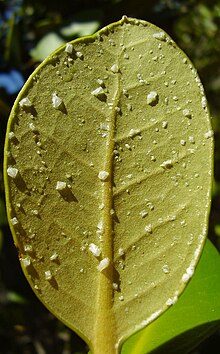


Cuticles
[edit]Salt glands
[edit]- Salt tolerance – Salt resistance
- "On the halophytic nature of mangroves". doi:10.1007/s00468-012-0767-7.
{{cite journal}}: Cite journal requires|journal=(help) This article incorporates text from this source, which is in the public domain.
This article incorporates text from this source, which is in the public domain.
Plant salt glands are nature’s desalination devices that harbour potentially useful information pertaining to salt and water transport during secretion.[64]
Plants growing in saline environment have to cope with the constant exposure to high levels of salt and limited availability of freshwater. In some halophytic plant species (i.e., plants that are able to tolerate salt concentrations as high as 500–1000mM), there exists specialised microscopic structures located predominantly on the leaves and stems that are able to remove salts from the internal tissues and deposit them on the leaf surfaces [1,2]. Known as the salt glands, they are nature’s desalination devices offering alternative routes for excess ion elimination through secretion, an adaptive feature that favours species inhabiting saline environment. Many of the salt gland studies focused on their secretory nature (e.g., [3–8]). The mechanism underlying such a desalination process, however, remains unclear.[64]


Water scarcity and salinity are major challenges facing agriculture today, which can be addressed by engineering plants to grow in the boundless seawater. Understanding the mangrove plants at the molecular level will be necessary for developing such highly salt-tolerant agricultural crops. With this objective, we sequenced the genome of a salt-secreting and extraordinarily salt-tolerant mangrove species, Avicennia marina, that grows optimally in 75% seawater and tolerates >250% seawater.[65]
The world population is expected to increase by more than 20 percent to ~9 billion by 20501. With 2 billion people already not having sufficient food2, crop production needs to increase significantly to feed the ever-increasing global population. Availability of water is a significant challenge to crop production in dryland areas, which accounts for ~40 percent of the world’s total land area3. Another water-related problem, salinity, is prevalent in ~900 million hectares, and it is estimated to cause an annual loss of 27 billion USD4,5,6. Though water makes up 71% of the earth’s surface, 96.5% is saline seawater unsuitable for growing plants. However, an exception to this is the mangrove plants that thrive in seawater and are central to the most productive tropical mangrove ecosystem7. Evidence suggests that mangrove plants evolved during the Late Cretaceous and early Tertiary period or Paleocene–Eocene epoch from independent terrestrial plant lineages exposed to the seawater8. While the mangrove plant’s remarkable adaptions to an otherwise harsh ecological setting have been studied9,10, our understanding is far from complete. Specialized mangrove roots with hydrophobic barriers and ultrafiltration mechanisms exclude 80 to 97% of salts11,12,13,14; nevertheless, continuous exposure to seawater leads to the absorption of a significant quantity of salts. To avoid the accumulation of excess salts, the leaves of some mangroves have specialized glands (Fig. 1) that excrete about 40% of the absorbed salts12,15. Osmotic regulation, ion sequestration, antioxidant enzymes, and compatible solutes protect the tissues from the detrimental effects of the salt that remains inside the plant system after exclusion and secretion16,17.[65]
The advances in genome sequencing and assembly technologies have enhanced our understanding of many plants and animals. While gene expression analysis and whole-genome sequencing studies are beginning to provide a molecular understanding of the mangrove plants10,18,19,20,21,22,23,24,25, reference-grade genome assembly, which is essential to carry out a comprehensive study on salinity tolerance genes at the whole-genome level, is not available for any mangrove species. In this study, we sequenced the genome and analyzed the salinity tolerance genes of Avicennia marina, an extremely salt-tolerant mangrove species with salt glands12,26. We report a 457 Mb reference-grade genome that contains 31,477 protein-coding genes. Further, we found that about 12% (3860 genes) of the A. marina genes constitute the salinome, a set of genes associated with salinity tolerance.[65]
- Limiting salt intake
Red mangroves exclude salt by having significantly impermeable roots which are highly suberised (impregnated with suberin), acting as an ultra-filtration mechanism to exclude sodium salts from the rest of the plant. Analysis of water inside mangroves has shown 90% to 97% of salt has been excluded at the roots. In a frequently cited concept that has become known as the "sacrificial leaf", salt which does accumulate in the shoot (sprout) than concentrates in old leaves, which the plant then sheds. However, recent research suggests the older, yellowing leaves have no more measurable salt content than the other, greener leaves.[66] Red mangroves can also store salt in cell vacuoles. White and grey mangroves can secrete salts directly; they have two salt glands at each leaf base (correlating with their name—they are covered in white salt crystals).
Life cycle/reproduction
[edit]
Reversing the decline of coastal marine ecosystems will rely extensively on ecological restoration. This will in turn rely on ensuring adequate supply and survival of propagules — for the main habitat-forming taxa of coastal marine ecosystems these are mainly fruits, seeds, viviparous seedlings, zoospores or larvae. The likelihood of propagule survival — and so restoration success — depends on species- and context-specific knowledge to guide choices about appropriate methods to use.[3]
Mangroves exhibit a variety of reproductive strategies, although one characteristic that all mangroves share is that their propagules float (at least for a day or two), and so can be dispersed by currents. Some taxa exhibit viviparity, in which an embryo emerges directly from the fruit and develops into a seedling while it is still attached to the parent plant, but many taxa reproduce via fruits with one or more seeds.[16] Mangroves typically rely on propagules for new growth,[67] a characteristic which indicates that the use of propagules in restoration should yield good results. However, mortality rates of propagules can be high, especially for species with small propagules which are susceptible to predators.[68][69][3]
Flowers
[edit]-
Black mangrove flower

Propagules (fruit, seed)
[edit]Vivipary
[edit]>>>>>> including copy from vivipary – see that page's history for attribution
In plants, vivipary occurs when seeds or embryos begin to develop before they detach from the parent. These fall and in favourable circumstances they have effectively a whole season's start over fallen seeds. Such production of embryos from somatic tissues is asexual vegetative reproduction that amounts to cloning. Most seed-bearing fruits produce a hormone that suppresses germination until after the fruit or parent plant dies, or the seeds pass through an animal's digestive tract. At this stage, the hormone's effect will dissipate and germination will occur once conditions are suitable. Some species lack this suppressant hormone as a central part of their reproductive strategy. For example, fruits that develop in climates without large seasonal variations.[71] This phenomenon occurs most frequently on ears of corn, tomatoes, strawberries, peppers, pears, citrus fruits, and plants that grow in mangrove environments.[72]
In some species of mangroves, for instance, the seed germinates and grows from its own resources while still attached to its parent. Seedlings of some species are dispersed by currents if they drop into the water, but others develop a heavy, straight taproot that commonly penetrates mud when the seedling drops, thereby effectively planting the seedling. This contrasts with the examples of vegetative reproduction mentioned above, in that the mangrove plantlets are true seedlings produced by sexual reproduction.
Species distribution
[edit]- Species round the world
USA Only four... back, red, white and buttonwood. NZ: grey South east Asia
See also
[edit]- Mangrove swamp
- Mangrove restoration
- Mangrove tree distribution
- Ecological values of mangroves
- Blue carbon#Mangrove
- asknature]
References
[edit]- ^ . doi:10.3389/fmars.2021.640528.
{{cite journal}}: Cite journal requires|journal=(help); Missing or empty|title=(help)CS1 maint: unflagged free DOI (link) Material was copied from this source, which is available under a Creative Commons Attribution 4.0 International License.
Material was copied from this source, which is available under a Creative Commons Attribution 4.0 International License.
- ^ . doi:10.1029/ce041p0063.
{{cite journal}}: Cite journal requires|journal=(help); Missing or empty|title=(help) - ^ a b c d . doi:10.3389/fmars.2020.00724.
{{cite journal}}: Cite journal requires|journal=(help); Missing or empty|title=(help)CS1 maint: unflagged free DOI (link) Material was copied from this source, which is available under a Creative Commons Attribution 4.0 International License.
Material was copied from this source, which is available under a Creative Commons Attribution 4.0 International License.
- ^ a b . doi:10.1371/journal.pone.0010095.
{{cite journal}}: Cite journal requires|journal=(help); Missing or empty|title=(help)CS1 maint: unflagged free DOI (link) - ^ a b . doi:10.1017/CBO9781139946575.
{{cite journal}}: Cite journal requires|journal=(help); Missing or empty|title=(help) - ^ . doi:10.1093/molbev/msw277.
{{cite journal}}: Cite journal requires|journal=(help); Missing or empty|title=(help) - ^ a b . doi:10.1046/j.1466-822X.1999.00126.x.
{{cite journal}}: Cite journal requires|journal=(help); Missing or empty|title=(help) - ^ a b c . doi:10.3389/fmars.2020.00327.
{{cite journal}}: Cite journal requires|journal=(help); Missing or empty|title=(help)CS1 maint: unflagged free DOI (link) Material was copied from this source, which is available under a Creative Commons Attribution 4.0 International License.
Material was copied from this source, which is available under a Creative Commons Attribution 4.0 International License.
- ^ a b c Ellison, A. M., and Farnsworth, E. J. (2001). “Mangrove communities,” in Marine Community Ecology, 1st Edn, eds M. D. Bertness, S. Gaines, and M. E. Hay (Sunderland, MA: Sinauer Associates), 423–442.
- ^ . doi:10.1890/1540-9295(2005)003[0479:LOFSCF]2.0.CO;2.
{{cite journal}}: Cite journal requires|journal=(help); Missing or empty|title=(help) - ^ . doi:10.1016/j.isci.2019.02.020.
{{cite journal}}: Cite journal requires|journal=(help); Missing or empty|title=(help) - ^ a b . doi:10.1111/geb.12449.
{{cite journal}}: Cite journal requires|journal=(help); Missing or empty|title=(help) - ^ FAO (2007) "The World's Mangroves 1980-2005",. FAO Forestry Paper, 153: 1–77.
- ^ . doi:10.4324/9781849776608.
{{cite journal}}: Cite journal requires|journal=(help); Missing or empty|title=(help) - ^ a b . doi:10.1038/s41586-020-2146-7.
{{cite journal}}: Cite journal requires|journal=(help); Missing or empty|title=(help) - ^ a b c d e f g Cite error: The named reference
Tomlinson2016was invoked but never defined (see the help page). - ^ . doi:10.1016/S0065-2881(08)60438-1.
{{cite journal}}: Cite journal requires|journal=(help); Missing or empty|title=(help) - ^ Van Rheede tot Drakenstein, H. (1678–1703). Hortus indicus Malabaricus, 12 vols. Amsterdam: J. van Someren & J. van Dyck.
- ^ Rumphius, G. E. 1741–1755. Herbarium Amboinense. Vol. 2. J. Burmann, ed. Amsterdam: Meinard Uytwerf.
- ^ a b c d e f g h What's a Mangrove? And How Does It Work? American Museum of Natural History. Accessed 20 October 2021.
- ^ a b Hogarth, Peter J. (2015) The Biology of Mangroves and Seagrasses OUP, Oxford. ISBN 9780198716549
- ^ Friess, D. A.; Rogers, K.; Lovelock, C. E.; Krauss, K. W.; Hamilton, S. E.; Lee, S. Y.; Lucas, R.; Primavera, J.; Rajkaran, A.; Shi, S. (2019). "The State of the World's Mangrove Forests: Past, Present, and Future". Annual Review of Environment and Resources. 44 (1): 89–115. doi:10.1146/annurev-environ-101718-033302.
- ^ Gee, Carole T. "The mangrove palm Nypa in the geologic past of the New World." Wetlands Ecology and Management 9.3 (2001): 181-203.
- ^ Smith JB, Lamanna MC, Lacovara KJ, Dodson P, Smith JR, Poole JC, Giegengack R, Attia Y (June 2001). "A giant sauropod dinosaur from an Upper Cretaceous mangrove deposit in Egypt". Science. 292 (5522): 1704–6. Bibcode:2001Sci...292.1704S. doi:10.1126/science.1060561. PMID 11387472. S2CID 33454060.
- ^ "A World Without Mangroves?". doi:10.1126/science.317.5834.41b.
{{cite journal}}: Cite journal requires|journal=(help) - ^ "Mangroves give cause for conservation optimism, for now". doi:10.1016/j.cub.2019.12.054.
{{cite journal}}: Cite journal requires|journal=(help) Material was copied from this source, which is available under a Creative Commons Attribution 4.0 International License.
Material was copied from this source, which is available under a Creative Commons Attribution 4.0 International License.
- ^ "Public Perceptions of Mangrove Forests Matter for Their Conservation". doi:10.3389/fmars.2020.603651.
{{cite journal}}: Cite journal requires|journal=(help)CS1 maint: unflagged free DOI (link) Material was copied from this source, which is available under a Creative Commons Attribution 4.0 International License.
Material was copied from this source, which is available under a Creative Commons Attribution 4.0 International License.
- ^ Ricklefs, R. E.; A. Schwarzbach; S. S. Renner (2006). "Rate of lineage origin explains the diversity anomaly in the world's mangrove vegetation" (PDF). American Naturalist. 168 (6): 805–810. doi:10.1086/508711. PMID 17109322. S2CID 1493815. Archived from the original (PDF) on 2013-06-16.
- ^ "Origins of mangrove ecosystems and the mangrove biodiversity anomaly". doi:10.1046/j.1466-822X.1999.00126.x.
{{cite journal}}: Cite journal requires|journal=(help) - ^ . doi:10.2307/2997695.
{{cite journal}}: Cite journal requires|journal=(help); Missing or empty|title=(help) - ^ a b "Dataset of "true mangroves" plant species traits". doi:10.3897/BDJ.5.e22089.
{{cite journal}}: Cite journal requires|journal=(help)CS1 maint: unflagged free DOI (link) - ^ . doi:10.1093/jpe/rtq008.
{{cite journal}}: Cite journal requires|journal=(help); Missing or empty|title=(help) - ^ a b c . doi:10.1016/j.ecolind.2020.107154.
{{cite journal}}: Cite journal requires|journal=(help); Missing or empty|title=(help) Material was copied from this source, which is available under a Creative Commons Attribution 4.0 International License.
Material was copied from this source, which is available under a Creative Commons Attribution 4.0 International License.
- ^ a b c d e f g Zhuang, Wei; Yu, Xiaoli; Hu, Ruiwen; Luo, Zhiwen; Liu, Xingyu; Zheng, Xiafei; Xiao, Fanshu; Peng, Yisheng; He, Qiang; Tian, Yun; Yang, Tony; Wang, Shanquan; Shu, Longfei; Yan, Qingyun; Wang, Cheng; He, Zhili (2020). "Diversity, function and assembly of mangrove root-associated microbial communities at a continuous fine-scale". NPJ Biofilms and Microbiomes. 6 (1): 52. doi:10.1038/s41522-020-00164-6. PMC 7665043. PMID 33184266.
 Material was copied from this source, which is available under a Creative Commons Attribution 4.0 International License.
Material was copied from this source, which is available under a Creative Commons Attribution 4.0 International License.
- ^ a b Thatoi, Hrudayanath; Behera, Bikash Chandra; Mishra, Rashmi Ranjan; Dutta, Sushil Kumar (2013). "Biodiversity and biotechnological potential of microorganisms from mangrove ecosystems: A review". Annals of Microbiology. 63: 1–19. doi:10.1007/s13213-012-0442-7. S2CID 17798850.
- ^ Liu, Xingyu; Yang, Chao; Yu, Xiaoli; Yu, Huang; Zhuang, Wei; Gu, Hang; Xu, Kui; Zheng, Xiafei; Wang, Cheng; Xiao, Fanshu; Wu, Bo; He, Zhili; Yan, Qingyun (2020). "Revealing structure and assembly for rhizophyte-endophyte diazotrophic community in mangrove ecosystem after introduced Sonneratia apetala and Laguncularia racemosa". Science of the Total Environment. 721: 137807. Bibcode:2020ScTEn.721m7807L. doi:10.1016/j.scitotenv.2020.137807. PMID 32179356. S2CID 212739128.
- ^ a b Yu, Xiaoli; Yang, Xueqin; Wu, Yongjie; Peng, Yisheng; Yang, Tony; Xiao, Fanshu; Zhong, Qiuping; Xu, Kui; Shu, Longfei; He, Qiang; Tian, Yun; Yan, Qingyun; Wang, Cheng; Wu, Bo; He, Zhili (2020). "Sonneratia apetala introduction alters methane cycling microbial communities and increases methane emissions in mangrove ecosystems". Soil Biology and Biochemistry. 144: 107775. doi:10.1016/j.soilbio.2020.107775. S2CID 216491211.
- ^ Alongi, Daniel M. (2014). "Carbon Cycling and Storage in Mangrove Forests". Annual Review of Marine Science. 6: 195–219. Bibcode:2014ARMS....6..195A. doi:10.1146/annurev-marine-010213-135020. PMID 24405426.
- ^ Srikanth, Sandhya; Lum, Shawn Kaihekulani Yamauchi; Chen, Zhong (2016). "Mangrove root: Adaptations and ecological importance". Trees. 30 (2): 451–465. doi:10.1007/s00468-015-1233-0. S2CID 5471541.
- ^ a b c d e . doi:10.1007/s10750-017-3106-6.
{{cite journal}}: Cite journal requires|journal=(help); Missing or empty|title=(help) Material was copied from this source, which is available under a Creative Commons Attribution 4.0 International License.
Material was copied from this source, which is available under a Creative Commons Attribution 4.0 International License.
- ^ Cannicci, Stefano; Fusi, Marco; Cimó, Filippo; Dahdouh-Guebas, Farid; Fratini, Sara (December 2018). "Interference competition as a key determinant for spatial distribution of mangrove crabs". BMC Ecology. 18 (1): 8. doi:10.1186/s12898-018-0164-1. PMC 5815208. PMID 29448932.
{{cite journal}}: CS1 maint: unflagged free DOI (link) - ^ Saenger, P.; McConchie, D. (2004). "Heavy metals in mangroves: methodology, monitoring and management". Envis Forest Bulletin. 4: 52–62. CiteSeerX 10.1.1.961.9649. Retrieved 13 August 2021.
- ^ a b Mazda, Y.; Kobashi, D.; Okada, S. (2005). "Tidal-Scale Hydrodynamics within Mangrove Swamps". Wetlands Ecology and Management. 13 (6): 647–655. CiteSeerX 10.1.1.522.5345. doi:10.1007/s11273-005-0613-4. S2CID 35322400.
- ^ a b Danielsen, F.; Sørensen, M. K.; Olwig, M. F; Selvam, V; Parish, F; Burgess, N. D; Hiraishi, T.; Karunagaran, V. M.; Rasmussen, M. S.; Hansen, L. B.; Quarto, A.; Suryadiputra, N. (2005). "The Asian Tsunami: A Protective Role for Coastal Vegetation". Science. 310 (5748): 643. doi:10.1126/science.1118387. PMID 16254180. S2CID 31945341.
- ^ Takagi, H.; Mikami, T.; Fujii, D.; Esteban, M.; Kurobe, S. (2016). "Mangrove forest against dyke-break-induced tsunami on rapidly subsiding coasts". Natural Hazards and Earth System Sciences. 16 (7): 1629–1638. Bibcode:2016NHESS..16.1629T. doi:10.5194/nhess-16-1629-2016.
- ^ Dahdouh-Guebas, F.; Jayatissa, L. P.; Di Nitto, D.; Bosire, J. O.; Lo Seen, D.; Koedam, N. (2005). "How effective were mangroves as a defence against the recent tsunami?". Current Biology. 15 (12): R443–447. doi:10.1016/j.cub.2005.06.008. PMID 15964259. S2CID 8772526.
- ^ Massel, S. R.; Furukawa, K.; Brinkman, R. M. (1999). "Surface wave propagation in mangrove forests". Fluid Dynamics Research. 24 (4): 219. Bibcode:1999FlDyR..24..219M. doi:10.1016/s0169-5983(98)00024-0.
- ^ Mazda, Y.; Wolanski, E.; King, B.; Sase, A.; Ohtsuka, D.; Magi, M. (1997). "Drag force due to vegetation in mangrove swamps". Mangroves and Salt Marshes. 1 (3): 193. doi:10.1023/A:1009949411068. S2CID 126945589.
- ^ Cite error: The named reference
Zimmerwas invoked but never defined (see the help page). - ^ Bos, AR; Gumanao, GS; Van Katwijk, MM; Mueller, B; Saceda, MM; Tejada, RL (2010). "Ontogenetic habitat shift, population growth, and burrowing behavior of the Indo-Pacific beach star, Archaster typicus (Echinodermata; Asteroidea)". Marine Biology. 158 (3): 639–648. doi:10.1007/s00227-010-1588-0. PMC 3873073. PMID 24391259.
- ^ Encarta Encyclopedia 2005. "Seashore", by Heidi Nepf.
- ^ Skov, M. W.; Hartnoll, R. G. (2002). "Paradoxical selective feeding on a low-nutrient diet: Why do mangrove crabs eat leaves?". Oecologia. 131 (1): 1–7. Bibcode:2002Oecol.131....1S. doi:10.1007/s00442-001-0847-7. PMID 28547499. S2CID 23407273.
- ^ Abrantes KG, Johnston R, Connolly RM, Sheaves M (2015-01-01). "Importance of Mangrove Carbon for Aquatic Food Webs in Wet–Dry Tropical Estuaries". Estuaries and Coasts. 38 (1): 383–99. doi:10.1007/s12237-014-9817-2. hdl:10072/141734. ISSN 1559-2731. S2CID 3957868.
- ^ "Red mangrove". Department of Agriculture and Fisheries, Queensland Government. January 2013. Retrieved 13 August 2021.
- ^ "Black Mangrove (Avicennia germinans)". The Department of Environment and Natural Resources, Government of Bermuda. Retrieved 13 August 2021.
- ^ "Morphological and Physiological Adaptations". Newfound Harbor Marine Institute. Retrieved 13 August 2021.
- ^ a b "Gas Exchange in the Roots of Mangroves". doi:10.2307/2438597.
{{cite journal}}: Cite journal requires|journal=(help) - ^ a b c d e f . doi:10.5194/nhess-13-483-2013.
{{cite journal}}: Cite journal requires|journal=(help); Missing or empty|title=(help)CS1 maint: unflagged free DOI (link) Material was copied from this source, which is available under a Creative Commons Attribution 3.0 International License.
Material was copied from this source, which is available under a Creative Commons Attribution 3.0 International License.
- ^ a b . doi:10.1038/s41598-021-88119-5.
{{cite journal}}: Cite journal requires|journal=(help); Missing or empty|title=(help) Material was copied from this source, which is available under a Creative Commons Attribution 4.0 International License.
Material was copied from this source, which is available under a Creative Commons Attribution 4.0 International License.
- ^ Table based on: . doi:10.3390/eng2020015.
{{cite journal}}: Cite journal requires|journal=(help); Missing or empty|title=(help)CS1 maint: unflagged free DOI (link) Material was copied from this source, which is available under a Creative Commons Attribution 4.0 International License.
Material was copied from this source, which is available under a Creative Commons Attribution 4.0 International License.
- ^ a b . doi:10.18451/978-3-939230-64-9_103.
{{cite journal}}: Cite journal requires|journal=(help); Missing or empty|title=(help) Material was copied from this source, which is available under a Creative Commons Attribution 4.0 International License.
Material was copied from this source, which is available under a Creative Commons Attribution 4.0 International License.
- ^ . doi:10.1093/aob/mcv002.
{{cite journal}}: Cite journal requires|journal=(help); Missing or empty|title=(help) - ^ "Rhizophores in Rhizophora mangle L: an alternative interpretation of so-called aerial roots'". doi:10.1590/S0001-37652006000200003.
{{cite journal}}: Cite journal requires|journal=(help) - ^ a b c . doi:10.1371/journal.pone.0133386.
{{cite journal}}: Cite journal requires|journal=(help); Missing or empty|title=(help)CS1 maint: unflagged free DOI (link) Material was copied from this source, which is available under a Creative Commons Attribution 4.0 International License.
Material was copied from this source, which is available under a Creative Commons Attribution 4.0 International License.
- ^ a b c d . doi:10.1038/s42003-021-02384-8.
{{cite journal}}: Cite journal requires|journal=(help); Missing or empty|title=(help) Material was copied from this source, which is available under a Creative Commons Attribution 4.0 International License.
Material was copied from this source, which is available under a Creative Commons Attribution 4.0 International License.
- ^ Gray, L. Joseph; et al. (2010). "Sacrificial leaf hypothesis of mangroves" (PDF). ISME/GLOMIS Electronic Journal. GLOMIS. Retrieved 21 January 2012.
- ^ . doi:10.1016/s0065-2881(01)40003-4.
{{cite journal}}: Cite journal requires|journal=(help); Missing or empty|title=(help) - ^ . doi:10.2307/2259180.
{{cite journal}}: Cite journal requires|journal=(help); Missing or empty|title=(help) - ^ . doi:10.1046/j.1365-2745.2002.00705.x.
{{cite journal}}: Cite journal requires|journal=(help); Missing or empty|title=(help) - ^ . doi:10.1002/ecs2.2208.
{{cite journal}}: Cite journal requires|journal=(help); Missing or empty|title=(help) Material was copied from this source, which is available under a Creative Commons Attribution 4.0 International License.
Material was copied from this source, which is available under a Creative Commons Attribution 4.0 International License.
- ^ "Vivipary: An Unusual, Unsettling, and Fascinating Phenomenon". The Seed Collection. Retrieved 28 September 2021.
- ^ "What Is Vivipary". Gardening Know How. Retrieved 28 September 2021.
Mangrove forests
[edit]Overview
[edit]Mangroves forests have been characterised as the "rain forests of the sea".[1]
Mangrove forests play important ecological functions at the interface between terrestrial and marine ecosystems.[2] Mangroves account for 60–70% of tropical and sub-tropical coastlines worldwide [3] and have tremendous ecological importance as they participate in elemental cycling,[4][5][6] mediate global climate change,[5] protect coastlines,[7] and facilitate phytoremediation.[3][2]
Mangrove forest ecosystems encompass genetically diverse communities at interfaces between terrestrial and marine ecosystems in many subtropical and tropical regions.[8] These transition ecosystems provide spawning and breeding grounds, nurseries, and habitats for many aquatic, semi-aquatic and terrestrial animals. Root systems of mangrove trees also provide natural barriers that reduce impacts of storms and protect coasts from erosion.[9] Moreover, mangrove forests are not only ecologically important but also economically valuable.[10][11]. Many mangrove tree species are used for timber, fuelwood, and charcoal.[10] Mangrove forests are also rich sources of honey, and diverse medicinal, cosmetic, and other products.[10][11] In addition, they now attract many eco-tourists, anglers, and birdwatchers, thus contributing to incomes of countries with coastal mangroves[10][11][12]
Mangrove forests are productive wetland ecosystems in the world and occur in the intertidal zones on tropical and subtropical coast.[13][14] Mangroves have attracted much research interest because of the various ecological functions of mangrove ecosystems, including runoff and flood prevention, storage and recycling of nutrients and wastes, cultivation, energy conversion, and their great significance on science and education.[15] Mangroves act as the interface of land, ocean, and atmosphere and are the centres for the flow of energy and matter among these ecosystems. Mangroves, as typical blue-carbon ecosystems, store considerable amounts of carbon (C) into the sediments, thus making them important regulators for climate change.[16] Therefore, mangroves are essential in the Earth ecosystem.[17]
Microorganisms in mangroves are important. Universal studies on the structure and diversity patterns of microorganisms in mangrove sediments and leaves, including the communities of bacteria,[18][19][20] archaea,[20][21] and fungi,[22][23][24] have shown that the microorganisms in mangroves are important element cyclers and nutrient providers, thus elucidating the microbial roles for mangrove ecological functions. As we know, comprehensive information for the bio and abiotic processes across space and time needs to be established to fully understand ocean ecosystems.[25] However, this key knowledge of mangrove microbial communities remains lacking. Specifically, the existing unilateral investigations on limited spatial and temporal dimensions cannot reveal the comprehensive effects of spatiotemporal variations on the microbial communities in mangroves.[26][27] The key abiotic and biotic factors that shape the mangrove microbial communities also need to be explored. These questions should be addressed to further understand the assembly of mangrove microbial communities, the roles of mangrove microorganisms in climate regulation, and the management of mangrove forests.[28][29][17]
-
Dense mangrove forest
-
Fringing mangroves in a lagoon
-
mangrove swamp
-
Lagoon with fringing mangroves
-
Mangrove forest at high tide
Sea level rise will also pose a challenge to mangrove restoration in some places, as some mangroves become inundated more frequently, and for longer (Lovelock et al., 2015) or temperature thresholds at equatorward range limits are exceeded. More proactive efforts to establish mangroves in places where they do not currently exist, such as the landward edge of forests, might also be needed. Use of mangrove propagules will likely be central to these efforts.[30]
THE MANGROVE ECOSYSTEM: WHY MANGROVES MATTER
Mangrove ecosystems protect vulnerable coastlines from storm effects, recycle nutrients, stabilize shorelines, improve water quality, and provide habitat for commercial and recreational fish species as well as for threatened and endangered wildlife. U.S. Geological Survey
- keystone of coastal ecosystem
"Mangroves, seagrass beds, and coral reefs are often found together and work in concert. The trees trap sediment and pollutants that would otherwise flow out to sea. Seagrass beds provide a further barrier to silt and mud that could smother the reefs. In return, the reefs protect the seagrass beds and mangroves from strong ocean waves. Without mangroves, this incredibly productive ecosystem would collapse."[31]
- habitats
"Mangrove forests provide habitat for thousands of species at all levels of marine and forest food webs, from bacteria to barnacles to Bengal tigers. The trees shelter insect species, attracting birds which also take cover in the dense branches. These coastal forests are prime nesting and resting sites for hundreds of shorebirds and migratory bird species, including kingfishers, herons, and egrets. Crab-eating macaque monkeys, fishing cats, and giant monitor lizards hunt among the mangroves, along with endangered species such as olive Ridley turtles, white breasted sea eagles, tree climbing fish, proboscis monkeys, and dugongs. And the soft soil beneath mangrove roots enables burrowing species such as snails and clams to lie in wait. Other species, such as crabs and shrimp, forage in the fertile mud."[31]
- nursery grounds
"Mangroves provide ideal breeding grounds for much of the world's fish, shrimp, crabs, and other shellfish. Many fish species, such as barracuda, tarpon, and snook, find shelter among the mangrove roots as juveniles, head out to forage in the seagrass beds as they grow, and move into the open ocean as adults. An estimated 75 percent of commercially caught fish spend some time in the mangroves or depend on food webs that can be traced back to these coastal forests.; provide nutrients"[31]
"The tons of leaves that fall from each acre of mangrove forest every year are the basis of an incredibly productive food web. As the leaves decay, they provide nutrients for invertebrates and algae. These in turn feed many small organisms, such as birds, sponges, worms, anemones, jellyfish, shrimp, and young fishes. Tides also circulate nutrients among mudflats, estuaries, and coral reefs, t[31]
- clean water
"Mangroves protect both the saltwater and the freshwater ecosystems they straddle. The mangroves' complex root systems filter nitrates and phosphates that rivers and streams carry to the sea. They also keep seawater from encroaching on inland waterways."[31]
- stabilise coastlines
"Mangrove roots collect the silt and sediment that tides carry in and rivers carry out towards the sea. By holding the soil in place, the trees stabilize shorelines against erosion. Seedlings that take root on sandbars help stabilize the sandbars over time and may eventually create small islands."[31]
- shelter from storms
"The thickets of mangroves that buttress tidal mudflats also provide a buffer zone that protects the land from wind and wave damage. Places where mangroves have been cut down for shrimp farms are far more vulnerable to destructive cyclones and tidal waves."[31]
ABSTRACT from Biology of mangroves and mangrove ecosystemspdf...needs paraphrasing
"Mangroves are woody plants that grow at the interface between land and sea in tropical and sub-tropical latitudes where they exist in conditions of high salinity, extreme tides, strong winds, high temperatures and muddy, anaerobic soils. There may be no other group of plants with such highly developed morphological and physiological adaptations to extreme conditions."
"Because of their environment, mangroves are necessarily tolerant of high salt levels and have mechanisms to take up water despite strong osmotic potentials. Some also take up salts, but excrete them through specialized glands in the leaves. Others transfer salts into senescent leaves or store them in the bark or the wood. Still others simply become increasingly conservative in their water use as water salinity increases Morphological specializations include profuse lateral roots that anchor the trees in the loose sediments, exposed aerial roots for gas exchange and viviparous waterdispersed propagules."
"Mangroves create unique ecological environments that host rich assemblages of species. The muddy or sandy sediments of the mangal are home to a variety of epibenthic, infaunal, and meiofaunal invertebrates Channels within the mangal support communities of phytoplankton, zooplankton and fish. The mangal may play a special role as nursery habitat for juveniles of fish whose adults occupy other habitats (e.g. coral reefs and seagrass beds)."
"Because they are surrounded by loose sediments, the submerged mangroves' roots, trunks and branches are islands of habitat that may attract rich epifaunal communities including bacteria, fungi, macroalgae and invertebrates. The aerial roots, trunks, leaves and branches host other groups of organisms. A number of crab species live among the roots, on the trunks or even forage in the canopy. Insects, reptiles, amphibians, birds and mammals thrive in the habitat and contribute to its unique character."
"Living at the interface between land and sea, mangroves are well adapted to deal with natural stressors (e.g. temperature, salinity, anoxia, UV). However, because they live close to their tolerance limits, they may be particularly sensitive to disturbances like those created by human activities. Because of their proximity to population centers, mangals have historically been favored sites for sewage disposal. Industrial effluents have contributed to heavy metal contamination in the sediments. Oil from spills and from petroleum production has flowed into many mangals. These insults have had significant negative effects on the mangroves."
"Habitat destruction through human encroachment has been the primary cause of mangrove loss. Diversion of freshwater for irrigation and land reclamation has destroyed extensive mangrove forests. In the past several decades, numerous tracts of mangrove have been converted for aquaculture, fundamentally altering the nature of the habitat. Measurements reveal alarming levels of mangrove destruction. Some estimates put global loss rates at one million ha y−1, with mangroves in some regions in danger of complete collapse. Heavy historical exploitation of mangroves has left many remaining habitats severely damaged."
"These impacts are likely to continue, and worsen, as human populations expand further into the mangals. In regions where mangrove removal has produced significant environmental problems, efforts are underway to launch mangrove agroforestry and agriculture projects. Mangrove systems require intensive care to save threatened areas. So far, conservation and management efforts lag behind the destruction; there is still much to learn about proper management and sustainable harvesting of mangrove forests."
"Mangroves have enormous ecological value. They protect and stabilize coastlines, enrich coastal waters, yield commercial forest products and support coastal fisheries. Mangrove forests are among the world's most productive ecosystems, producing organic carbon well in excess of the ecosystem requirements and contributing significantly to the global carbon cycle. Extracts from mangroves and mangrove-dependent species have proven activity against human, animal and plant pathogens. Mangroves may be further developed as sources of high-value commercial products and fishery resources and as sites for a burgeoning ecotourism industry. Their unique features also make them ideal sites for experimental studies of biodiversity and ecosystem function. Where degraded areas are being revegetated, continued monitoring and thorough assessment must be done to help understand the recovery process. This knowledge will help develop strategies to promote better rehabilitation of degraded mangrove habitats the world over and ensure that these unique ecosystems survive and flourish."
Aerial shots
[edit]Ecosystem value of mangroves
[edit]- "Mangrove Ecosystem Service Values and Methodological Approaches to Valuation: Where Do We Stand?". doi:10.3389/fmars.2018.00376.
{{cite journal}}: Cite journal requires|journal=(help)CS1 maint: unflagged free DOI (link) - "A global biophysical typology of mangroves and its relevance for ecosystem structure and deforestation". doi:10.1038/s41598-020-71194-5.
{{cite journal}}: Cite journal requires|journal=(help) - [32]
- "A global map of mangrove forest soil carbon at 30 m spatial resolution". doi:10.1088/1748-9326/aabe1c.
{{cite journal}}: Cite journal requires|journal=(help) - Mangrove Threats and Solutions American Museum of Natural History
- What are mangroves worth? There’s no easy answer IUCN
Diversity of mangrove fauna
[edit]- mangrove fauna
-
Mangrove monitor
-
mangrove snake
-
Mangrove skipper butterfly
Mangrove birds
[edit]-
Mangrove swallow
-
Mangrove pitta
-
Mangrove robin
-
Mangrove kingfisher
-
Mangrove Cuckoo
-
Mangrove honeyeater
-
Mangrove hummingbirds
-
Great blue heron in mangrove
-
Tiger heron, Tigrisoma, in a mangrove forest
-
Mangrove heron, Butorides striata
-
Great and snowy egrets hunting along a red mangrove shoreline
-
Great egret in a mangrove zone
-
A great egret watching from a mangrove as the sun rises
-
Great egret in spring plumage
-
Brown pelican floats past red mangrove prop roots in the estuary
-
Young brown pelican resting in a red mangrove tree
-
Brown pelican]] in a mangrove swamp
-
Ruddy kingfishers prefer tall trees in the mangroves
-
The green kingfisher breeds by streams in forests or mangroves.
-
The roseate spoonbill often nests in mangroves
-
Red-breasted merganser taking a break from fishing with others among red mangrove roots
-
The yellow-crowned gonolek inhabits the mangroves of coastal Sierra Leone swamps
-
African darter resting among mangrove roots
Mangrove fish
[edit]- mangrove fish
-
Mangrove shellfish
-
Mangrove swamp jellyfish
-
mangrove tree crab

Types of mangrove forests
[edit]Based on the definition of mangrove types,[33] Mangrove types were sorted into fringe, riverine, interior, dwarf and overwash mangroves. We use the interior type to represent the basin and hammock types in the original definition due to limited information allowing us to differentiate them. The sampling locations were also divided into high rates of relative sea level rise over the late Holocene zones (i.e., I, II) and others (III, IV, and V) based on the description of Rogers et al.[34] Forest conditions were divided into shrub (dominated by shrubs <5 m height), forested (dominated by mature trees >5 m) and forested to shrubs (dominated by both shrubs and mature trees) based on the description of Smithsonian Environmental Research Centre (https://serc.si.edu/coastalcarbon/database-structure).[35]
overwashed mangroves
[edit]fringe mangroves
[edit]dwarf mangroves
[edit]riverine mangroves
[edit]basin mangroves
[edit]hammock mangroves
[edit]Zonation
[edit]
For example, Florida has mangrove forested islands and shorelines growing alongside seagrass communities. Red mangroves are the most common species, found along the water’s edge. Behind them are black mangroves, and farther upland are white mangroves.
Mangroves are salt tolerant trees that form extensive ecosystems in low wave energy coastal settings of the tropics and subtropics. They provide important ecosystem services to the coastal zone, including supporting biodiversity and fisheries, and extraction of wood and timber for a range of uses, as well as providing vital coastal protection and flood control. Despite this importance, mangrove have been removed and degraded over their range, with only 50–70% of their original distribution remaining. Recovering their distribution has become a goal for conservation organisations, governments and communities in order to support sustainable coasts into the future. Mangrove tree tolerance of saline water is associated with high water use efficiency for primary production compared to other woody vegetation (Lovelock et al. 2017) and thus they can achieve high levels of productivity under conditions of low freshwater availability. This has led to their use as forest resources, sometimes associated with extensive plantings, in regions with low freshwater supply (e.g. middle-eastern nations, Bhat et al. 2004). There are many factors that will influence the types of mangroves (e.g. species composition, forest structure and productivity) that are rehabilitated or can establish in plantations. Models can help identify and understand the processes influencing rehabilitation and the potential outcomes.[36]
Salinity of the soil water is a key factor influencing species composition and productivity of mangroves (Ball 1988a) and therefore influences mangrove stand development. Despite this ability to grow in saline water, their productivity is enhanced at salinities less than that of seawater, with species differing in their tolerance of saline water (Ball 1988b). Therefore, changes in the salinity of coastal environments, due to variation in precipitation, river flows and evaporative demand, or due to water use by competing plants, are likely to have large effects on both growth and species composition.[36]
In some regions, climate change is leading to reduced precipitation and extreme precipitation events, which also influences freshwater availability in the coastal zone. Also, anthropogenic activities in coastal areas changes freshwater availability, since the need to supply water for an increasing human population and associated agriculture has reduced river flows to the coasts as rivers have been diverted for storage of water upstream.[36]
Although mangroves are vulnerable to sea level rise over some of their range (Lovelock et al. 2015), they are also predicted to expand their aerial cover with sea level rise where habitat is available (e.g. coastal plains, Runting et al. 2017; Swales et al. 2019). But mangrove growth, species composition, forest productivity and structure that will develop with mangrove expansion and restoration will depend on freshwater availability on coasts. Since sea level rise is associated with intrusion of salt water further inland and into coastal aquifers, it can result in additional pressures on freshwater availability affecting mangrove growth (Sternberg et al. 2007; Traill et al. 2011) and species composition (Ellison et al. 2000; Hazra et al. 2002; Polidoro et al. 2010).[36]
There can also be zonation within mangrove ecosystem. For example, Florida has mangrove forested islands and shorelines growing alongside seagrass communities. Red mangroves are the most common species, found along the water’s edge. Behind them just above the high tide are black mangroves, and farther upland are white mangroves, typically growing inland of other mangroves well above the high tide line.[37]
-
Red mangroves are found along the waters edge
-
Black mangroves are found on higher ground behind the red mangroves
-
White mangroves are found even further upland
Positive interactions
[edit]
In the diagram on the right: (1) Multi-species plantations can sequester more carbon in sediments (Chen et al., 2012) and can increase root yields (Lang'at et al., 2013). (2) Microbial communities receive food from mangrove root exudates and can help recycle nutrients (Bashan and Holguin, 2002). (3) Mixed stands of mangroves can provide association defense against herbivory (Erickson et al., 2012). (4) Mangrove roots allow for oyster recruitment and reduce sedimentation stress, and the presence of oysters in turn supports other species (Aquino-Thomas and Proffitt, 2014). (5) Mangroves provide carbon to sponges and sponges provide nitrogen to mangroves (Ellison et al., 1996). (6) Mangrove roots provide habitat for sponges and tunicates, which protect mangrove roots from harmful isopods (Ellison and Farnsworth, 1990). (7) In a facilitation cascade, mangrove pneumatophores trap algae and oysters, which act as secondary foundation species and support diverse mollusk communities (Bishop et al., 2012). (8) Mangrove plantations sequester carbon in sediments (Mcleod et al., 2011), which is affected by planting density and may be facilitated by top predators (Atwood et al., 2015). (9) Other plant species can increase recruitment of mangroves by trapping seeds and ameliorating abiotic stress (McKee et al., 2007). (10) Higher densities of mangroves can increase seedling success and sediment accumulation, which may allow for more resilience to sea level rise (Huxham et al., 2010). (11) Nearby coral reefs protect mangroves from wave action, while mangroves reduce sedimentation stress and increase reef fish biomass on reefs (van de Koppel et al., 2015).[38]
Biogeochemistry
[edit]The mangrove forest provides various ecosystem services in tropical and subtropical regions. Many of these services are driven by the biogeochemical cycles of C and N, and soil is the major reservoir for these chemical elements. These cycles may be influenced by the changing climate. The high plant biomass in mangrove forests makes these forests an important sink for blue C storage. However, anaerobic soil conditions may also turn mangrove forests into an environmentally detrimental producer of greenhouse gases (such as CH4 and N2O), especially as air temperatures increase. In addition, the changing environmental factors associated with climate change may also influence the N cycles and change the patterns of N2 fixation, dissimilatory nitrate reduction to ammonium, and denitrification processes.[39]
The greenhouse effect occurs when solar radiation is reflected from the Earth’s surface and transformed into heat by greenhouse gases (GHG) such as carbon dioxide (CO2), methane (CH4), and nitrous oxide (N2O). Over the past 150 years, human activities have increased the CO2 concentration in the atmosphere by over 40%; this has resulted in an increase in mean air temperature, which has broad climate implications [1].[39]
The 2013 Intergovernmental Panel on Climate Change (IPCC) report found that in the past century the global average CO2 concentration has increased from 280 to 400 ppm and average global air temperature has increased by 0.74 °C. Moreover, the temperature is likely to increase 1.1–6.4 °C in the next hundred years if the trajectory does not change, resulting in disasters such as rising sea levels, changing ecosystems, drought or flooding, and melting Antarctic sea ice [1,2].[39]
Research has shown that the combustion of fossil fuels for electricity, transportation, and industry accounts for over 80% of human-produced CO2 emissions [1]. In addition, 60% of global methane emissions comes from human activity, about 70% of which is from industry, agriculture, and landfills [1,2]. About 40% of total N2O emissions is from human activity, 75% of which comes from agriculture [1,2]. Soil is the reservoir for the chemical elements that form the structures of all organisms on land. Different organisms utilize, absorb, or transfer inorganic chemical elements in different forms to complete the biogeochemical cycles that support all consumers in ecosystems, such as animals and humans. Most importantly, soil contains chemical elements that are essential to soil organisms, such as C and N, and, in most cases, it is believed to be a net sink for atmospheric CO2 [3]. However, soil can also be a source of greenhouse gases such as N2O and CH4, especially in anoxic environments, where soil microorganisms undergo anaerobic respirations and fermentations [4]. Soil microorganisms oxidize electron sources such as organic C through various oxidation-reduction reactions to generate adenosine tri-phosphate (ATP) and release oxidized products such as CO2 from organic matter. In aerobic soil environments, microbes use oxygen (O2) as an electron acceptor and reduce it to water (H2O). In anaerobic environments, on the other hand, oxidized chemical elements can serve as alternative electron acceptors. Methanogenesis is an important biogeochemical process by which acetate or hydrogen is oxidized to produce methane (CH4) [5,6,7]. In addition, soil organic N in aerobic environments can be mineralized with organic C decomposition to form ammonium (NH4+), then be nitrified into nitrate (NO3-) [8]. In anoxic conditions, NO3- can serve as an alternative electron acceptor, and be denitrified to N2 and some intermediate gases such as NO and N2O [9].[39]
Coastal wetlands provide various ecosystem services such as habitat restoration, ecosystem remediation, and flood mitigation [10,11,12,13]. Coastal wetlands also contain a wide range of anoxic conditions that other upland ecosystems do not have, which can facilitate various biogeochemical processes along both spatial and temporal scales, thereby playing an important role in global C, N, and P cycles [14,15,16]. Atmospheric CO2 in coastal ecosystems is fixed through plant photosynthesis, then buried as organic matter in soil for several decades to centuries; this process may reduce overall atmospheric CO2 concentrations, and thus the buried C is also called blue carbon. Research suggests that sediments in oceans and soil in coastal ecosystems store over 3.8 billion tons of C, making them the most important C sink on Earth [17]. Mangrove forests are one of the major types of coastal wetland, occupying over 16.4 million hectares worldwide [18] and mostly existing in tropical and subtropical regions [19]. More than one third of the global mangrove forests occur in South-East Asia [20], and these forests include more than 46 different mangrove species [21]. Globally, they only cover a small area, but mangrove forests perform many ecosystem functions in nature, such as dissipating excess nutrients from nearby uplands [13,22,23,24]. Therefore, they provide valuable ecosystem services worth over US$194,000 ha−1 yr−1 [25]. However, mangrove forest coverage has largely decreased over the past century due to changes in land use [18,26]. Moreover, mangrove forests are being threatened by increasing anthropogenic nutrient loadings, which may be altering biogeochemical processes and related soil microbial functions [27,28]. These changes may threaten the mangrove forest dynamics of net blue C storage (hereafter just “carbon” or “C”) and greenhouse emissions.[39]
Carbon dynamics
[edit]Comparison with salt marshes
[edit]
ABSTRACT: Mangroves and salt marshes are among the most productive ecosystems in the global coastal ocean. Mangroves store more carbon (739 Mg CORG ha−1) than salt marshes (334 Mg CORG ha−1), but the latter sequester proportionally more (24%) net primary production (NPP) than mangroves (12%). Mangroves exhibit greater rates of gross primary production (GPP), aboveground net primary production (AGNPP) and plant respiration (RC), with higher PGPP/RC ratios, but salt marshes exhibit greater rates of below-ground NPP (BGNPP). Mangroves have greater rates of subsurface DIC production and, unlike salt marshes, exhibit active microbial decomposition to a soil depth of 1 m. Salt marshes release more CH4 from soil and creek waters and export more dissolved CH4, but mangroves release more CO2 from tidal waters and export greater amounts of particulate organic carbon (POC), dissolved organic carbon (DOC) and dissolved inorganic carbon (DIC), to adjacent waters. Both ecosystems contribute only a small proportion of GPP, RE (ecosystem respiration) and NEP (net ecosystem production) to the global coastal ocean due to their small global area, but contribute 72% of air–sea CO2 exchange of the world’s wetlands and estuaries and contribute 34% of DIC export and 17% of DOC + POC export to the world’s coastal ocean. Thus, both wetland ecosystems contribute disproportionately to carbon flow of the global coastal ocean.[42]
Salt marshes and mangrove forests are intertidal ecosystems comparable sensu lato in that they both occupy the coastal land–sea interface; the former mostly in sheltered temperate and high- latitude coastlines, the latter along quiescent subtropical and tropical shores [1]. Both ecosystems are characterized by a rich mixture of terrestrial and marine organisms, forming unique estuarine food webs, and play an important role in linking food webs, inorganic and organic materials, and biogeochemical cycles between the coast and adjacent coastal zone. Structurally simple compared to other ecosystems, salt marshes and mangroves harbor few plant species, but they are functionally complex, having ecosystem attributes analogous to those of other grasslands and forests, respectively, but also functioning in many ways like other estuarine and coastal ecosystems [1,2,3].[42]
Drivers such as salinity, geomorphology, and tidal regime impose structural and functional constraints and foster adaptations and physiological mechanisms to help these wetland plants subsist in waterlogged saline soils. Tides and waves (to a much lesser extent) are an auxiliary energy subsidy that allows both ecosystems to store and transport newly fixed carbon, sediments, food and nutrients, and to do the work of exporting wastes, heat, gases and solutes to the atmosphere and adjacent coastal zone. This subsidized energy is used indirectly by organisms to shunt more of their own energy into growth and reproduction, making tidal power one of the main drivers regulating these intertidal systems [1]. Tidal circulation is complex, as marsh and forest topography and morphology and the tidal prism regulate the degree of mixing and trapping of water and suspended matter within adjacent tidal waters and the wetland communities [1].[42]
Food webs within these wetlands are composed of mixtures of terrestrial, estuarine and marine fauna and flora that help to actively cycle nutrients and carbon. Plankton communities in adjacent creeks and waterways are productive and abundant, and well-adapted to complex hydrology and water chemistry. These opaque tidal waters host organisms ranging in size from viruses to reptiles, such as alligators and crocodiles.[42]
Salt marshes and mangrove forests are carbon-rich ecosystems that are perceived to play a role in climate regulation, biogeochemical cycling, and in capturing and preserving large amounts of carbon that counterbalance anthropogenic CO2 emissions [4,5,6].[42]
Carbon storage
[edit]There are several reasons why mangrove forest ecosystems have high ecosystem C stocks. Coastal ecosystems sequester CO2 from the atmosphere through plant primary production and store it in plant biomass (mostly for woody plants) and soil [30]. Although C accumulation rates vary among coastal wetlands, plant primary production in coastal wetlands in general is comparable to that of terrestrial forests [29]. However, the low decomposition rate of soil C gives coastal wetlands a higher potential to sequester C in sediments [29]. Thus, coastal ecosystems are generally believed to accumulate C up to 100 times faster than terrestrial forest ecosystems [19,31,32,33]. Compared to other coastal ecosystems, mangrove forests are believed to have higher organic C stocks because of their high growth rates [34]. Furthermore, unlike the herbaceous salt marshes, where most organic C stocks are stored in soil, C stocks in mangrove forests are distributed more in plant biomass than soil [35]. Previous research found that most mangrove plant-fixed C is stored in biomass and only 3%–11.7% of it is transferred to and stored in sediment [36].[39]
The soil C stored in mangrove forests can vary widely, but it is generally higher in the tropical regions than the sub-tropical ones [35,37,38,39,40] (Table 1). Different environmental and soil physicochemical factors may explain this difference. Different tidal ranges may create different soil anaerobic conditions among mangrove forests, and thus affect C decomposition rates [40,41]. Moreover, fine soil texture in some mangrove forests may also reduce groundwater drainage and facilitate soil C accumulation [42].[39]
Aboveground and belowground biomass production in mangrove plants is another major contributor to the ecosystem C stocks in mangrove forests. Unlike herbaceous plants, which have a fast C turnover rate, mangrove plants may be able to fix atmospheric CO2 and store it as biomass for a long period of time (i.e., up to centuries); this would lead to a considerable amount of C stock [49]. Mangrove plants have different degrees of root volumes and aboveground structures that may create a wide range of C storage rates [22,50]. Indeed, field surveys from previous studies in Atlantic coastal mangrove forests showed that aboveground plant biomass comprised 50–250 Mg C ha−1 and the belowground biomass comprised 10–50 Mg C ha−1 [35,39].[39]
The abundant C that mangrove forests provide facilitates the development of soil microbial communities. Studies have shown that the microbial genus Bacteroidetes is abundant in the mangrove rhizosphere, which may be due to the high particulate organic matter in the environment [51,52]. Furthermore, the abundant root systems of mangrove plants may create environmental niches for Proteobacteria, one of the important microbial genera for N and S cycling in mangrove ecosystems [52,53].[39]
CO2 and CH4 emissions in mangrove soils
[edit]
Although mangrove forests provide high ecosystem C stocks, their wide ranges of anoxic soil conditions also make them a considerable source of greenhouse gases and decrease their net contribution to CO2 reduction (Figure 1). In addition, the presence of sulfate (SO42-) in the saline water can serve as an alternative electron acceptor and help soil microbes yield more energy than methanogens, resulting in CO2 efflux in coastal ecosystems [54,55,56]. As a result, the ecosystem respiration rates in tide-influenced coastal forest wetlands are typically higher than those observed in inland freshwater wetlands [57]. The average CO2 emission from mangrove forests was calculated to be 0.7–3 g C m−2 d−1 [58,59,60,61], which is comparable to CO2 emissions from coastal marshes (0.3–2 g C m−2 d−1) [56,62], but slightly higher than those from inland wetlands (0.8–1.6 g C m−2 d−1) [57] (Table 2).[39]

CH4 efflux in coastal wetlands is considerably lower than in freshwater wetlands, mostly because of the presence of SO42- [56,82]. The CH4 fluxes reported from previous literature show a decreasing trend with increasing salinity (Table 2). Compared to other coastal ecosystems, mangrove forests generally emit 0–23.68 mg C m−2 h−1 of CH4 [58,60,65,74,76,77,83], which is generally higher than in brackish marshes (−0.17–0.23 mg C m−2 h−1) [56], but lower than in tidal freshwater marshes (0.01–10.8 mg C m−2 h−1) [62,84] and freshwater ecosystems such as rice paddies (0–630 mg C m−2 h−1) [79,80,85] or ponds (0.75–40.5 mg C m−2 h−1) [81] (Table 2). In addition, species in mangroves with pneumatophores had significantly lower CH4 emission rates than in mangroves without pneumatophores because pneumatophores increase soil aeration [86]. Moreover, anthropogenic nutrient loading from upland drainage also contributes to the high CH4 emission rates [72,78]. CO2 in mangrove soils is generated by chemoheterotrophs during respiration, but the CH4 fluxes are mainly attributed to methane-producing archaea in soils. However, until now, few studies have focused specifically on identifying the quantity, composition, and environmental niches of methanogenic communities in mangrove soils. The soil total organic C concentrations may stimulate CH4 production and increase the mcrA gene expression (i.e., methanogenic population) in soil [87]. Furthermore, studies on other coastal ecosystems also found that methanogens may be sensitive to soil pH and showed optimum growth at soil pH 6.5–7.5 [88,89].[39]
Along with high SO42- concentrations, CH4 efflux can be reduced by methanotrophs in surface mangrove soils that use CH4 as an energy source and oxidize it into CO2 (Figure 1) [90]. This mechanism can reduce CH4 before it reaches the atmosphere [91,92,93]. However, most previous studies on methanotrophs have been performed in freshwater, not coastal, ecosystems. In fact, mangrove soils may have high CH4 oxidation potentials that are comparable to those of freshwater ecosystems, such as rice paddies and lakes [94,95,96,97,98].[39]
Compared to freshwater ecosystems, mangrove forest soils typically contain more Type I methanotrophic communities [97], which are believed to have higher CH4 oxidation potentials, than Type II methanotrophs, which are typically found in freshwater ecosystems [99,100,101]. Moreover, the Type I methanotrophs Methylosarcina, Methylomonas, and Methylobacter in mangrove forest soils contained the most active CH4-oxidizing genes, despite the fact that the dominant methanotrophs in mangrove soils were uncultured and their genes belong to the deep-sea 5 cluster, which is one of the five major sequence clusters retrieved from marine environments [102]. The presence of NaCl in mangrove soils was proven to be one of the reasons why this environmental niche contains more Type I methanotrophs than Type II ones [103]. As shown in a previous study, Methylobacter is better adapted to various salinity conditions and can be found in water with NaCl concentrations up to 3% [104]. In addition, alkaline environmental conditions may also be an important factor influencing the growth of Type I and Type II methanotrophs [98]. Previous studies revealed that the Type I methanotrophs Methylomonas and Methylobacter are mostly adapted to pH 6.5–7.55, which is generally the pH of saline ecosystems [97,104,105]. This ecological niche provided by the coastal mangrove forests may be one of the key factors resulting in the large Type I methanotrophic populations and low CH4 emissions in this ecosystem.[39]
Nitrogen dynamics
[edit]See also
[edit]Nitrogen fixation in mangrove soils
[edit]As many mangrove forests are N-limited, soil microbial N2 fixation can be a major external source of N into the ecosystem (Figure 2) [114], in addition to excess N from upland drainage. Because microbial N2 fixation is an energy-consuming process, previous studies have shown that the N2 fixation rates in mangrove soils can vary widely depending on the availabilities of soil C and N (Table 3).[39]
Laboratory experiments using MoO4, which inhibits sulfate-reducing bacterial activity [122,123,124], found that sulfate-reducing bacteria are important diazotrophs in coastal ecosystems and may contribute up to 50% of the total N2 fixation in mangrove ecosystems [111,118,125]. Moreover, experiments that used the inhibitors chloramphenicol and nalidixic acid further revealed that N2 fixation in mangrove soils is mainly attributed to the activity of diazotrophs rather than the reproduction of their biomass [111]. In addition, studies on mangrove soils at the molecular scale also indicate that members of Vibrio may be important contributors to N2 fixation in mangrove ecosystems [126]. Furthermore, in environments with sufficient sunlight, diatoms and cyanobacteria also contribute considerably to N2 fixation in coastal ecosystems [115,127].[39]
Dissimilatory nitrate reduction to ammonium and denitrification in mangrove soils
[edit]Along with microbial N2 fixation, dissimilatory nitrate reduction to ammonium (DNRA) has been shown to be an important process in mangrove forest soils that helps plants retain N [128]. The pathways of NO3- dissimilation by denitrification or DNRA are basically determined by the availability and compositions of soil C and N (Figure 2) [129,130,131]. Therefore, in the typical C-rich and N-limited mangrove ecosystem, N retention through DNRA can help all the living organisms efficiently re-circulate N and overcome limitations in coastal ecosystems [128,132,133]. In C-rich environments, DNRA is the major nitrate-reducing pathway, and denitrification is relatively minor [128,133,134].[39]
The major pathway of nitrate reduction may shift from DNRA to denitrification in the soils of estuarine mangroves that have been heavily impacted by humans, and are therefore more N-rich [135]. Studies have suggested that the denitrification potential is higher (i.e., 0.18–8.75 μg N g−1 h−1) in some estuarine mangrove soils—which have relatively high excess N [13,68]—than in other coastal ecosystems with less N loading (i.e., 0–1.25 μg N g−1 h−1) [56,136,137]. Although the exact reason may not be well understood from a microbial metabolism standpoint, studies suggest that the reason for this difference in denitrification potential may be that the ecosystems need to conserve N in N-limited environments [138,139]. In addition, the general denitrification capacities of mangrove forest soils were shown to be under 2–3 mM NO3- [13].[39]
Microbial denitrification in mangrove forests may be significantly impacted by the increasing loads of NO3- from upland drainages to estuaries and the potential salt water intrusion due to climate change. Under these conditions, N2O may be released into the atmosphere because it is an intermediate product of microbial denitrification processes [140]. Previous studies have shown N2O efflux in mangrove forest soils to be 0–0.534 mg N m−2 h−1 [63,69] (Table 1), which is considerably higher than the rates from tidal and brackish marshes [56,62]. N2O efflux from mangrove forests was also found to be higher in summer and fall than winter and spring [141], which may be correlated with seasonal air temperatures.[39]
The efflux of N2O is basically lower than those of CH4 and CO2 from the same mangrove forests. However, considering that the global warming potential of N2O is 298 times higher than that of CO2 [133], the N2O efflux from mangrove forests is another non-negligible factor that decreases the climate mitigation effect of C storage in the mangrove ecosystem.[39]
Mangrove crabs
[edit]- mangrove crabs
-
The black crab Scylla serrate is a mangrove zone resident
Mangrove C and N dynamics under climate change
[edit]Global warming and climate change are expected to lead to increases in N loading from uplands, salinity from salt water intrusion, and overall temperature (2–4 °C) in mangrove forests [2,142]. Although the litter quality (i.e., C/N ratios) of mangrove plants may not change with increased N loading and warming temperature [143], the growth rates of mangrove plants may increase with warming temperature, resulting in higher soil C and N immobilization rates [144,145,146]. Furthermore, the increase in air temperature may shift the distributions of mangrove species [147]. Studies have shown that mangrove plant abundance is positively correlated with air temperature [148], and that mangrove forest coverage is projected to expand to temperate zones as the climate warms [35,149].[39]
Warming temperatures may also stimulate fungal and bacterial activities [150], thus accelerating litter decomposition [143]. For example, mesocosm experiments in one study demonstrated that litter decomposition rates of mangrove plants were 20%–40% faster when atmosphere temperature and N loading increased by 3 °C and 25 mg N L−1, respectively [143]. In addition, the activation energy of soil denitrification in mangrove forests fitted with the Arrhenius equation went from 68 to 92 kJ mol−1 when temperature increased by 10 °C, which shows a faster increase than activation energy changes observed in other ecosystems [13]. This result implies that soil denitrification in mangrove forests can be sensitive to increasing air temperatures.[39]
All of these factors may dramatically alter the soil microbial community in mangrove forests via the C and N cycles, and in turn accelerate both cycles. Whether the net C sink that mangrove forests provide will change or not with climate change is still unknown. Consequently, several mesocosm studies have disclosed some of the effects of climate change on the microbial communities in mangrove ecosystems, e.g., salinization, increased nutrient loads, and changes in C sources [13,97,111,143,144,145].[39]
Our changing climate may influence mangrove ecosystems in a myriad of ways that are difficult to predict because individual microbes or plants have different reactions and tolerances to change. Our current pool of evidence and knowledge on mangrove ecosystems is not enough to conclude the overall impact that climate change may have on this ecosystem. Therefore, more comprehensive and systematic studies are needed to further investigate the microbial dynamics in mangrove forests under the impacts of climate change.[39]
Litter traps and plastic
[edit]
The global load of marine floating plastic litter in surface waters is far smaller than expected based on the loads of mismanaged plastic entering the marine environment (Cozar et al., 2014; Eriksen et al., 2014; Jambeck et al., 2015; Van Sebille et al., 2015). This finding has, therefore, driven attention to the need for identification of the marine sinks holding the missing plastic. Although recent studies, focusing on larger plastic fractions, have revised upwards the load of floating plastic contained in the open ocean (Lebreton et al., 2018), the “missing plastic” (Cozar et al., 2014) remains a large fraction of the expected load, so identifying the marine sinks holding it remains an urgent matter to assess risks and impacts and plan interventions to manage this modern problem.[46]
Shore deposition has been identified as a major sink of marine plastic pollution, together with other sink processes including nanofragmentation (Gigault et al., 2016), sedimentation (Van Cauwenberghe et al., 2015), and ingestion (Ryan, 2016) or, more generally, interaction with marine biota (Watts et al., 2014). Plastic was found washed ashore already in the early 1970s, when the realization that marine plastic pollution was a problem was emerging (Gregory, 1977), and surveys confirm that even the shores of the remotest beaches accumulate significant plastic loads (Lavers and Bond, 2017). However, while shore deposition is often associated with beach litter only (Browne et al., 2011), coastal environments other than sandy shores can also accumulate plastic debris (Thiel et al., 2013).[46]


Mangrove forests cover about 132,000 Km2 along subtropical and tropical shores (Hamilton and Casey, 2016). Mangrove trees occupy the intertidal fringe and develop a partially emerged root system, pneumatophores and prop roots, forming an effective filter that attenuates wave energy and turbulence (Horstman et al., 2014; Norris et al., 2017) and may possibly trap objects transported by currents, like floating plastic objects. However, the role of mangrove pneumatophores or prop roots as traps for litter reaching the system from the open sea has not been tested. Indeed, only a handful of studies have reported plastic pollution in mangroves, mostly focusing on microplastic in mangrove sediments (Barasarathi et al., 2011; Lima et al., 2014; Mohamed Nor and Obbard, 2014; Lourenço et al., 2017; Naji et al., 2017) so that information on macroplastics, the component possibly trapped by the filter of pneumatophores and that also has a higher contribution in terms of mass, is scarce. Ivar do Sul et al. (2014) reported tracked drifting plastic items released in a mangrove forest, showing different retention capacities dependent on the hydrodynamic of the object (e.g. plastic bags were more easily retained than plastic bottles). However, while that experiment demonstrated differential interactions between mangrove stands and different types of plastic debris, thereby providing indications of what plastic debris might be found in mangrove forests, it considered only plastic released inside the forest itself, and did not report loads of plastic litter trapped from the open sea. Similarly, Cordeiro and Costa (2010) sampled litter from estuarine mangroves, where litter came mainly from land and riverine sources.[46]
The impact of plastic waste on mangroves is poorly known, even though the amount of plastic litter is the largest in the region where mangroves are declining the fastest: South East Asia.[47]
The most notable anthropogenic pollution that might stress mangroves is plastic waste (Smith, 2012).[47]
Worldwide, regions with high mangrove cover often also have serious plastic management issues. Plastic waste entering the ocean due to a lack of waste collection and disposal services is estimated to be 4.8 to 12.7 million tonnes annually (Jambeck et al., 2015). Two-thirds of the global plastic waste enters the ocean via the top 20 most polluted rivers, all situated in Asia (Lebreton et al., 2017). Similarly, Jambeck et al. (2015) found that the top four countries listed,which add the most to the marine plastic waste problem, are China, Indonesia, Philippines and Vietnam (8.8, 3.2, 1.9, and 1.8 million tonnes/year respectively). All of these countries are situated in the general region, where one-third of the world's remaining mangrove cover is found (Bunting et al., 2018) (Fig. 1). This co-occurrence of large amounts of plastic waste and abundance of mangroves is potentially problematic. The majority of mangroves species possesses some type of aerial roots, which ensure that part of their root system remains exposed most of the tidal cycle (Tomlinson, 2016). All species rely on their aerial roots to oxygenate their root zone under periodic anoxic conditions. However, the species with upward pointing aerial roots (i.e. knee-roots and pneumatophores bearing species) are especially vulnerable to suffocation by smothering. Smothering by sediment and debris is a realistic threat as aerial roots cause flow reduction of water entering the swamp at high tide (Mazda et al., 2006), which promotes accumulation of sediment and debris in the mangrove fringe (Horstman et al., 2017). With mangrove roots being such efficient traps for particles and objects (e.g. Chen et al., 2018; Horstman et al., 2017; Martin et al., 2019), much of the floating plastic debris in the region is bound to end up in mangrove forests, potentially smothering pneumatophores and knee-roots.[47]
Remote sensing
[edit]

Mangrove forests are important natural ecosystems due to their ability to capture and store large amounts of carbon as well as to protect coastal areas from erosion [1,2]. In order to evaluate the climate mitigation potential of mangrove forests, it is important to monitor changes in their forest structure and biomass-carbon content. Forest parameters such as the vertical structure (canopy height) and above-ground biomass (AGB) provide useful quantitative measures of carbon stock. Such observations would enable tracking mangrove recovery after destructive extreme weather events and climate change-related phenomena. However, monitoring mangrove forests is challenging due to their large spatial extent and limited accessibility. High-resolution remote sensing technologies have the potential to overcome these challenges.[50]
The vertical structure of forest ecosystems has previously been studied using multi-spatial airborne and space-borne remote sensing sensors. The main airborne forest surveying technique has been Airborne LiDAR/Laser Scanning (ALS) [3,4], which is very useful and accurate, but expensive compared to satellite imagery. Space-borne techniques have included Ice, Cloud and Land Elevation Satellite (ICESat) [5], Very-High Resolution (VHR) stereophotogrammetry [6], the Shuttle Radar Topography Mission (SRTM) [3,7], and the TerraSAR-X add-on for Digital Elevation Measurement/TanDEM-X (TDX) [8,9,10]. The advantages of space-borne observations include their large area coverage and their availability to researchers at no or reduced cost. However, the accuracy and spatial resolution of space-borne observations is reduced compared to ALS.[50]
The use of ALS observations for validating or calibrating satellite data, provides a means for improving space-borne remote sensing forest structure estimates [8,10]. Simard et al. (2006) used both airborne and space-borne remote sensing techniques to estimate canopy height and AGB in the Everglades National Park (ENP). Their study, which was conducted a decade ago, used ALS data acquired in 2004 in conjunction with SRTM data acquired in 2000 [3]. The resolution and accuracy of their study, 30 m horizontal (pixel) resolution and 2 m in the vertical direction, reflect the accuracy of the SRTM dataset. Over the past decade, new sensors have emerged for obtaining higher resolution topography measurements. One of these sensors is TDX, which was launched in June 2010 with a main mission objective to produce a worldwide high resolution (<2 m relative vertical accuracy and 12 m horizontal raster spacing) Digital Elevation Model (DEM). The TDX mission uses Interferometric Synthetic Aperture Radar (InSAR) observations with its twin satellite TerraSAR-X [11].[50]
Restoration
[edit]
Mangroves are a highly biodiverse and productive ecosystem that provide multiple ecosystem services to local and global communities. Mangroves contribute to global climate regulation through carbon sequestration and storage1, offer habitat and nursery grounds to many species2, protect local communities from coastal hazards3 and provide cultural ecosystem services such as ecotourism4 and education. Although the ecological and socioeconomic importance of mangroves has been emphasised repeatedly in the past, mangroves were still lost globally between 2000 and 2016 at an average annual rate of 0.13%, with substantial inter-country variation5. Mangroves are expected to decline further due to various interconnected drivers including deforestation6, pollution7 and climate change8. Many of the world’s remaining mangroves are degraded and fragmented9.[51]
Rapid mangrove loss, fragmentation and degradation create strong incentives for their restoration across their range to replace lost habitat and ecosystem services. There have been numerous efforts globally to conserve and restore mangroves; almost 2000 km2 of mangroves have been planted over the past 40 years, with as much as 8000 km2 of previously deforested mangrove areas remaining biophysically suitable for restoration9. Early mangrove plantation efforts were often geared towards silviculture, but the attention has increasingly shifted to restoring key ecological functions and socioeconomic benefits of mangroves10. To increase restoration success, many stakeholders now advocate for multi-species restoration and hydrological rehabilitation (e.g. the modification of water flow and drainage)11,12, while other integrated engineering approaches are also being promoted13.[51]
An increasing number of field studies have assessed the ecological outcomes of mangrove restoration actions, such as the effect of mangrove restoration on ecological functions including carbon sequestration14, nursery for fisheries15 and heavy metal accumulation16. Similarly, studies have quantified the economic costs and benefits of mangrove restoration17. Results from these studies show divergent trends depending on their focus, context and methodology, and cannot be easily generalised as they typically focus on distinct contexts18. Previous reviews of the ecological and socioeconomic outcomes of mangrove restoration were mostly narrative syntheses of individual case studies from different parts of the world10,19,20,21. However, the quantitative synthesis of mangrove restoration outcomes can help identify research trends and gaps, as well as guide policy and action for biodiversity conservation and other relevant domains such as climate change mitigation.[51]
Even though mangroves are widely valued for the ecosystem services they provide, forests are rapidly declining despite restoration efforts. Mangrove forests provide multiple provisioning, regulating and recreational ecosystem services, but they are most valued for their role in coastal protection (Barbier et al., 2011). In spite of this global recognition of their importance, anthropogenic influences such as land use change, cause continued mangrove decline worldwide (Alongi, 2002; Thomas et al., 2017). Many restoration and conservation projects have been initiated in recent decades to restore mangrove forests and prevent further loss (Bayraktarov et al., 2016; A. M. Ellison, 2000; Narayan et al., 2016). However, few mangrove restoration projects have been able to achieve stable mangrove canopies (e.g., A. M. Ellison, 2000; Kodikara et al., 2017; Primavera and Esteban, 2008). The lack of system understanding has been the reported cause of various failed restoration projects (A. M. Ellison, 2000; Primavera and Esteban, 2008), and achieving such an understanding of the local hydrodynamics and sediment balance has increasingly been recommended to improve mangrove settlement success (eg. Balke and Friess, 2016; Lewis III, 2005). Getting these boundary conditions right has proven to be successful for mangrove seedling planting and even natural mangrove settlement (eg. Lewis III, 2005; Van Cuong et al., 2015). However, less attention has been devoted to the more-direct anthropogenic stressors that could hamper the growth and survival of the restored young trees. The most notable anthropogenic pollution that might stress mangroves is plastic waste (Smith, 2012).[47]



See also
[edit]References
[edit]- ^ Warne, K. P. (2011). Let them eat shrimp: the tragic disappearance of the rainforests of the sea. Washington, DC: Island Press/Shearwater Books. ISBN 978-1-61091-024-8. OCLC 721927405.
- ^ a b Zhuang, Wei; Yu, Xiaoli; Hu, Ruiwen; Luo, Zhiwen; Liu, Xingyu; Zheng, Xiafei; Xiao, Fanshu; Peng, Yisheng; He, Qiang; Tian, Yun; Yang, Tony; Wang, Shanquan; Shu, Longfei; Yan, Qingyun; Wang, Cheng; He, Zhili (2020). "Diversity, function and assembly of mangrove root-associated microbial communities at a continuous fine-scale". NPJ Biofilms and Microbiomes. 6 (1): 52. doi:10.1038/s41522-020-00164-6. PMC 7665043. PMID 33184266.
 Material was copied from this source, which is available under a Creative Commons Attribution 4.0 International License.
Material was copied from this source, which is available under a Creative Commons Attribution 4.0 International License.
- ^ a b Thatoi, Hrudayanath; Behera, Bikash Chandra; Mishra, Rashmi Ranjan; Dutta, Sushil Kumar (2013). "Biodiversity and biotechnological potential of microorganisms from mangrove ecosystems: A review". Annals of Microbiology. 63: 1–19. doi:10.1007/s13213-012-0442-7. S2CID 17798850.
- ^ Liu, Xingyu; Yang, Chao; Yu, Xiaoli; Yu, Huang; Zhuang, Wei; Gu, Hang; Xu, Kui; Zheng, Xiafei; Wang, Cheng; Xiao, Fanshu; Wu, Bo; He, Zhili; Yan, Qingyun (2020). "Revealing structure and assembly for rhizophyte-endophyte diazotrophic community in mangrove ecosystem after introduced Sonneratia apetala and Laguncularia racemosa". Science of the Total Environment. 721: 137807. Bibcode:2020ScTEn.721m7807L. doi:10.1016/j.scitotenv.2020.137807. PMID 32179356. S2CID 212739128.
- ^ a b Yu, Xiaoli; Yang, Xueqin; Wu, Yongjie; Peng, Yisheng; Yang, Tony; Xiao, Fanshu; Zhong, Qiuping; Xu, Kui; Shu, Longfei; He, Qiang; Tian, Yun; Yan, Qingyun; Wang, Cheng; Wu, Bo; He, Zhili (2020). "Sonneratia apetala introduction alters methane cycling microbial communities and increases methane emissions in mangrove ecosystems". Soil Biology and Biochemistry. 144: 107775. doi:10.1016/j.soilbio.2020.107775. S2CID 216491211.
- ^ Alongi, Daniel M. (2014). "Carbon Cycling and Storage in Mangrove Forests". Annual Review of Marine Science. 6: 195–219. Bibcode:2014ARMS....6..195A. doi:10.1146/annurev-marine-010213-135020. PMID 24405426.
- ^ Srikanth, Sandhya; Lum, Shawn Kaihekulani Yamauchi; Chen, Zhong (2016). "Mangrove root: Adaptations and ecological importance". Trees. 30 (2): 451–465. doi:10.1007/s00468-015-1233-0. S2CID 5471541.
- ^ Zheng, WJ; Chen, XY; Lin, P. (1997). "Accumulation and biological cycling of heavy metal elements in Rhizophora stylosa mangroves in Yingluo Bay, China". Marine Ecology Progress Series. 159: 293–301. Bibcode:1997MEPS..159..293Z. doi:10.3354/meps159293.
- ^ Salem, Marwa E.; Mercer, D. Evan (2012). "The Economic Value of Mangroves: A Meta-Analysis". Sustainability. 4 (3): 359–383. doi:10.3390/su4030359.
- ^ a b c d Cite error: The named reference
Salem201was invoked but never defined (see the help page). - ^ a b c Hecht, Joy E. (1999). The Economic Value of the Environment. ISBN 9780967060507.
- ^ Cite error: The named reference
Purahong2019was invoked but never defined (see the help page). - ^ Luo, Ling; Gu, Ji-Dong (2018). "Nutrient limitation status in a subtropical mangrove ecosystem revealed by analysis of enzymatic stoichiometry and microbial abundance for sediment carbon cycling". International Biodeterioration & Biodegradation. 128: 3–10. doi:10.1016/j.ibiod.2016.04.023.
- ^ Tue, Nguyen Tai; Ngoc, Nguyen Thi; Quy, Tran Dang; Hamaoka, Hideki; Nhuan, Mai Trong; Omori, Koji (2012). "A cross-system analysis of sedimentary organic carbon in the mangrove ecosystems of Xuan Thuy National Park, Vietnam". Journal of Sea Research. 67 (1): 69–76. Bibcode:2012JSR....67...69T. doi:10.1016/j.seares.2011.10.006.
- ^ De Groot, Rudolf S. (1992). Functions of Nature: Evaluation of Nature in Environmental Planning, Management and Decision Making. ISBN 9789001355944.
- ^ Alongi, D. M.; Murdiyarso, D.; Fourqurean, J. W.; Kauffman, J. B.; Hutahaean, A.; Crooks, S.; Lovelock, C. E.; Howard, J.; Herr, D.; Fortes, M.; Pidgeon, E.; Wagey, T. (2016). "Indonesia's blue carbon: A globally significant and vulnerable sink for seagrass and mangrove carbon". Wetlands Ecology and Management. 24: 3–13. doi:10.1007/s11273-015-9446-y. S2CID 4983675.
- ^ a b Qu, Wu; Gao, Boliang; Wu, Jie; Jin, Min; Wang, Jianxin; Zeng, Runying (2020). "High-throughput amplicon sequencing reveals the spatiotemporal effects, abiotic and biotic shaping factors for the microbial communities in tropical mangrove sediments in Sanya, China". doi:10.21203/rs.3.rs-34433/v1. S2CID 234724143.
{{cite journal}}: Cite journal requires|journal=(help) Material was copied from this source, which is available under a Creative Commons Attribution 4.0 International License.
Material was copied from this source, which is available under a Creative Commons Attribution 4.0 International License.
- ^ Machado, Laís Feitosa; De Assis Leite, Deborah Catharine; Da Costa Rachid, Caio Tavora Coelho; Paes, Jorge Eduardo; Martins, Edir Ferreira; Peixoto, Raquel Silva; Rosado, Alexandre Soares (2019). "Tracking Mangrove Oil Bioremediation Approaches and Bacterial Diversity at Different Depths in an in situ Mesocosms System". Frontiers in Microbiology. 10: 2107. doi:10.3389/fmicb.2019.02107. PMC 6753392. PMID 31572322.
- ^ Moitinho, Marta A.; Bononi, Laura; Souza, Danilo T.; Melo, Itamar S.; Taketani, Rodrigo G. (2018). "Bacterial Succession Decreases Network Complexity During Plant Material Decomposition in Mangroves". Microbial Ecology. 76 (4): 954–963. doi:10.1007/s00248-018-1190-4. PMID 29687224. S2CID 5049005.
- ^ a b Zhou, Zhichao; Meng, Han; Liu, Yang; Gu, Ji-Dong; Li, Meng (2017). "Stratified Bacterial and Archaeal Community in Mangrove and Intertidal Wetland Mudflats Revealed by High Throughput 16S rRNA Gene Sequencing". Frontiers in Microbiology. 8: 2148. doi:10.3389/fmicb.2017.02148. PMC 5673634. PMID 29163432.
- ^ Mukherji, Shayantan; Ghosh, Anandita; Bhattacharyya, Chandrima; Mallick, Ivy; Bhattacharyya, Anish; Mitra, Suparna; Ghosh, Abhrajyoti (2020). "Molecular and culture-based surveys of metabolically active hydrocarbon-degrading archaeal communities in Sundarban mangrove sediments". Ecotoxicology and Environmental Safety. 195: 110481. doi:10.1016/j.ecoenv.2020.110481. PMID 32203775. S2CID 214629143.
- ^ Haldar, Shyamalina; Nazareth, Sarita W. (2019). "Diversity of fungi from mangrove sediments of Goa, India, obtained by metagenomic analysis using Illumina sequencing". 3 Biotech. 9 (5): 164. doi:10.1007/s13205-019-1698-4. PMC 6449407. PMID 30997301.
- ^ Vanegas, Javier; Muñoz-García, Andrea; Pérez-Parra, Katty Alejandra; Figueroa-Galvis, Ingrid; Mestanza, Orson; Polanía, Jaime (2019). "Effect of salinity on fungal diversity in the rhizosphere of the halophyte Avicennia germinans from a semi-arid mangrove". Fungal Ecology. 42: 100855. doi:10.1016/j.funeco.2019.07.009. S2CID 202858434.
- ^ Yao, Hui; Sun, Xiang; He, Chao; Maitra, Pulak; Li, Xing-Chun; Guo, Liang-Dong (2019). "Phyllosphere epiphytic and endophytic fungal community and network structures differ in a tropical mangrove ecosystem". Microbiome. 7 (1): 57. doi:10.1186/s40168-019-0671-0. PMC 6456958. PMID 30967154.
{{cite journal}}: CS1 maint: unflagged free DOI (link) - ^ Sunagawa, Shinichi; Acinas, Silvia G.; Bork, Peer; Bowler, Chris; Eveillard, Damien; Gorsky, Gabriel; Guidi, Lionel; Iudicone, Daniele; Karsenti, Eric; Lombard, Fabien; Ogata, Hiroyuki; Pesant, Stephane; Sullivan, Matthew B.; Wincker, Patrick; De Vargas, Colomban (2020). "Tara Oceans: Towards global ocean ecosystems biology". Nature Reviews Microbiology. 18 (8): 428–445. doi:10.1038/s41579-020-0364-5. PMID 32398798. S2CID 218605895.
- ^ Denis, N. (2019) [ http://hdl.handle.net/1959.3/449787 Spatiotemporal microbial community composition in the subsurface sediments of tropical peat-draining rivers in Sarawak, Malaysia], (Doctoral dissertation, Swinburne University of Technology).
- ^ Kaestli, Mirjam; Skillington, Anna; Kennedy, Karen; Majid, Matthew; Williams, David; McGuinness, Keith; Munksgaard, Niels; Gibb, Karen (2017). "Spatial and Temporal Microbial Patterns in a Tropical Macrotidal Estuary Subject to Urbanization". Frontiers in Microbiology. 8: 1313. doi:10.3389/fmicb.2017.01313. PMC 5507994. PMID 28751882.
- ^ Ansola, Gemma; Arroyo, Paula; Sáenz De Miera, Luis E. (2014). "Characterisation of the soil bacterial community structure and composition of natural and constructed wetlands". Science of the Total Environment. 473–474: 63–71. Bibcode:2014ScTEn.473...63A. doi:10.1016/j.scitotenv.2013.11.125. PMID 24361449.
- ^ Arroyo, Paula; Sáenz De Miera, Luis E.; Ansola, Gemma (2015). "Influence of environmental variables on the structure and composition of soil bacterial communities in natural and constructed wetlands". Science of the Total Environment. 506–507: 380–390. Bibcode:2015ScTEn.506..380A. doi:10.1016/j.scitotenv.2014.11.039. PMID 25460973.
- ^ . doi:10.3389/fmars.2020.00724.
{{cite journal}}: Cite journal requires|journal=(help); Missing or empty|title=(help)CS1 maint: unflagged free DOI (link) Material was copied from this source, which is available under a Creative Commons Attribution 4.0 International License.
Material was copied from this source, which is available under a Creative Commons Attribution 4.0 International License.
- ^ a b c d e f g Why Mangroves Matter American Museum of Natural History. Accessed 20 October 2021.
- ^ "Hypoxia in mangroves: occurrence and impact on valuable tropical fish habitat". doi:10.5194/bg-16-3959-2019.
{{cite journal}}: Cite journal requires|journal=(help)CS1 maint: unflagged free DOI (link) - ^ . doi:10.1146/annurev.es.05.110174.000351.
{{cite journal}}: Cite journal requires|journal=(help); Missing or empty|title=(help) - ^ . doi:10.1038/s41586-019-0951-7.
{{cite journal}}: Cite journal requires|journal=(help); Missing or empty|title=(help) - ^ . doi:10.1038/s41467-019-14120-2.
{{cite journal}}: Cite journal requires|journal=(help); Missing or empty|title=(help) Material was copied from this source, which is available under a Creative Commons Attribution 4.0 International License.
Material was copied from this source, which is available under a Creative Commons Attribution 4.0 International License.
- ^ a b c d e . doi:10.1007/s11273-020-09733-0.
{{cite journal}}: Cite journal requires|journal=(help); Missing or empty|title=(help)} Material was copied from this source, which is available under a Creative Commons Attribution 4.0 International License.
Material was copied from this source, which is available under a Creative Commons Attribution 4.0 International License.
- ^ Mangrove Species Profiles Florida Museum of Natural History. Accessed 18 November 2021.
- ^ a b . doi:10.3389/fevo.2019.00131.
{{cite journal}}: Cite journal requires|journal=(help); Missing or empty|title=(help)CS1 maint: unflagged free DOI (link) Material was copied from this source, which is available under a Creative Commons Attribution 4.0 International License.
Material was copied from this source, which is available under a Creative Commons Attribution 4.0 International License.
- ^ a b c d e f g h i j k l m n o p q r s t u v w x . doi:10.3390/f11050492.
{{cite journal}}: Cite journal requires|journal=(help); Missing or empty|title=(help)CS1 maint: unflagged free DOI (link) Material was copied from this source, which is available under a Creative Commons Attribution 4.0 International License.
Material was copied from this source, which is available under a Creative Commons Attribution 4.0 International License.
- ^ . doi:10.3389/fmars.2019.00784.
{{cite journal}}: Cite journal requires|journal=(help); Missing or empty|title=(help)CS1 maint: unflagged free DOI (link) - ^ . doi:10.1002/bes2.1877.
{{cite journal}}: Cite journal requires|journal=(help); Missing or empty|title=(help) - ^ a b c d e f g h . doi:10.3390/jmse8100767.
{{cite journal}}: Cite journal requires|journal=(help); Missing or empty|title=(help)CS1 maint: unflagged free DOI (link) Material was copied from this source, which is available under a Creative Commons Attribution 4.0 International License. Cite error: The named reference "Alongi2020" was defined multiple times with different content (see the help page).
Material was copied from this source, which is available under a Creative Commons Attribution 4.0 International License. Cite error: The named reference "Alongi2020" was defined multiple times with different content (see the help page).
- ^ [2]
- ^ . doi:10.1016/j.orggeochem.2008.01.018.
{{cite journal}}: Cite journal requires|journal=(help); Missing or empty|title=(help) - ^ . doi:10.1146/annurev-marine-010213-135020.
{{cite journal}}: Cite journal requires|journal=(help); Missing or empty|title=(help) - ^ a b c d . doi:10.1016/j.envpol.2019.01.067.
{{cite journal}}: Cite journal requires|journal=(help); Missing or empty|title=(help) Material was copied from this source, which is available under a Creative Commons Attribution 4.0 International License.
Material was copied from this source, which is available under a Creative Commons Attribution 4.0 International License.
- ^ a b c d e . doi:10.1016/j.scitotenv.2020.143826.
{{cite journal}}: Cite journal requires|journal=(help); Missing or empty|title=(help) Material was copied from this source, which is available under a Creative Commons Attribution 4.0 International License.
Material was copied from this source, which is available under a Creative Commons Attribution 4.0 International License.
- ^ . doi:10.1016/j.rse.2019.111223.
{{cite journal}}: Cite journal requires|journal=(help); Missing or empty|title=(help) Material was copied from this source, which is available under a Creative Commons Attribution 4.0 International License.
Material was copied from this source, which is available under a Creative Commons Attribution 4.0 International License.
- ^ . doi:10.1029/96RS01763.
{{cite journal}}: Cite journal requires|journal=(help); Missing or empty|title=(help) - ^ a b c d . doi:10.3390/rs9070702.
{{cite journal}}: Cite journal requires|journal=(help); Missing or empty|title=(help)CS1 maint: unflagged free DOI (link) Material was copied from this source, which is available under a Creative Commons Attribution 4.0 International License.
Material was copied from this source, which is available under a Creative Commons Attribution 4.0 International License.
- ^ a b c d "A meta-analysis of the ecological and economic outcomes of mangrove restoration". doi:10.1038/s41467-021-25349-1.
{{cite journal}}: Cite journal requires|journal=(help)
Salt marsh
[edit]
In the diagram on the right: (1) Mussels provide nutrients to marsh grasses, reduce sulfide stress (Derksen-Hooijberg et al., 2018), enhance biodiversity (Angelini et al., 2015), and increase marsh resistance to drought (Angelini et al., 2016). Cordgrass facilitates mussel establishment (Bertness and Grosholz, 1985) and reduces heat stress (Angelini et al., 2015). (2) Predators such as blue and green crabs act as important top-down controls on herbivores and help prevent run-away grazing on marsh grasses (Silliman and Bertness, 2002; Bertness and Coverdale, 2013). (3) High densities of salt-marsh plants increase wave attenuation, promote sedimentation, and thus increase sediment accumulation (Borsje et al., 2011). (4) Fiddler crabs can mitigate stress caused by snail grazing (Gittman and Keller, 2013) and the facultative effect of mussels and fiddler crabs can be increased when present together (Hughes et al., 2014). (5) Fiddler crab burrowing can increase oxygen in marsh sediments (Bertness, 1985). Further, crab burrowing can faciliate mycorrhizal fungi, which can account for ~35% of plant growth (Daleo et al., 2007). (6) Biodiverse assemblages increase biomass and nitrogen accumulation (Callaway et al., 2003). (7) Marsh grasses mixed with other plants can provide a refuge for snails from predators and indirectly protect grasses from grazing (Hughes, 2012). (8) Close by marsh grasses can help reduce communal stress as they provide shade (Whitcraft and Levin, 2007) and oxygen to sediments (Howes et al., 1986). (9) Spartina alterniflora can act as a nurse plant for other species (Egerova et al., 2003). (10) Salt marshes provide nutrients to neighboring ecosystems (van de Koppel et al., 2015) and long-distance facilitation from nearby systems such as oyster reefs can reduce wave stress (Meyer et al., 1997).[1]


Food web
[edit]
The diagram shows two analyses of the same topological data from a salt march food web.[3] (a) A traditional food web diagram showing linkages among participants. This is a parsimonious arrangement of species, so even though it seems as though there are 8 trophic levels, there are really only 4, with the graphing program spacing them out a little for the sake of visualization. (b) A network clustering algorithm partitioned the food web into 15 distinct modules of highly interacting species independent of trophic position, and suggested that parasites preferentially colonized highly connected modules of tightly interacting species which experience fewer fluctuations in abundance relative to those in the periphery.[4]
Salt marsh hydrogeology
[edit]

Salt marshes are often overlooked through the lens of groundwater–surface water interactions due to the low permeability of marsh sediments. While a large body of literature exists on groundwater–surface water exchange in the coastal zone [1,2,3], groundwater–surface water exchange in salt marshes is understudied compared to beach and nearshore environments. To this end, tidal marsh hydrogeology has recently been highlighted as a critical knowledge gap in the field [3] and has received renewed attention for its role in mediating chemical exports to the coastal ocean [4,5,6]. Salt marshes, a subset of coastal wetlands, are fine-grained intertidal ecosystems located along shorelines ranging from ocean margins to the freshwater–seawater interface. Generally, salt marshes consist of a surface unit of organic-rich, low permeability peat, mud, and clay that overtops sandy estuarine sediments, and are therefore distinct from sand-dominated beach environments. The marsh sediment depth varies depending on age, energy regime, and geologic history [7]. These periodically inundated peat- or mud-rich deposits and the area that they encompass are referred to as the marsh platform and are often incised by tidal creeks and channels that act as conduits to the coastal ocean [8]. Salt marshes occur across a range of tidal regimes (i.e., microtidal to megatidal) and geomorphological settings (e.g., restricted-entrance embayment, open coast back-barrier, fringing) [9,10]. Contributing to or stemming from these hydrological and geomorphological characteristics, a diversity of salt- and/or saturation-tolerant plant species colonize marsh platforms including Spartina alterniflora and Spartina patens. Rates of groundwater–surface water exchange in salt marshes can greatly exceed inner shelf and beach environments [11], in part due to the unique permeability structure and geometry of marsh ecosystems. Vegetation (rhizomes and roots) [12], bioturbating organisms [13,14], sandy lenses [15] and macropore structures [16] collectively enhance the effective permeability of otherwise muddy, impermeable marsh sediments. Tidal creeks, and thus the creek network type, can enhance the effective area of groundwater–surface water exchange [17]. Marsh sediments and pore waters are frequently enriched in nutrients [18] and carbon [19] relative to coarser-grained systems (i.e., beaches) and have been shown to export vast quantities of carbon and nutrients into tidal creeks and the coastal ocean [20,21]. The idea that salt marshes export carbon and nutrients to the coastal ocean is the basis of the outwelling hypothesis, which states that salt marshes outwell excess organic matter, dissolved carbon and nutrients to tidal channels, estuaries and the coastal ocean via tidal drainage and exchange [22,23]. Initially, the outwelling discussion was largely centered around nutrient (and predominantly nitrogen) fluxes [20,24,25,26]. Recent advances in blue carbon science have linked salt marshes to regional carbon budgets [5,27,28], thus renewing interest in the outwelling hypothesis. While salt marsh biogeochemistry mediates the quantity and form of nutrients and carbon [29], the magnitude of groundwater–surface water exchange will ultimately drive removal (internal consumption or adsorption onto sediments) or lateral export (i.e., outwelling). Thus, the quantification of salt marsh groundwater–surface water exchange is critical to understand interecosystem variability, and to accurately upscale fluxes between local, regional and global scales.[2]
-
Salt marsh, Core Banks
Submarine groundwater discharge
[edit]
The exchange of groundwater to surface water in coastal environments is termed submarine groundwater discharge (SGD), which is defined as “any and all flow of water on continental margins from the seabed to the coastal ocean, regardless of fluid composition or driving force” [30]. SGD is often deconstructed and delineated into groundwater discharge and porewater exchange (PEX) flow paths, yet this delineation is inconsistent across studies. For example, pioneering studies on salt marsh hydrogeology differentiated between groundwater discharge from the underlying aquifer and porewater drainage from the marsh soils [31,32,33,34]. This delineation based on hydrostratigraphic units contrasts with the currently accepted definitions of SGD and PEX, in which the latter is driven by small-scale (cm) advective processes over relatively short time scales [3,35]. There is a growing consensus that a consistent and clear delineation of “groundwater” flow paths and fluxes is needed in order to constrain coastal water and chemical budgets. The separation of water exchange pathways is particularly important in salt marshes, where differences in flow paths drive significant differences in the chemical composition of the discharged water. Water exchange pathways in a salt marsh ecosystem can be idealized from a simplified water balance (Figure 1). Within a tidal salt marsh, freshwater can recharge the sediments vertically via precipitation [31] or recharge from underlying aquifers [36]. Recharge can also occur laterally from upland, terrestrial groundwater inflow or streams connected to upland drainage basins [37]. In contrast, seawater generally recharges the sediments vertically when sea level exceeds the elevation of the marsh platform, and lateral recharge through the creek banks can occur during rising tides [17,31,32]. Water loss occurs through evapotranspiration, drawing water from the shallow sediment root zone, or by vertical and horizontal advection [16,32,33].[2]
Sea level rise
[edit]-
Interfaces between coastline salt water and fresh water [5]
-
Pattern and causes of marsh expansion into a forest [5]
During sea level rise, salt marshes transgress inland invading low-lying forests, agricultural fields, and suburban areas. This transgression is a complex process regulated by infrequent storms that flood upland ecosystems increasing soil salinity. As a result upland vegetation is replaced by halophyte marsh plants.[5]
The retreat of coastal forests and farmland as sea level rises and their replacement with salt marshes is well documented (Williams et al., 1999a; DeSantis et al., 2007; Doyle et al., 2010; Smith, 2013; Kirwan et al., 2016); however, the mechanisms that control this retreat vary with the geomorphological, hydrological, and ecological setting of the marsh-forest interface. Trees and other upland vegetation can be killed by increased tidal flooding and storm surges, either because they are not flood-tolerant or because they are not tolerant to the salinity of flood waters. Saltwater intrusion in which the groundwater table becomes more saline, whether due to sea-level rise or groundwater withdrawals, can also lead to vegetation change (Pezeshki et al., 1990). Droughts can amplify these effects by reducing the supply of fresh water (DeSantis et al., 2007).[5]
Sea-level rise and storms act at very different spatial and temporal scales on the marsh-upland boundary. Storms are a pulse disturbance that affects coastal forests in the short-term, damaging trees and triggering diebacks that make ecological space for new vegetation species. Sea level rise is a press disturbance, which alters in the long-term soil salinity and flooding regime thus favoring the growth of halophytic grasses. Both disturbances are instrumental in the dynamics of the marsh-upland boundary, and they will be presented in detail in sections The pulse disturbance: effect of storms on coastal forests and The press disturbance: sea level rise and marsh migration into forests.[5]
- ecological ratchet model
In the ecological ratchet model presented in section The Ecological Ratchet Model of Marsh Migration these two processes are combined. In the ratchet model the transition zone between salt marsh and forest is defined by two boundaries. Above the upper boundary a healthy forest thrives while below the lower boundary only salt marshes are present. Between these limits the forest is replaced by marsh vegetation with a complex dynamics. In this area mature trees can persist but not regenerate and are eventually replaced by marsh vegetation. In the ratchet model sea-level rise moves the upper boundary into the forest, while storm surges advance the lower boundary, expanding the salt marshes.[5]
Crab bioturbation
[edit]
Recently, a new service derived from coastal vegetation has been identified concerning the role that these ecosystems play in climate change mitigation, with particular focus on the role of coastal plant communities in sequestering and storing atmospheric CO2 (Nellemann et al., 2009; Duarte et al., 2013). Vegetated coastal ecosystems are efficient carbon binders exceeding the well know capacity of terrestrial forests. Reported average C burial rates (CBR) for coastal vegetation range between 138 and 244 g C m−2 year−1 while temperate, tropical and boreal forests range between 4 and 5 g C m−2 year−1 (McLeod et al., 2011; Ouyang and Lee, 2014). In addition to the efficient CBR, marine vegetated ecosystems can store C for millennia (Mateo et al., 1997; Lo Iacono et al., 2008; Chmura, 2009), while terrestrial vegetation does so for decades or centuries (Chambers et al., 2001). Thus, preservation and restoration of coastal vegetated ecosystems represent a win-win scenario for climate change mitigation implementation: on the one side the preservation and restoration of these ecosystems secure an active and efficient uptake of atmospheric CO2, and in the other, their preservation prevents the emission of greenhouse gases by exposing to degradation the large amount of carbon stored in sediments and live biomass. In this context, the term “blue carbon” has emerged to indicate C that is sequestered and stored in coastal marine environments (Nellemann et al., 2009).[6]
Blue carbon is the most recently acknowledged ecosystem service provided by salt marshes (Chmura, 2013). Historically, the high productivity of salt marshes has been more linked with the export of energy to adjacent systems and the support of a significant fraction of the metabolism that takes place within the water column rather than binding organic matter (OM) in salt marsh sediments (Valiela et al., 2000). There are some characteristics that make these ecosystems particularly good as C binders. For instance, every CO2 molecule stored in salt marsh and mangrove soils has an added value due to the negligible rate of emission of others greenhouse gases such as methane (Chmura, 2009). Marine sediments present large concentrations of sulfate which inhibits the activity of methanogen bacteria (Winfrey and Ward, 1983) limiting, thus, the emission of methane. The average CBR reported for salt marshes is quite similar to that found in mangroves and over 1.75 fold higher than that reported for seagrasses (244.7, 226 and 138 g C m−2 year−1 for salt marshes, mangroves and seagrasses respectively; McLeod et al., 2011; Ouyang and Lee, 2014). Nevertheless, there is a huge variability in CBR for salt marshes around the world, ranging from 18 to 1713 g C m−2 year−1 (Ouyang and Lee, 2014). The maximum CBR reported for salt marshes is almost twice than the maximum reported in mangrove ecosystems (949 g C m−2 year−1) and 9 times higher than the maximum CBR for seagrass meadows (190 g C m−2 year−1; McLeod et al., 2011). This difference among systems highlights the potential of salt marsh ecosystems for binding C as well as the need for further studies on the determinant factors for sequestration and remobilization of C from marsh sediments.[6]
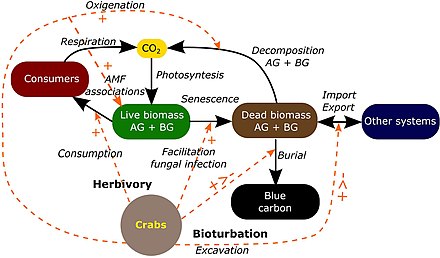
In spite of the effort to estimate global C storage and sequestration rates in salt marshes, there is a gap in data mostly from the southern hemisphere (Chmura, 2013; Ouyang and Lee, 2014). Given the enormous variability in CBR registered in salt marshes worldwide, global estimations calculated with the current data available is probably biased. There are not yet clear general patterns or a dominant process with enough evidence to account for this variability. Some of the main factors described to influence C sequestration in coastal wetland habitats are: local geomorphology, nutrient availability, hydroperiod, salinity, and suspended sediment supply. For instance, sediment grain size has recently found to be a good predictor of C storage in SE Australian salt marshes (Kelleway et al., 2016). There are also inherent characteristics to plant species that dominate within different salt marshes that are linked to the C burial capacity, such as allocation of plant parts, decomposition rates and primary productivity. These characteristics are, in turn, influenced by physical factors such as temperature, precipitation, tidal range, nutrients, and granulometry; as well as biological (plant competition, bioturbation, trophic cascades; McLeod et al., 2011). A previous study attempting to explain the variability in CBR was based on the type of halophyte dominating the salt marsh. In that analysis, Distichlis was found to have the lowest average CBR, while Spartina had the highest (Ouyang and Lee, 2014). However, when the data is carefully examined, both maximum and minimum CBR reported correspond to Spartina dominated salt marshes. This pattern suggests that there are more site specific characteristics to explain such a large variability related to the ecological functioning of each particular location.[6]
Although, burrowing and herbivorous organisms often inhabit vegetated coastal ecosystems, their effects on C stocks are scarcely known, but evidence shows that they can be relevant to Blue C studies. For instance, the activity of intertidal burrowing crabs (Ucides cordatus and Uca maracoani) enhance the decomposition of OM in the soil of Brazilian mangroves reducing up to 70% the total organic carbon (Araújo et al., 2012). In salt marshes in Cape Cod (Mass, USA), the crab Sesarma reticulatum increases erosion by burrowing near-water sediment and reduces plant biomass by herbivory (Coverdale et al., 2014). These two examples are evidence that the activity of these organisms reduce the capacity of these environments to bind C.[6]
References
[edit]- ^ a b . doi:10.3389/fevo.2019.00131.
{{cite journal}}: Cite journal requires|journal=(help); Missing or empty|title=(help)CS1 maint: unflagged free DOI (link) Material was copied from this source, which is available under a Creative Commons Attribution 4.0 International License.
Material was copied from this source, which is available under a Creative Commons Attribution 4.0 International License.
- ^ a b c d . doi:10.3390/jmse8100767.
{{cite journal}}: Cite journal requires|journal=(help); Missing or empty|title=(help)CS1 maint: unflagged free DOI (link) Material was copied from this source, which is available under a Creative Commons Attribution 4.0 International License.
Material was copied from this source, which is available under a Creative Commons Attribution 4.0 International License.
- ^ a b . doi:10.1371/journal.pone.0026798.
{{cite journal}}: Cite journal requires|journal=(help); Missing or empty|title=(help)CS1 maint: unflagged free DOI (link) Material was copied from this source, which is available under a Creative Commons Attribution 4.0 International License.
Material was copied from this source, which is available under a Creative Commons Attribution 4.0 International License.
- ^ . doi:10.1186/1756-3305-5-239.
{{cite journal}}: Cite journal requires|journal=(help); Missing or empty|title=(help)CS1 maint: unflagged free DOI (link) Material was copied from this source, which is available under a Creative Commons Attribution 2.0 International License.
Material was copied from this source, which is available under a Creative Commons Attribution 2.0 International License.
- ^ a b c d e f g h . doi:10.3389/fenvs.2019.00025.
{{cite journal}}: Cite journal requires|journal=(help); Missing or empty|title=(help)CS1 maint: unflagged free DOI (link) Material was copied from this source, which is available under a Creative Commons Attribution 4.0 International License.
Material was copied from this source, which is available under a Creative Commons Attribution 4.0 International License.
- ^ a b c d e f . doi:10.3389/fmars.2016.00122.
{{cite journal}}: Cite journal requires|journal=(help); Missing or empty|title=(help)CS1 maint: unflagged free DOI (link) Material was copied from this source, which is available under a Creative Commons Attribution 4.0 International License.
Material was copied from this source, which is available under a Creative Commons Attribution 4.0 International License.
Deep biosphere
[edit]The continental subsurface is suggested to contain a significant part of the earth’s total biomass. However, due to the difficulty of sampling, the deep subsurface is still one of the least understood ecosystems. Therefore, microorganisms inhabiting this environment might profoundly influence the global nutrient and energy cycles.[1]
Microbial life in the deep subsurface has been intensely studied over the last two decades, but the deep subsurface is still one of the least understood environments on earth. Investigations carried out in upper oceanic crust fluids (1–3), deeply buried marine sediments (4–6), terrestrial sedimentary rocks (7–9), and granitic groundwaters (10, 11) indicate that microorganisms are widespread. It is estimated that the deep continental subsurface contains from 1016 to 1017 g biomass carbon (12, 13), and a critical question for these highly oligotrophic environments is which of these microorganisms are active or dormant (14).[1]
High-throughput sequencing allows for reconstruction of entire microbial communities, and its application for metatranscriptomics provides the means for tracking the metabolic activity of microbial communities as they occur in nature (27). Studies of microbial metabolic activity in marine deep sea sediments via metatranscriptomics have revealed that the collective activity of the subsurface microbiota differs according to sediment depth, organic matter age, and geochemical zones (28, 29).[1]
Despite the suggested importance of the deep biosphere for global biogeochemical cycles and anthropogenic activities, difficulties in obtaining valid samples have resulted in poor understanding of the metabolic activities of biota in the crystalline rock deep biosphere.[1]
An enormous diversity of previously unknown bacteria and archaea has been discovered recently, yet their functional capacities and distributions in the terrestrial subsurface remain uncertain... Much remains to be learned about how microbial communities in the deep terrestrial subsurface vary with depth due to limited access to samples without contamination from drilling fluids or sampling equipment. Studies to date have analysed samples acquired by drilling1,2,3, from deep mines4,5, subsurface research laboratories6,7 and sites of groundwater discharge8,9,10,11. These investigations have shown that the terrestrial subsurface is populated by a vast array of previously undescribed archaea and bacteria. At one site, an aquifer in Colorado (Rifle, USA), the diversity spans much of the tree of life12 and includes organisms of the Candidate Phyla Radiation (CPR)13, which may comprise more than 50% of all bacterial diversity14, and many other previously undescribed bacterial lineages.[2]
Archaea and Bacteria are critical components of deep groundwater ecosystems that host all domains of life as well as viruses1,2,3,4. With estimated total abundances of 5 × 1027cells5,6, they are constrained by factors such as bedrock lithology, available electron donors and acceptors, depth, and hydrological isolation from the photosynthesis-fueled surface6,7. The limited number of access points to study these environments render our knowledge of deep groundwaters too patchy for robustly addressing eco-evolutionary questions. Consequently, ecological strategies and factors influencing the establishment and propagation of the deep groundwater microbiome, along with its comprehensive diversity, metabolic context, and adaptations remain elusive.[3]
The deeply disconnected biosphere environments are subject to constant and frequent selection hurdles, which define not only the composition of the resident community, but more importantly also its strategies to cope with episodic availability of nutrients and reducing agents.Cite error: A <ref> tag is missing the closing </ref> (see the help page).
Microorganisms play a crucial role in mediating global biogeochemical cycles in the marine environment. By reconstructing the genomes of environmental organisms through metagenomics, researchers are able to study the metabolic potential of Bacteria and Archaea that are resistant to isolation in the laboratory.... The global oceans are a vast environment in which many key biogeochemical cycles are performed by microorganisms, specifically the Bacteria and Archaea1,2. Assessing the role of individual microorganisms has been confounded due to limitations in growing and maintaining ‘wild’ organisms in the laboratory environment3. The advent of ‘-omic’ techniques, metagenomics, metatranscriptomics, metaproteomics, and metabolomics, has provided an avenue for exploring microbial diversity and function by skipping the necessity of culturing organisms, thus allowing researchers to study organisms for which growth conditions cannot be replicated. Specifically, the application of metagenomics, the sampling and sequencing of genetic material directly from environment, provides an avenue for reconstructing the genomic sequences of environmental Bacteria and Archaea4–7.[4]
Marine microbes play a crucial role in climate regulation, biogeochemical cycles, and trophic networks... Planktonic organisms play an essential role in biogeochemical cycles through the capture and export of carbon into the deep ocean, nitrogen fixation, remineralization of organic matter, or the production of dimethyl-sulfur, hence impacting global climate1,2,3,4,5. The understanding and modeling of such biogeochemical functions is key for predicting the global functioning of oceanic ecosystems, and especially their response to climate change6,7,8. These biogeochemical functions are usually modeled by simulating the dynamics of plankton functional types (PFT) that are theoretical entities grouping planktonic organisms according to shared functional capacities (e.g., calcifiers, nitrogen fixers, or silicifiers)6. This approach allows to incorporate the functional diversity of marine plankton into biogeochemical models8,9,10,11 but often relies on a priori and restricted choices of the considered types of planktonic organisms and of their physiological rates or parameters12. For example, bacteria are often lacking an explicit representation in global PFT models9,11, even though more than 1030 bacterial cells inhabit the ocean’s subsurface3. To tackle this issue, recent works proposed to switch towards data-driven modeling of planktonic communities and their impact on the environment, notably through the use of high-throughput sequencing data10,13,14,15,16.[5]
Next-generation sequencing technologies have led to significant advances in the knowledge of the taxonomic and functional diversity of planktonic organisms5,17,18. Bioinformatics workflows allow the assembly of metagenome-assembled genomes (MAGs), which are near-complete genomes retrieved from DNA fragments coming from environmentally sequenced individuals of one or a few closely related populations19,20,21,22. MAGs can be taxonomically annotated using multi-marker gene approaches, and organism-level functional profiles can be drawn from their genomic content19,20,21. Reads from environmental meta-omics datasets can also be mapped to their reconstructed sequences to obtain abundance measurements both at MAG and single protein level21,22,23. MAGs can be considered as representative of the genetic potential of natural populations, hence allowing to retrieval of genomes of cultivable, uncultivable, or even unknown species present in the environment. They constitute a promising tool for investigating as a whole the functional potential of known and unknown planktonic life forms.[5]
- "Co-culture and biogeography of Prochlorococcus and SAR11"
Prochlorococcus and SAR11 are among the smallest and most abundant organisms on Earth. With a combined global population of about 2.7 × 1028 cells, they numerically dominate bacterioplankton communities in oligotrophic ocean gyres and yet they have never been grown together in vitro. Here we describe co-cultures of Prochlorococcus and SAR11 isolates representing both high- and low-light adapted clades...[6]
The global ocean is numerically dominated by Prochlorococcus and SAR11 (Pelagibacterales). Prochlorococcus, a cyanobacterium, is the most abundant primary producer in tropical and subtropical waters, where its estimated 2.9 × 1027 cells produce ca. 4 Gt of organic carbon annually [1]. As such, they support a notable fraction of the secondary production in these nutrient-poor waters [2]. Members of the alphaproteobacteria known as SAR11 are found throughout the marine environment with an estimated global abundance of 2.4 × 1028 cells, about half of which are in the euphotic zone [3]. Prochlorococcus and SAR11 together have been estimated to comprise roughly 40–60% of the total bacteria in oligotrophic surface waters at Station ALOHA in the North Pacific [4].[6]
Since its discovery three decades ago, Prochlorococcus has emerged as a powerful model organism for microbial ecology [5]. Its ecotype diversity is well-characterized [6,7,8,9] and there is an increasing wealth of genomic, transcriptomic, and proteomic information applied to this group [10,11,12]. The discovery of SAR11 a few years later further advanced our understanding of microbial ecology and evolution in the oligotrophic ocean [13, 14]. SAR11 possesses many traits that highlight adaptations to the oligotrophic marine environment, including a small genome size [15, 16] and unique metabolic dependencies [17,18,19,20] partitioned among diverse ecotypes with distinct biogeography [21,22,23,24].[6]
In addition to having large population sizes consisting of genetically distinct ecotypes, or clades, Prochlorococcus and SAR11 have adapted to their oligotrophic habitat by minimizing their genome content and metabolic versatility. SAR11 and high-light adapted Prochlorococcus have small cell sizes between 0.2 and 0.8 microns in diameter, small genomes (1.2–1.8 Mb) with low guanine-cytosine content (29–32%GC) [10, 15], and fewer regulatory σ-factors than would be predicted from the size of their genomes [25].[6]
- "Globally Consistent Quantitative Observations of Planktonic Ecosystems". <==== FOLLOW UP =============================<<<<<<<<<<<<<<
In this paper we review the technologies available to make globally quantitative observations of particles in general—and plankton in particular—in the world oceans, and for sizes varying from sub-microns to centimeters. Some of these technologies have been available for years while others have only recently emerged. Use of these technologies is critical to improve understanding of the processes that control abundances, distributions and composition of plankton, provide data necessary to constrain and improve ecosystem and biogeochemical models, and forecast changes in marine ecosystems in light of climate change. In this paper we begin by providing the motivation for plankton observations, quantification and diversity qualification on a global scale. We then expand on the state-of-the-art, detailing a variety of relevant and (mostly) mature technologies and measurements, including bulk measurements of plankton, pigment composition, uses of genomic, optical and acoustical methods as well as analysis using particle counters, flow cytometers and quantitative imaging devices. We follow by highlighting the requirements necessary for a plankton observing system, the approach to achieve it and associated challenges... [7]
- ^ a b c d . doi:110.1128/mBio.01792-18.
{{cite journal}}: Check|doi=value (help); Cite journal requires|journal=(help); Missing or empty|title=(help) Material was copied from this source, which is available under a Creative Commons Attribution 4.0 International License.
Material was copied from this source, which is available under a Creative Commons Attribution 4.0 International License.
- ^ . doi:10.1038/s41564-017-0098-y.
{{cite journal}}: Cite journal requires|journal=(help); Missing or empty|title=(help) Material was copied from this source, which is available under a Creative Commons Attribution 4.0 International License.
Material was copied from this source, which is available under a Creative Commons Attribution 4.0 International License.
- ^ . doi:10.1038/s41467-021-24549-z.
{{cite journal}}: Cite journal requires|journal=(help); Missing or empty|title=(help) Material was copied from this source, which is available under a Creative Commons Attribution 4.0 International License.
Material was copied from this source, which is available under a Creative Commons Attribution 4.0 International License.
- ^ . doi:10.1038/sdata.2017.203.
{{cite journal}}: Cite journal requires|journal=(help); Missing or empty|title=(help) Material was copied from this source, which is available under a Creative Commons Attribution 4.0 International License.
Material was copied from this source, which is available under a Creative Commons Attribution 4.0 International License.
- ^ a b . doi:10.1038/s41467-021-24547-1.
{{cite journal}}: Cite journal requires|journal=(help); Missing or empty|title=(help) Material was copied from this source, which is available under a Creative Commons Attribution 4.0 International License.
Material was copied from this source, which is available under a Creative Commons Attribution 4.0 International License.
- ^ a b c d . doi:10.1038/s41396-019-0365-4.
{{cite journal}}: Cite journal requires|journal=(help); Missing or empty|title=(help) Material was copied from this source, which is available under a Creative Commons Attribution 4.0 International License.
Material was copied from this source, which is available under a Creative Commons Attribution 4.0 International License.
- ^ . doi:10.3389/fmars.2019.00196.
{{cite journal}}: Cite journal requires|journal=(help); Missing or empty|title=(help)CS1 maint: unflagged free DOI (link) Material was copied from this source, which is available under a Creative Commons Attribution 4.0 International License.
Material was copied from this source, which is available under a Creative Commons Attribution 4.0 International License.


![A typical square-rigged caravel (Livro das Armadas)]]](http://up.wiki.x.io/wikipedia/commons/thumb/9/9c/Caravela_de_armada_of_Joao_Serrao.jpg/285px-Caravela_de_armada_of_Joao_Serrao.jpg)




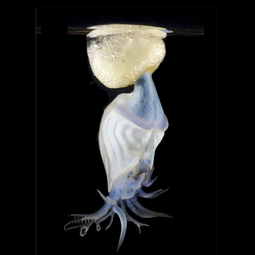

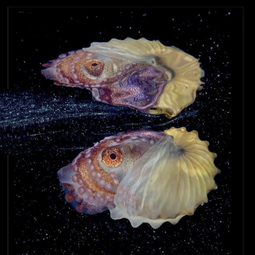
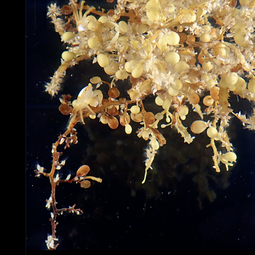
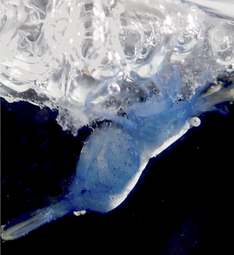
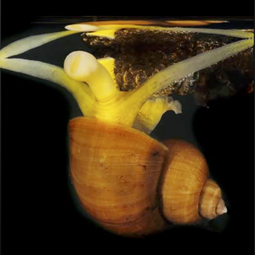
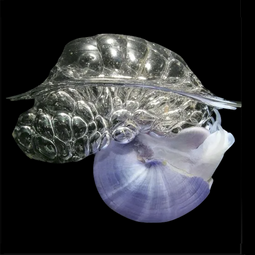
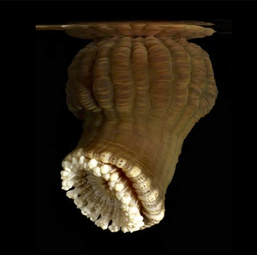





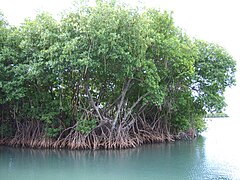


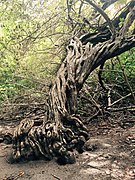


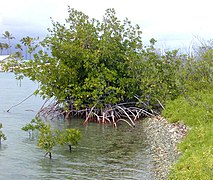
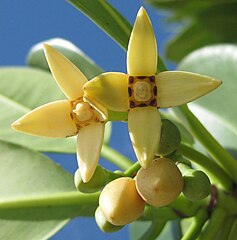
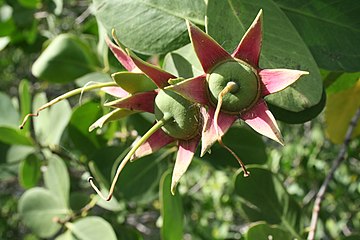









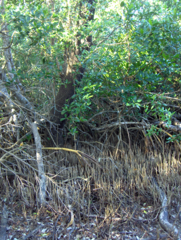
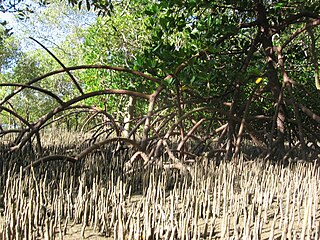

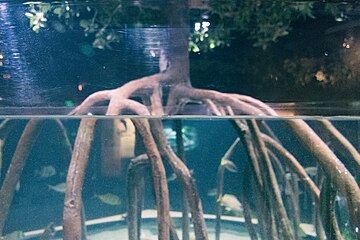
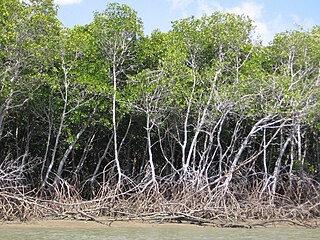
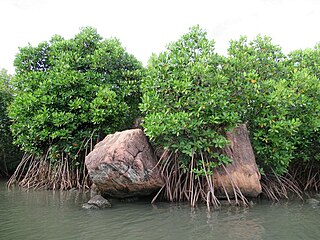





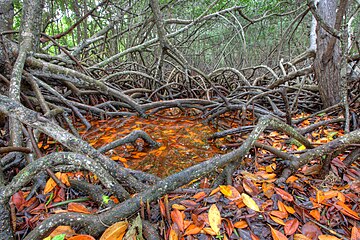

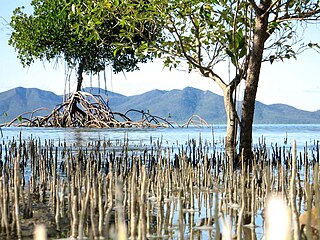
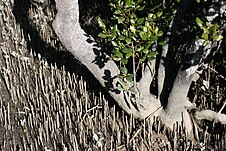

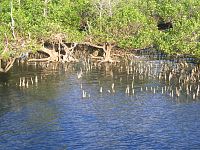







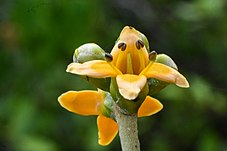
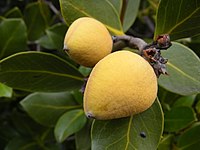


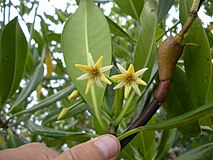
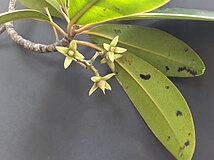

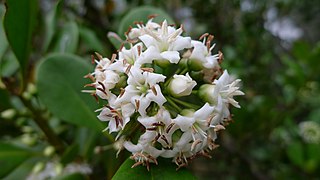

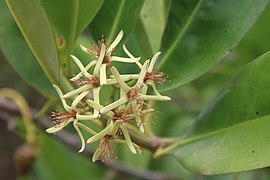
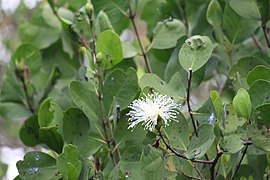

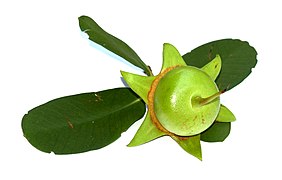




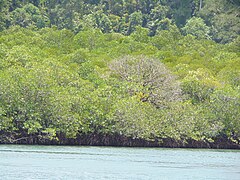





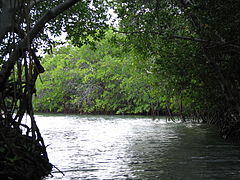







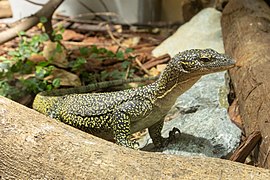
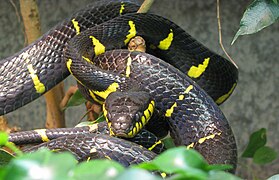


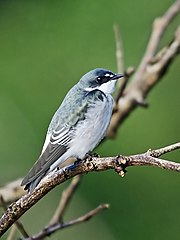



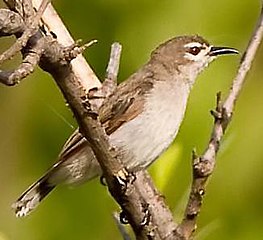
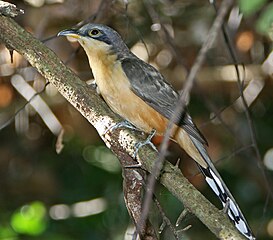

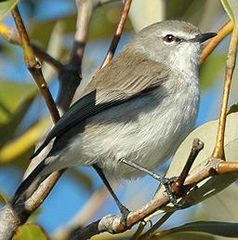
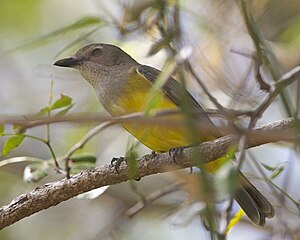
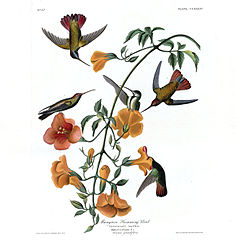












![Brown pelican]] in a mangrove swamp](http://up.wiki.x.io/wikipedia/commons/thumb/6/6f/Brown_pelican_in_a_mangrove_swamp.jpg/360px-Brown_pelican_in_a_mangrove_swamp.jpg)


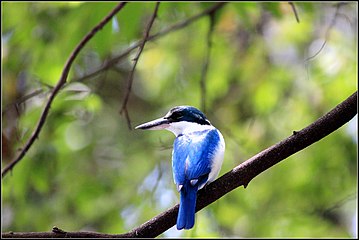


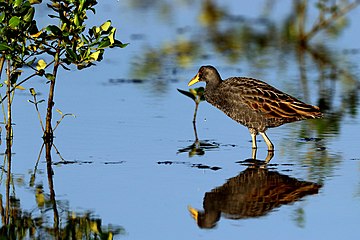


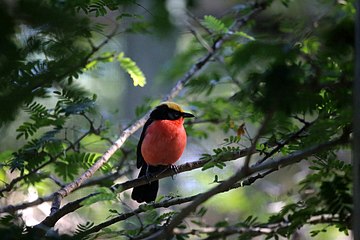


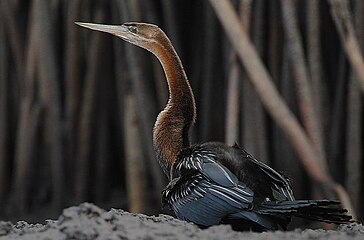


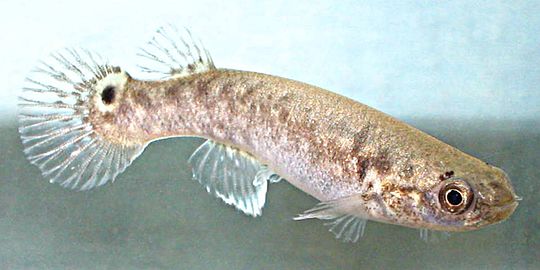
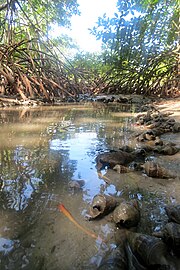


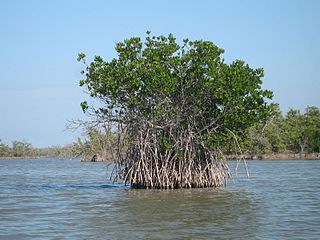
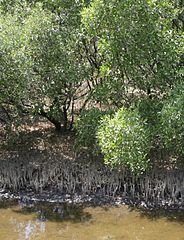
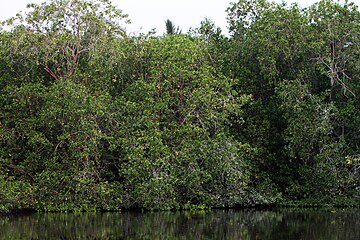
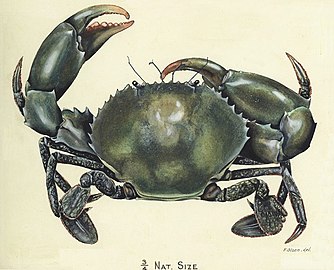



![Interfaces between coastline salt water and fresh water [5]](http://up.wiki.x.io/wikipedia/commons/thumb/0/0d/Interfaces_between_coastline_salt_water_and_fresh_water.jpg/335px-Interfaces_between_coastline_salt_water_and_fresh_water.jpg)
![Pattern and causes of marsh expansion into a forest [5]](http://up.wiki.x.io/wikipedia/commons/thumb/8/8b/Pattern_and_causes_of_marsh_expansion_into_a_forest.jpg/668px-Pattern_and_causes_of_marsh_expansion_into_a_forest.jpg)
![Model of ecological ratchet [5]](http://up.wiki.x.io/wikipedia/commons/thumb/5/55/Proposed_conceptual_model_of_ecological_ratchet.jpg/197px-Proposed_conceptual_model_of_ecological_ratchet.jpg)
![Ecological ratchet model of marsh migration in a forest [5]](http://up.wiki.x.io/wikipedia/commons/thumb/b/b8/Ecological_ratchet_model_of_marsh_migration_in_a_forest.jpg/373px-Ecological_ratchet_model_of_marsh_migration_in_a_forest.jpg)